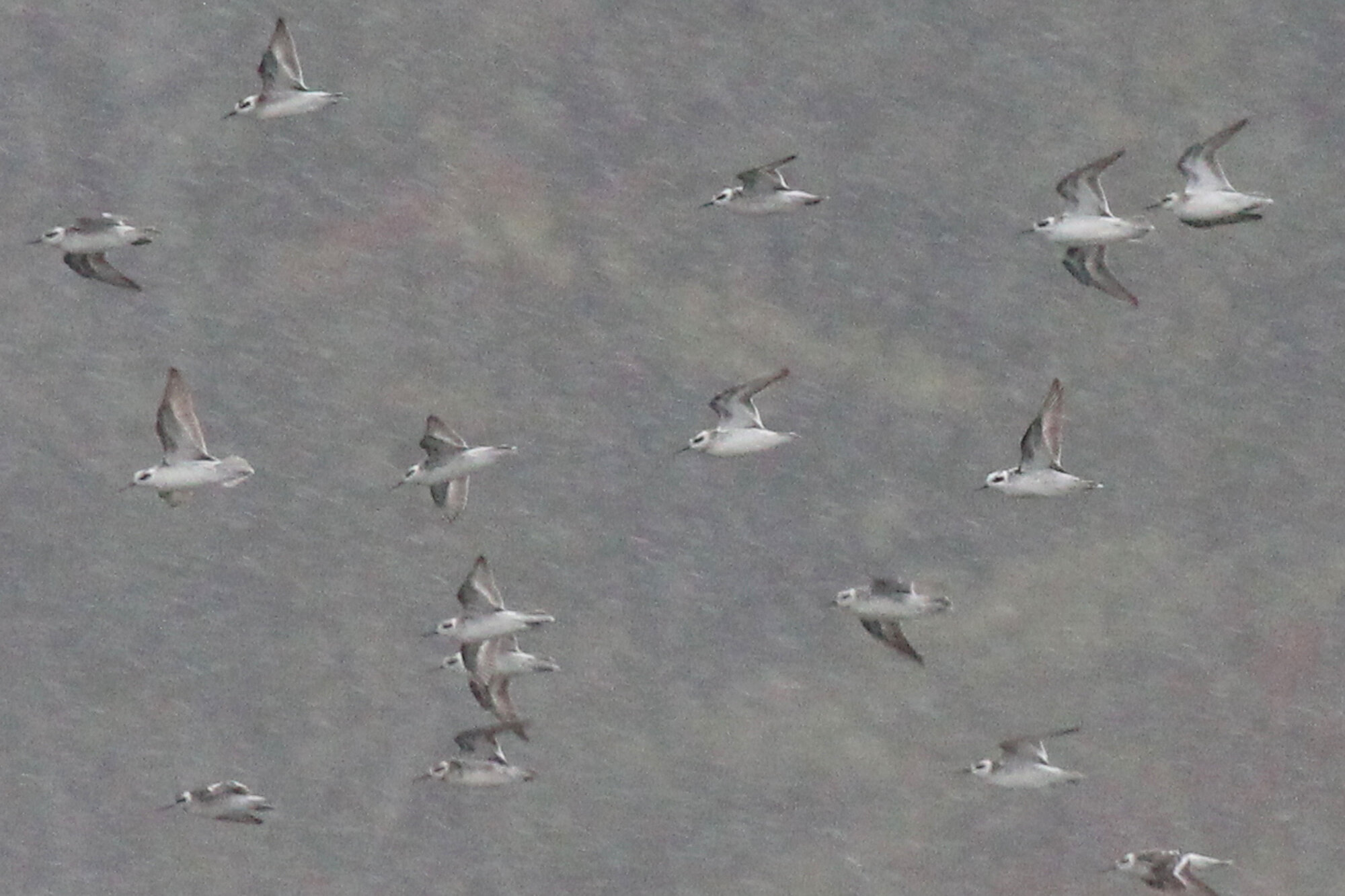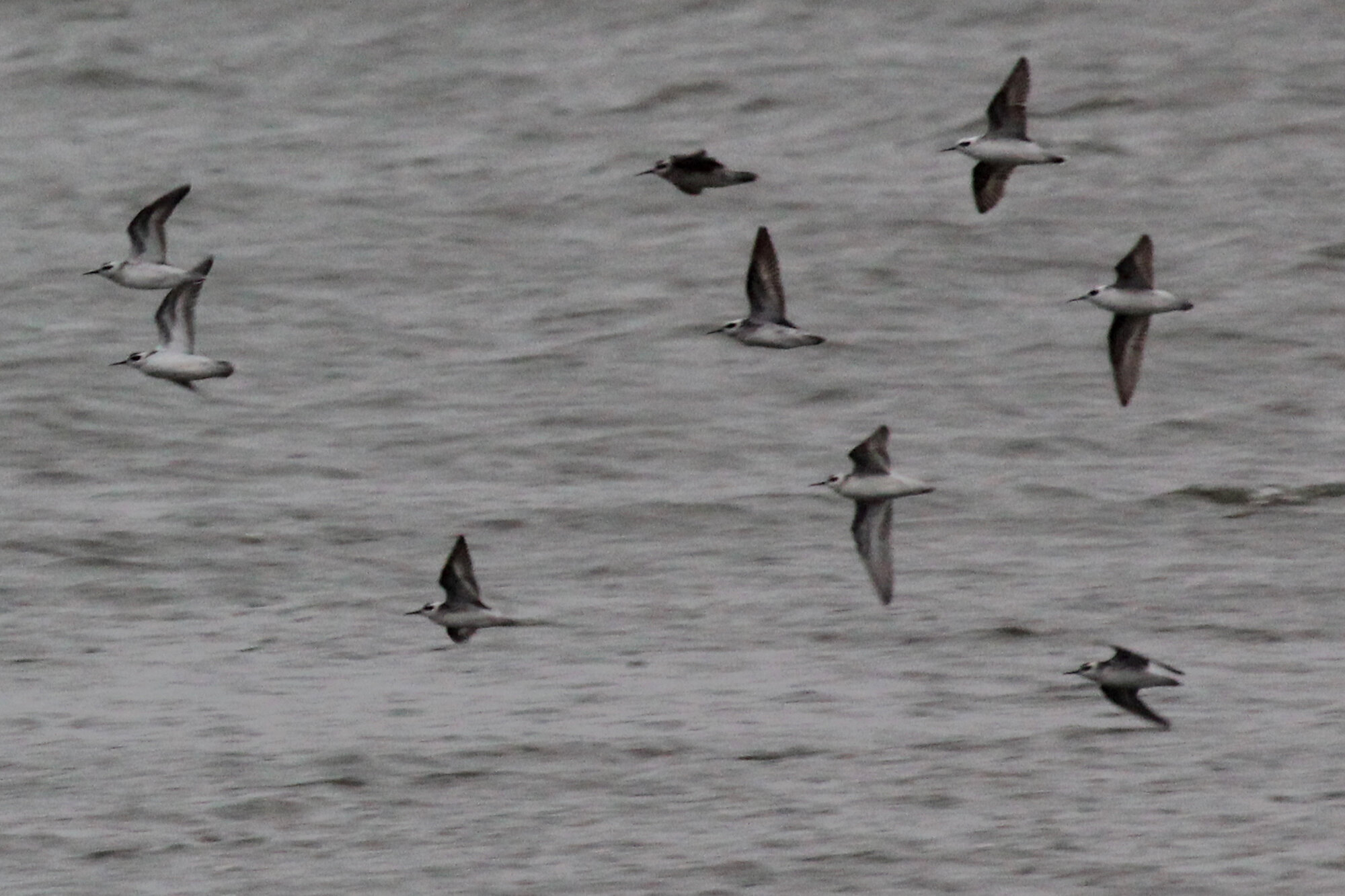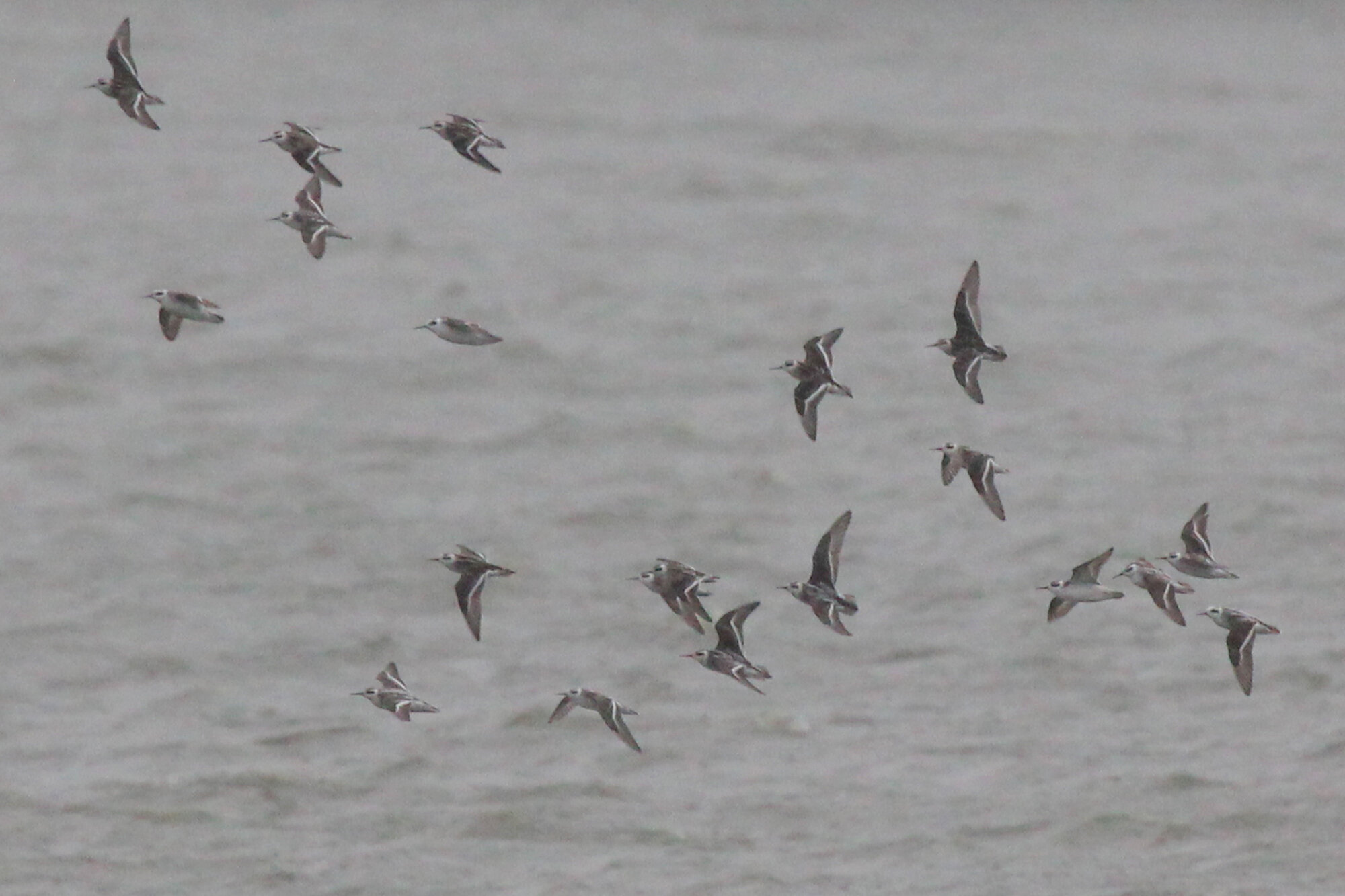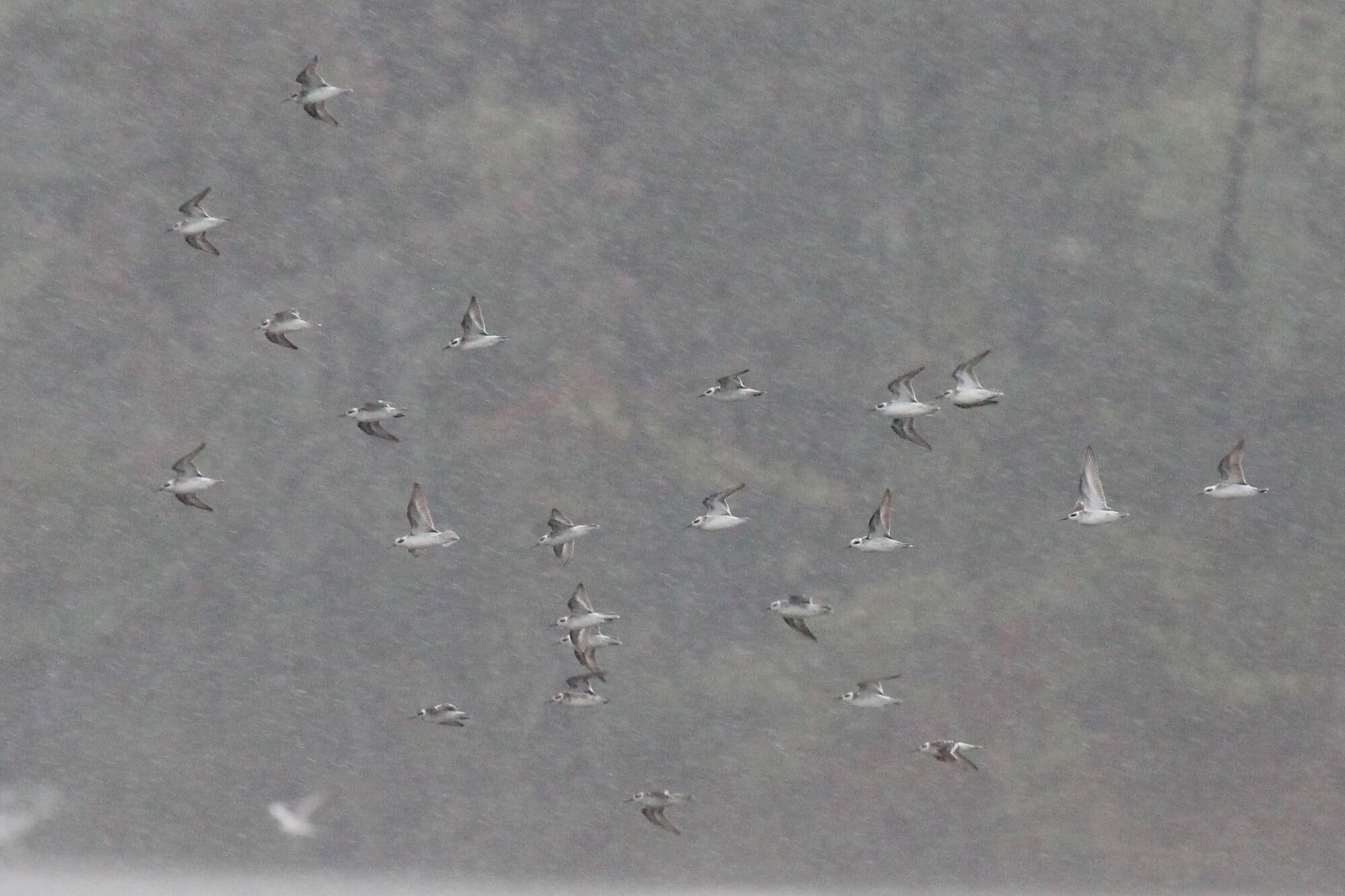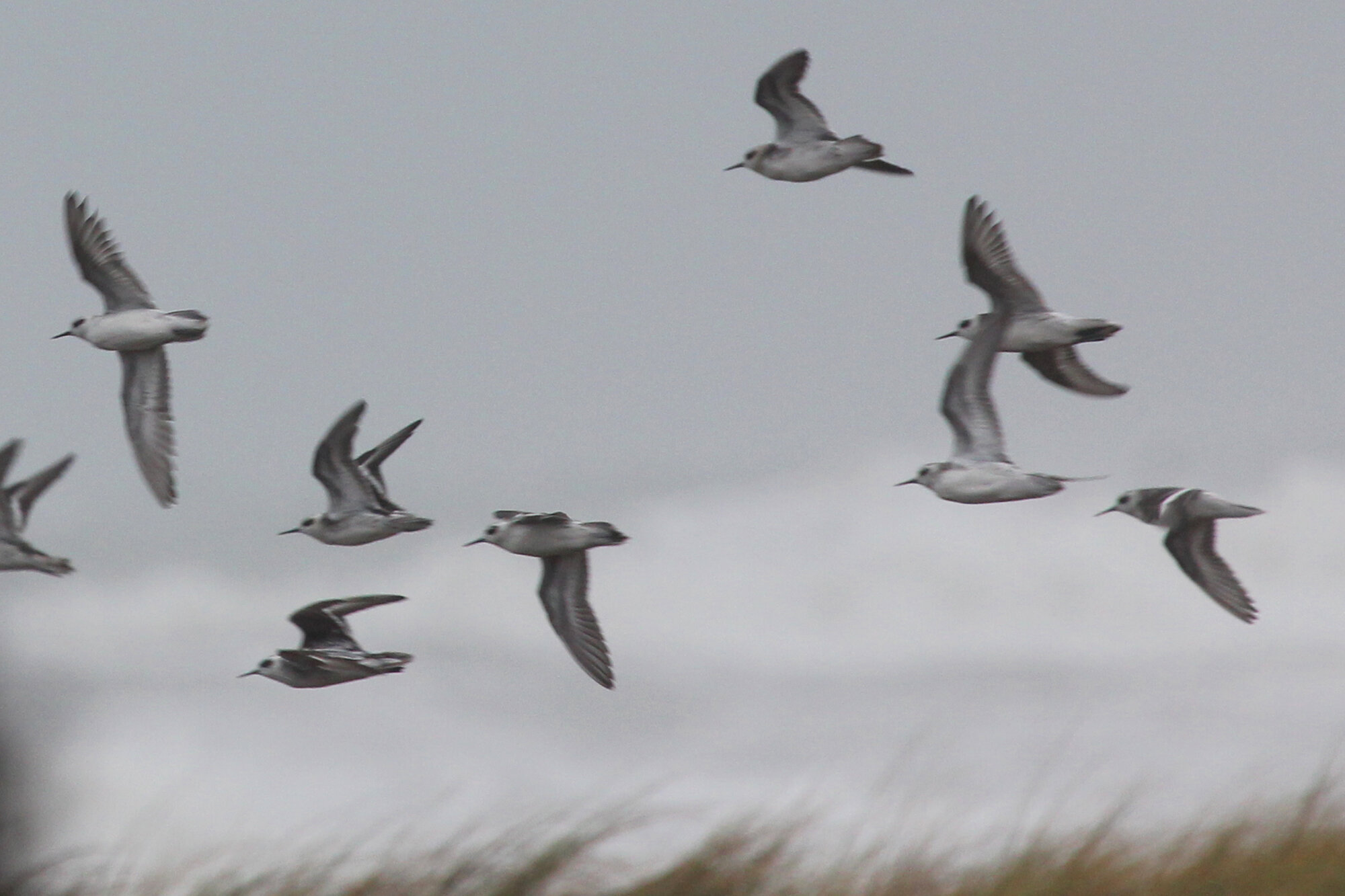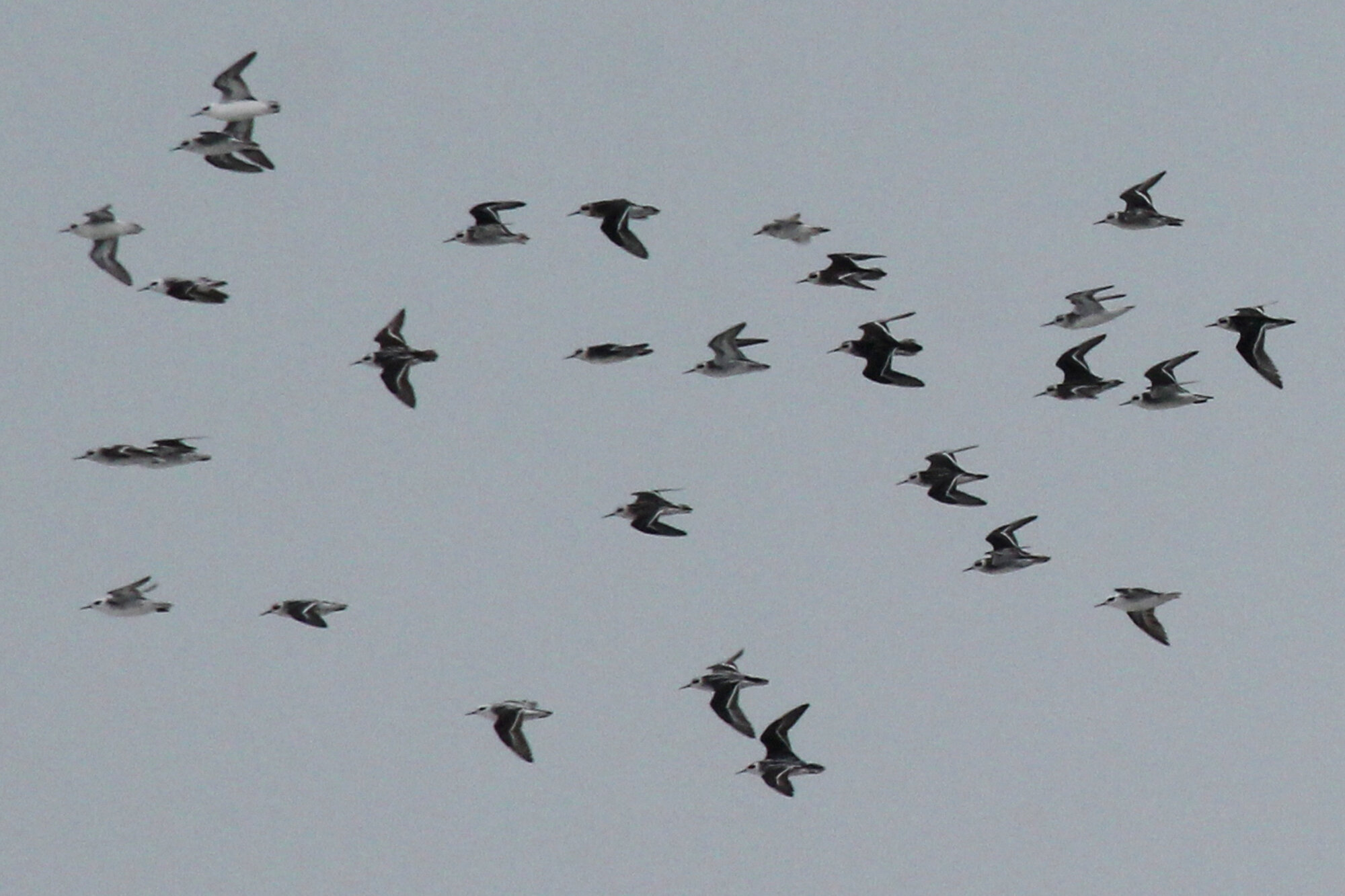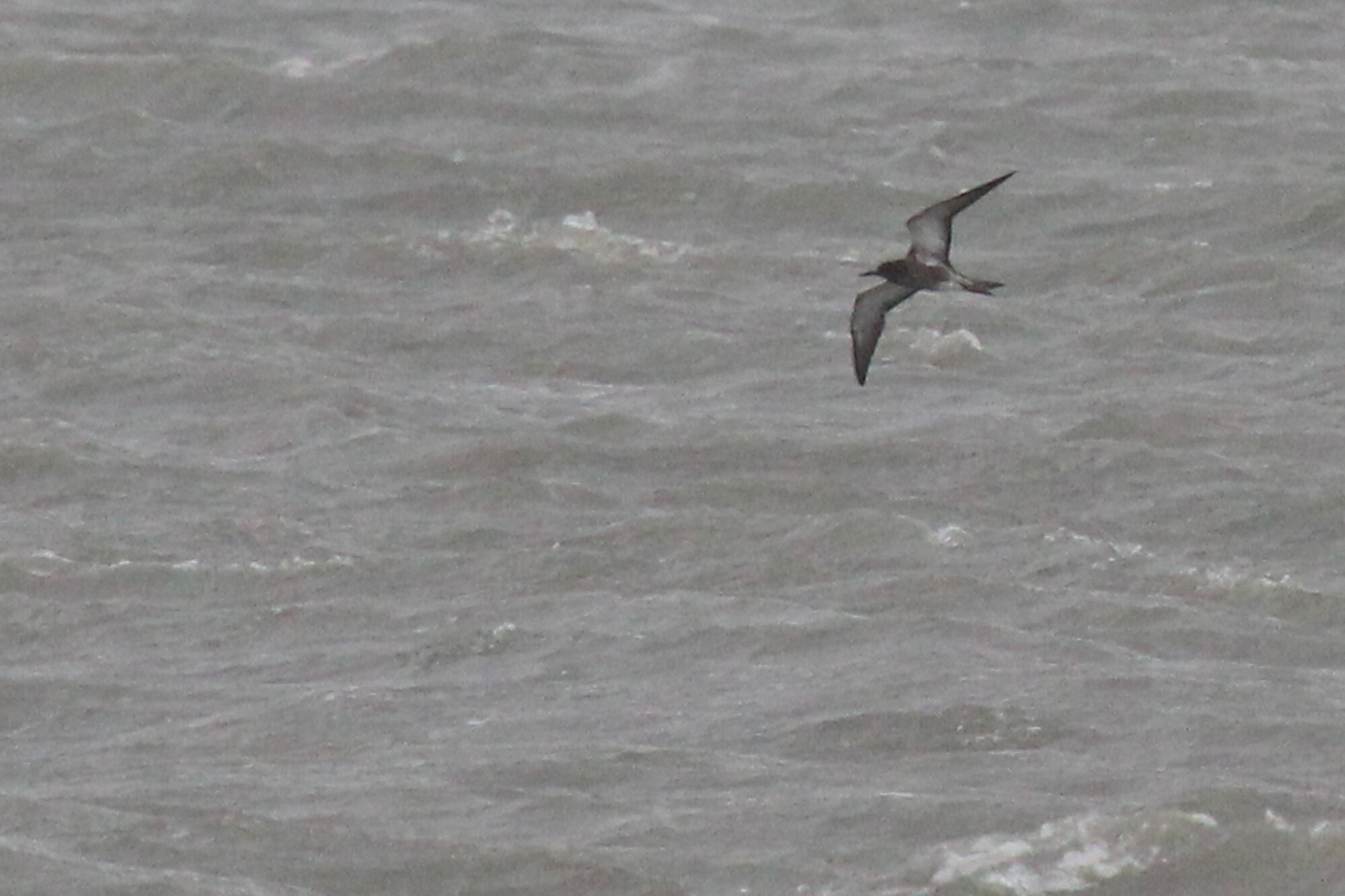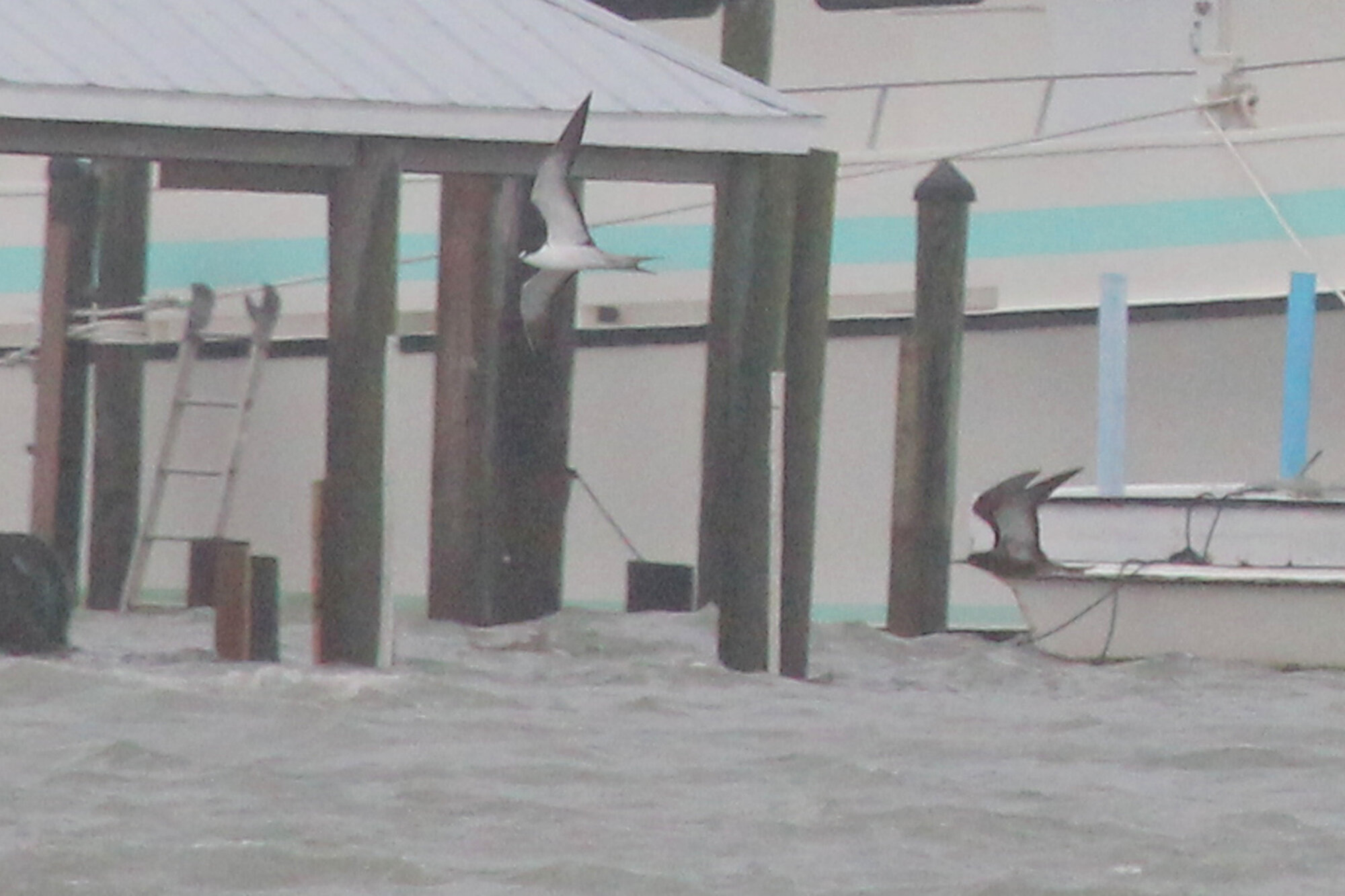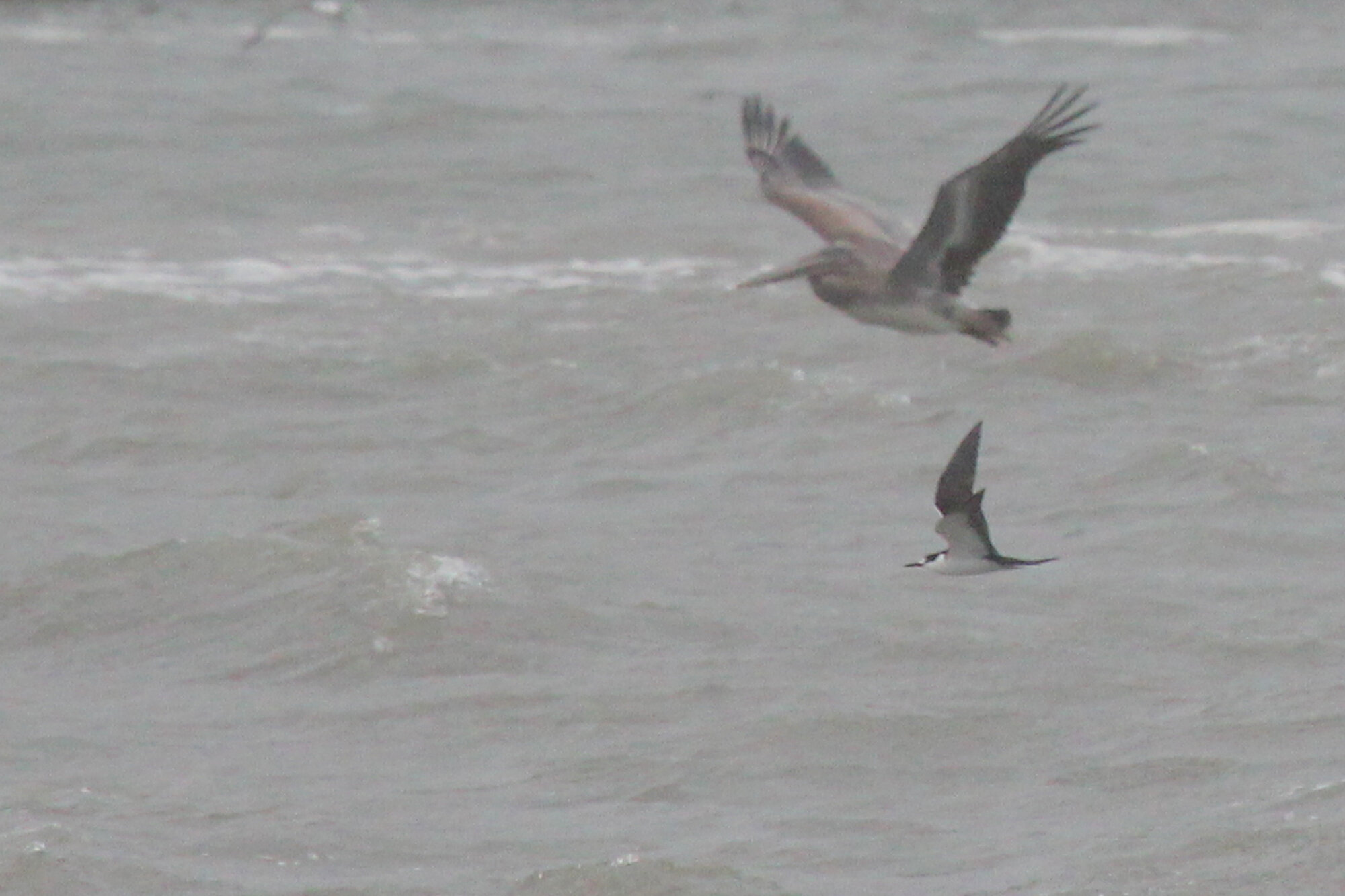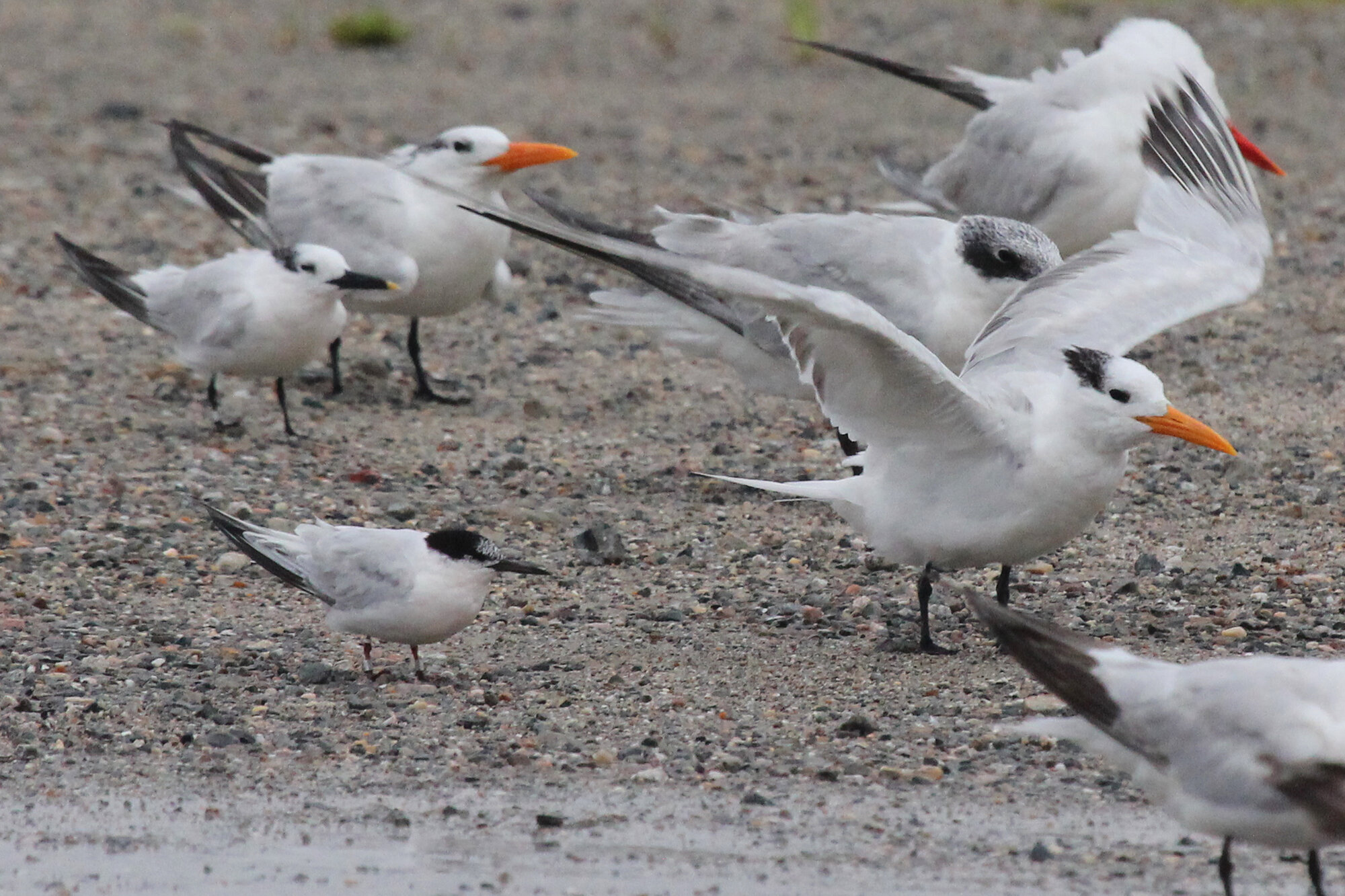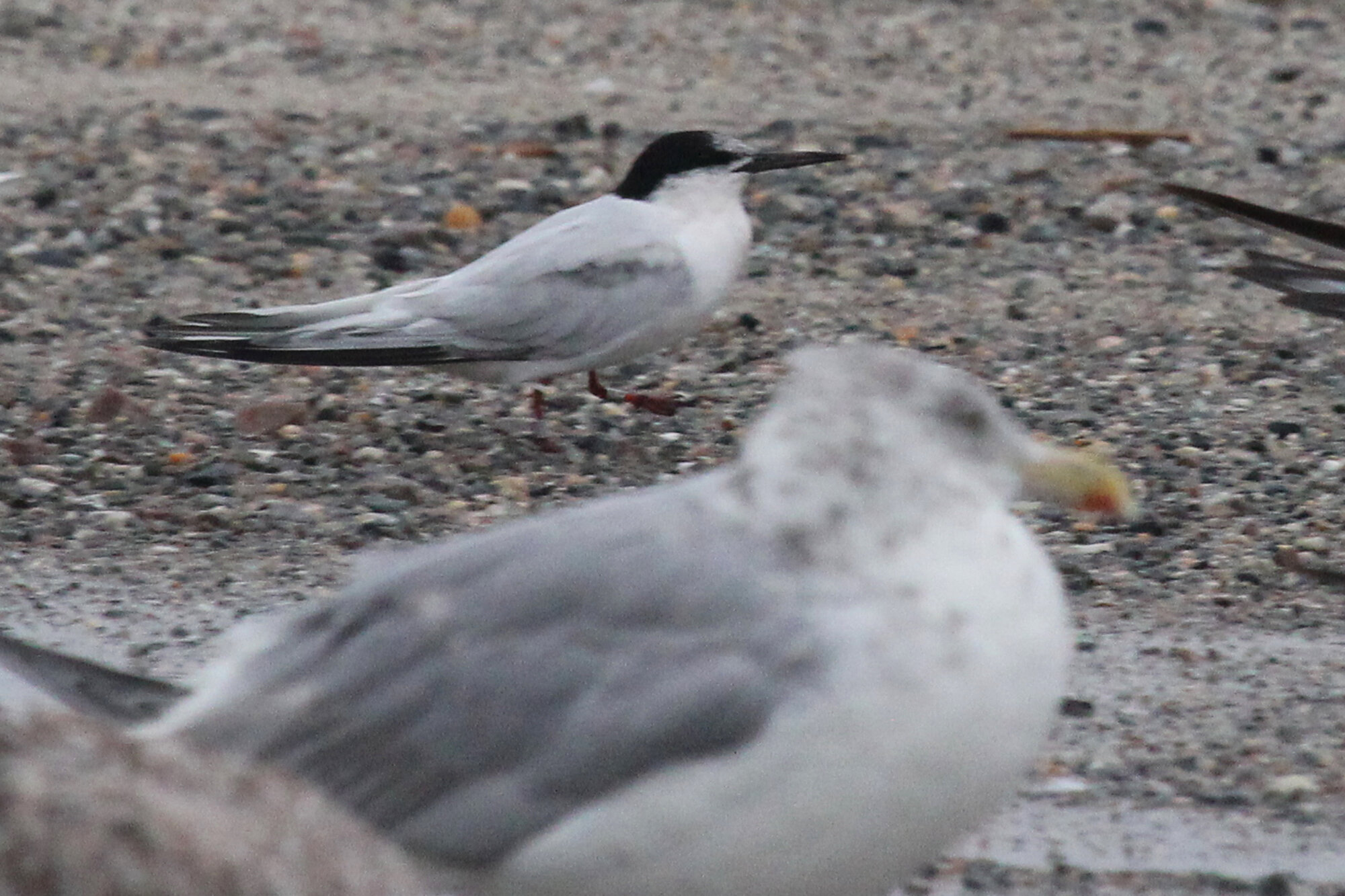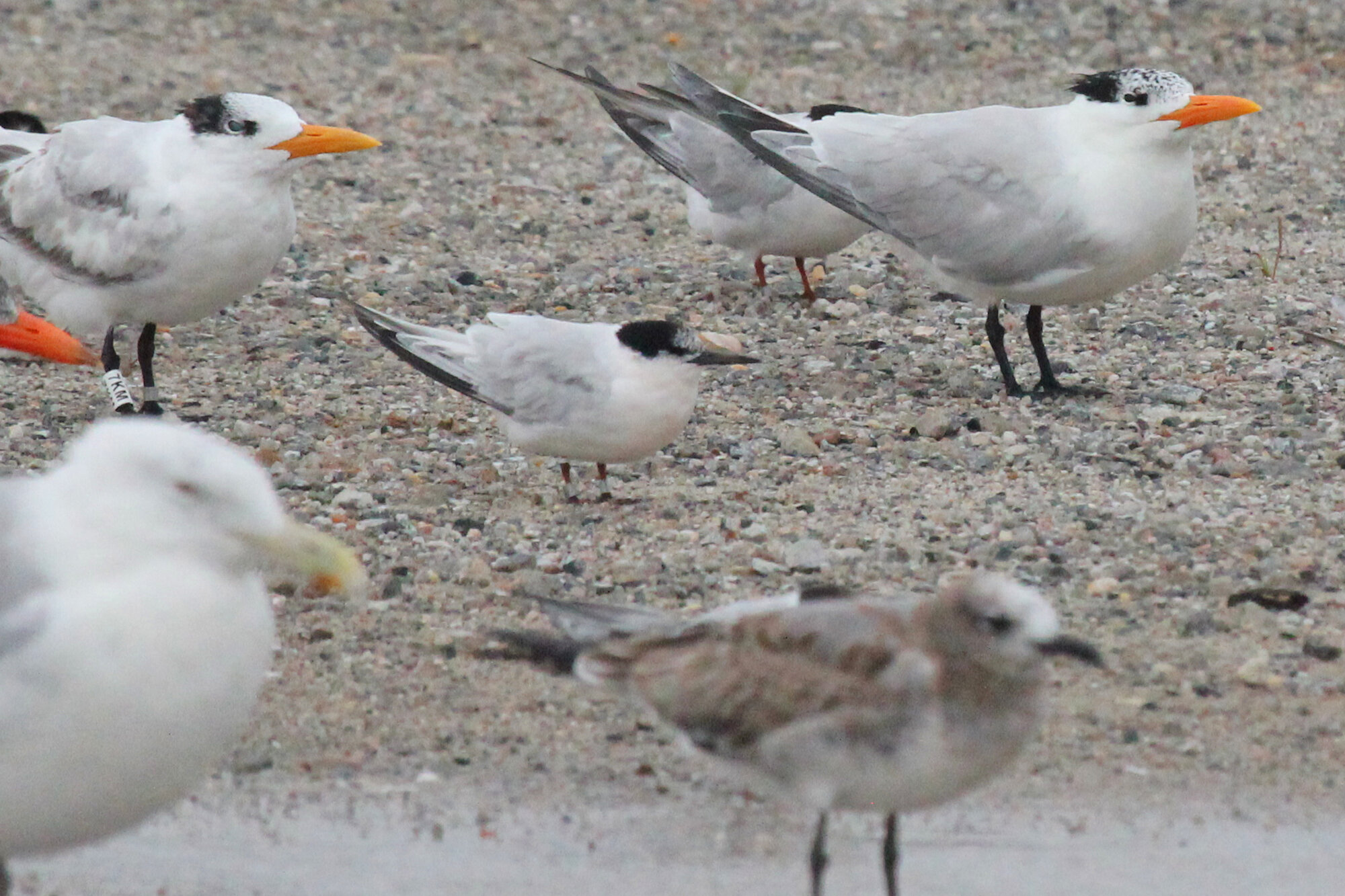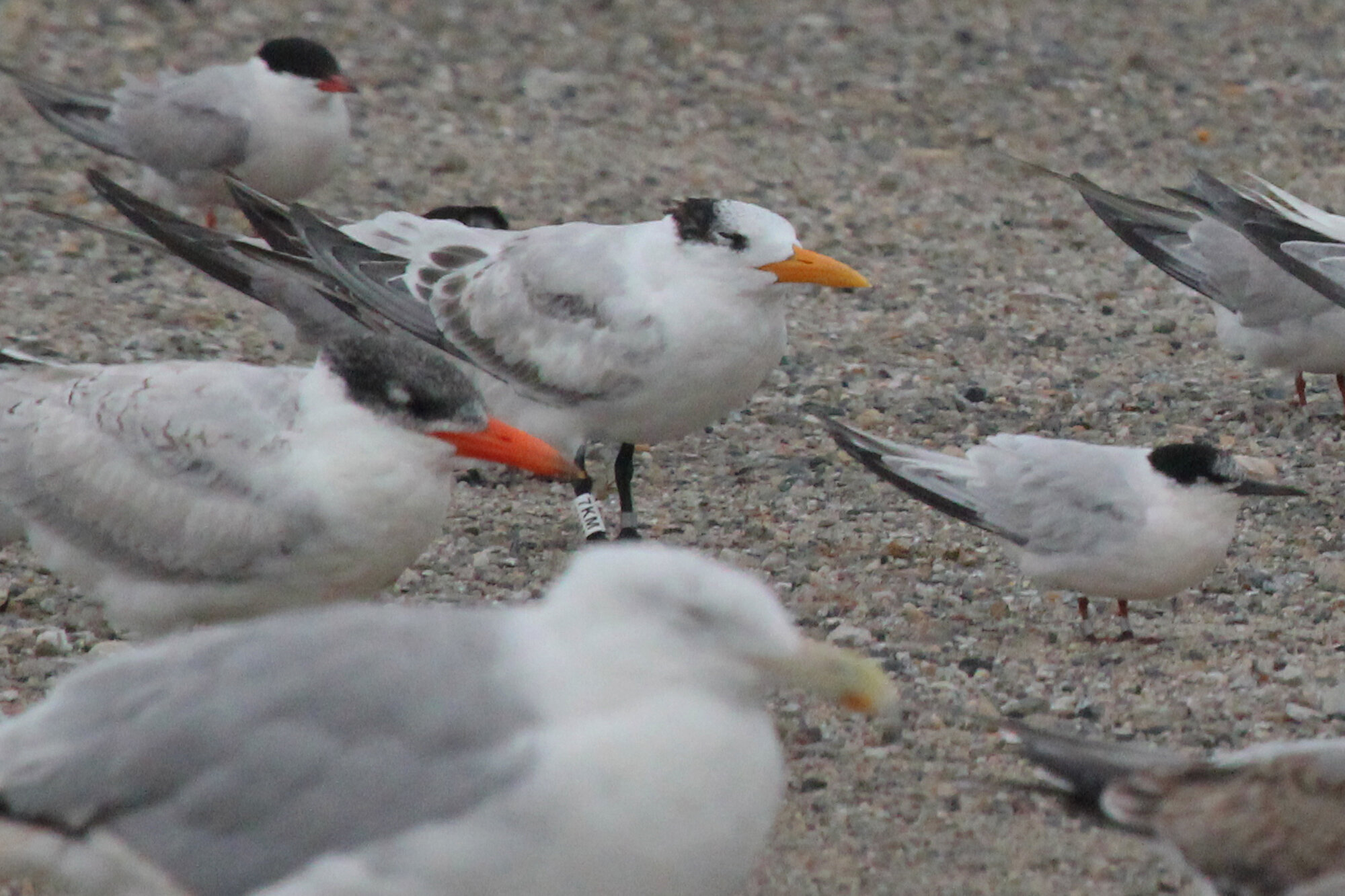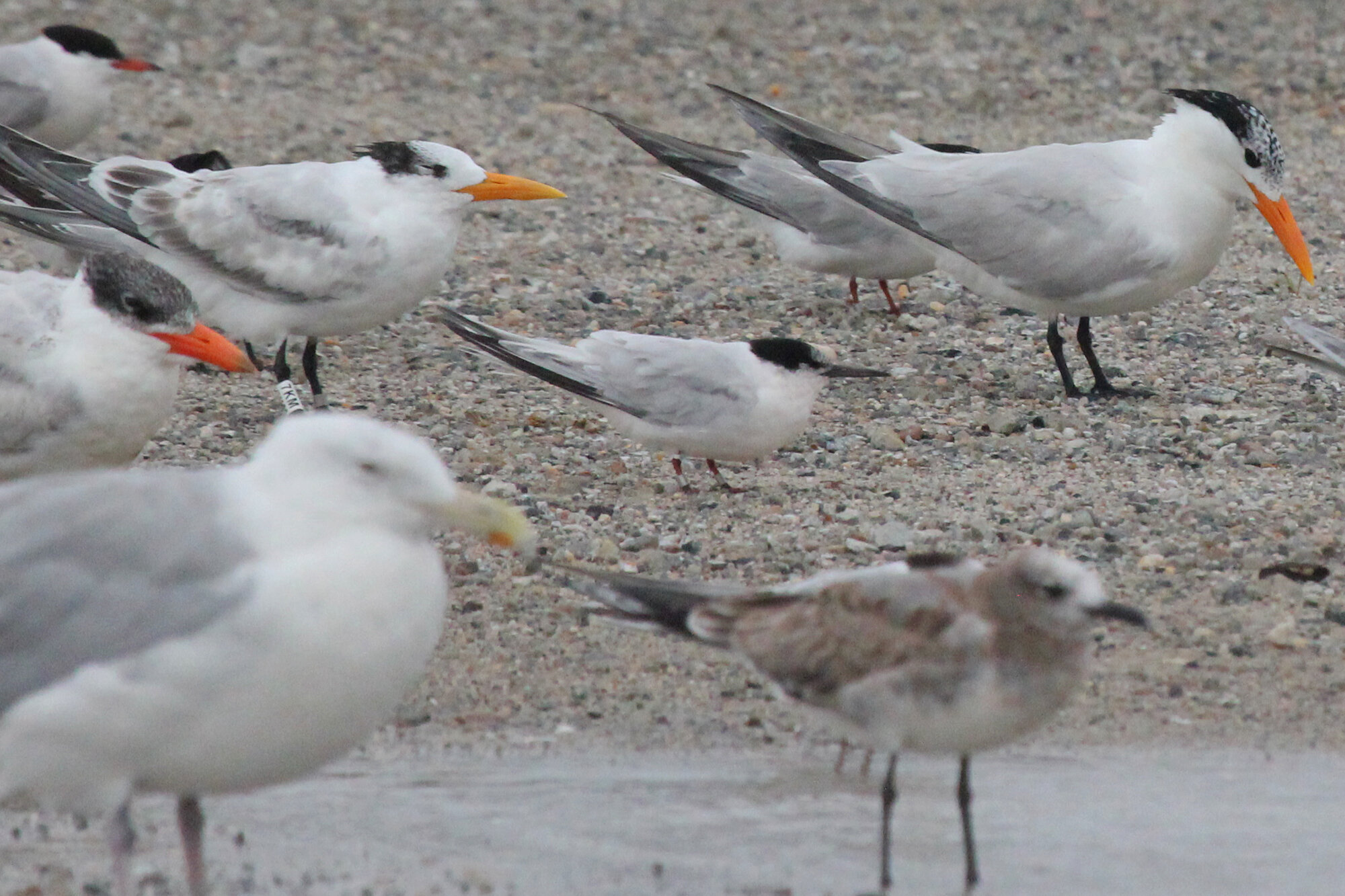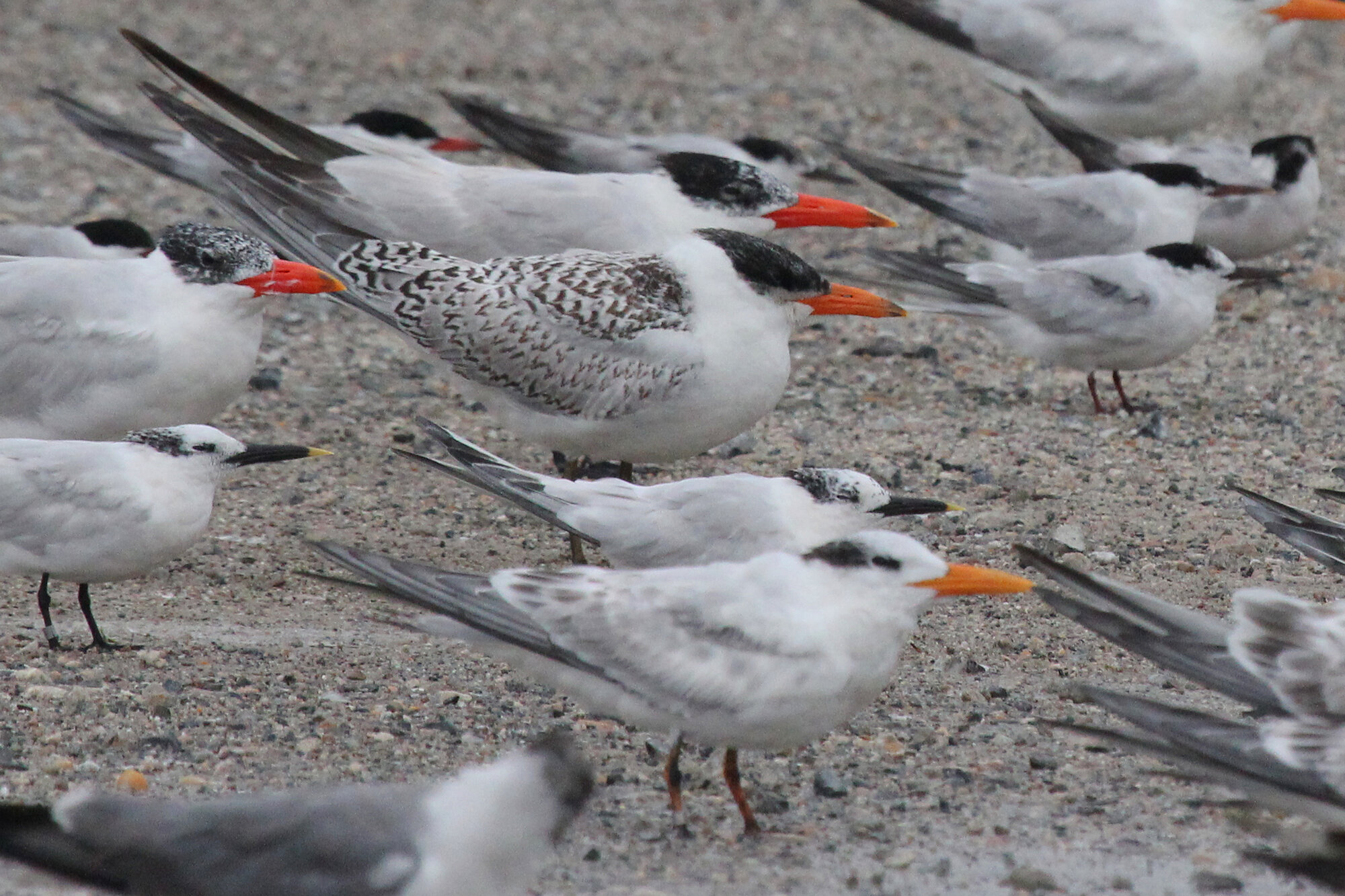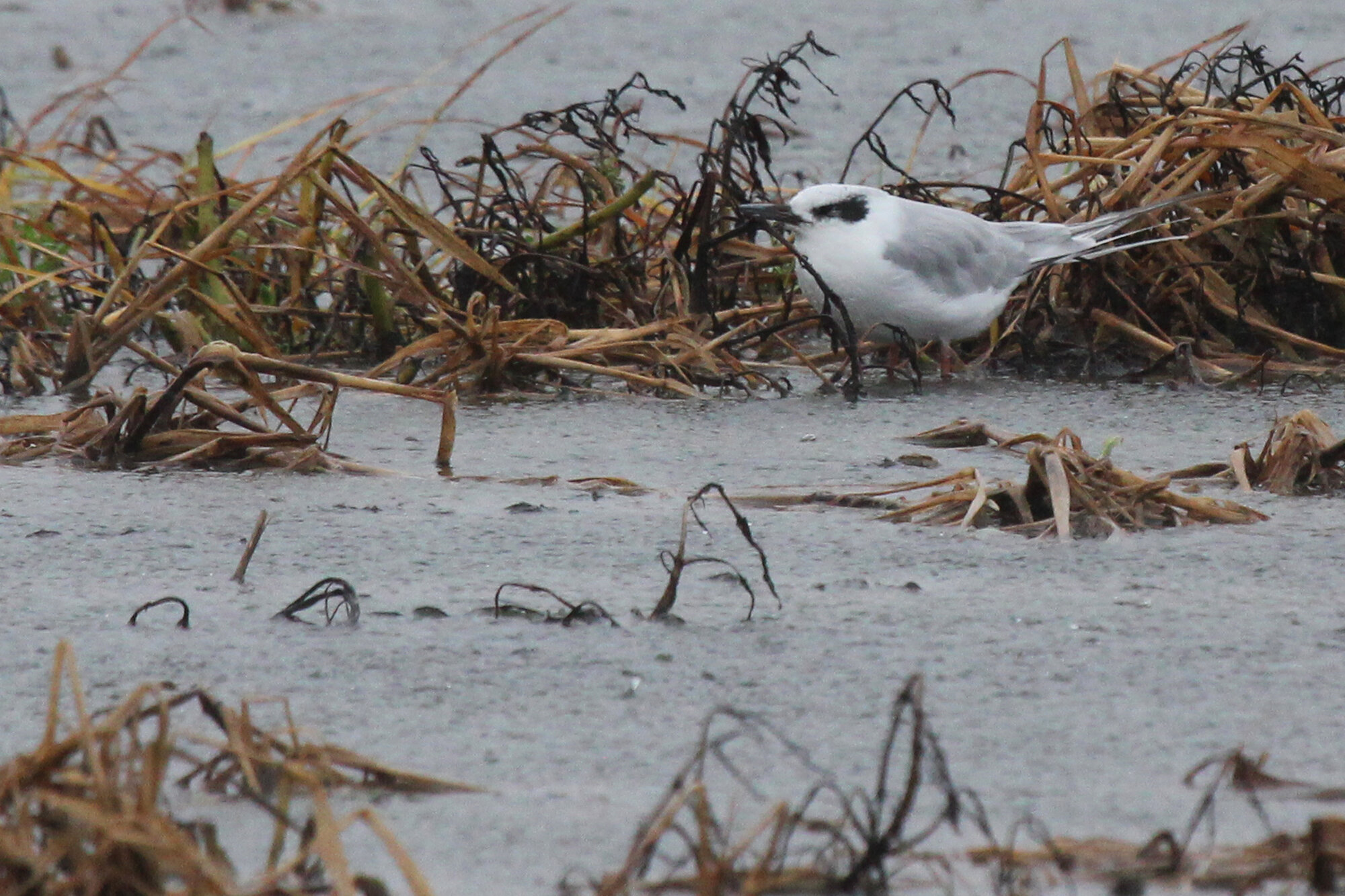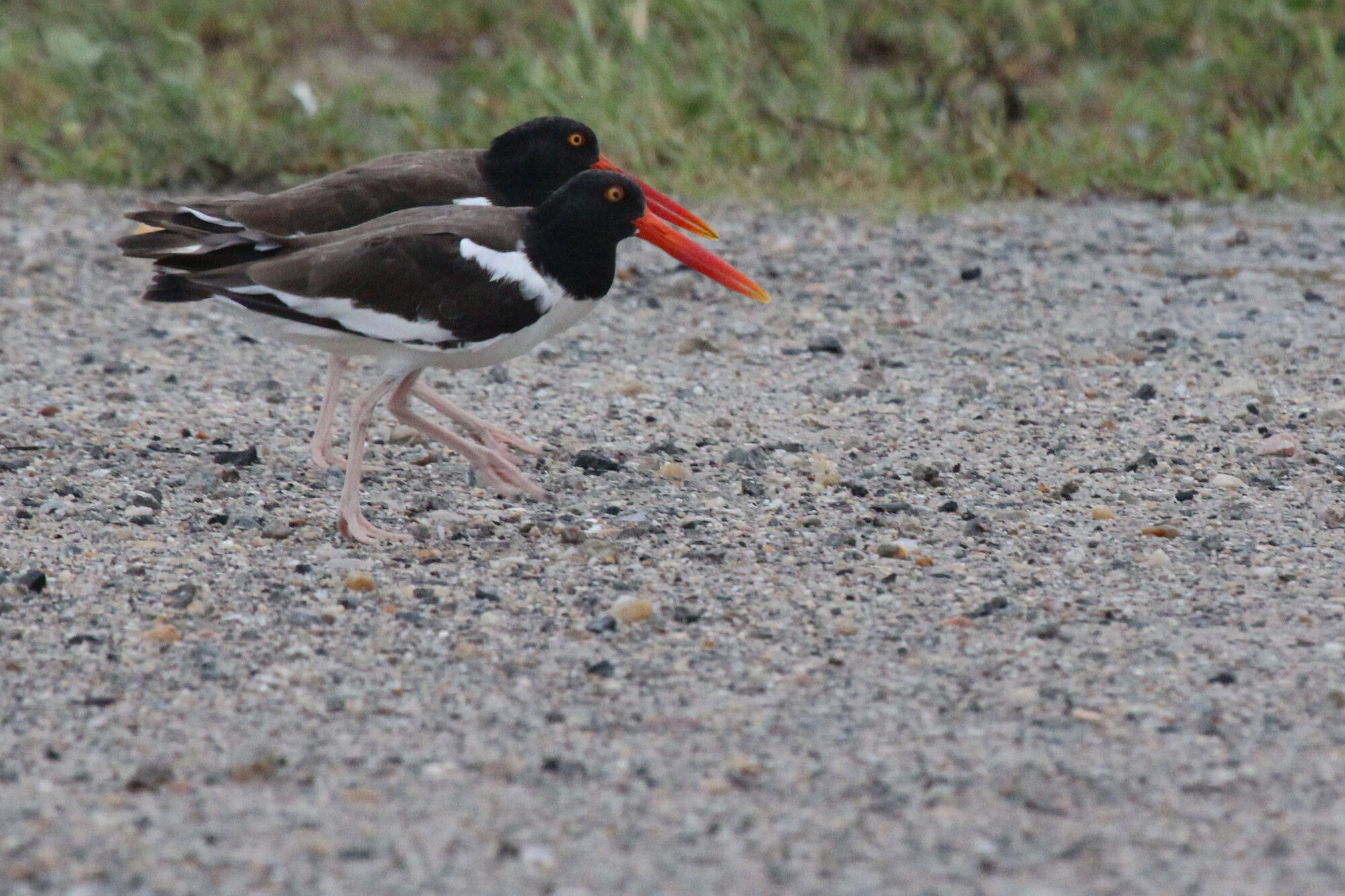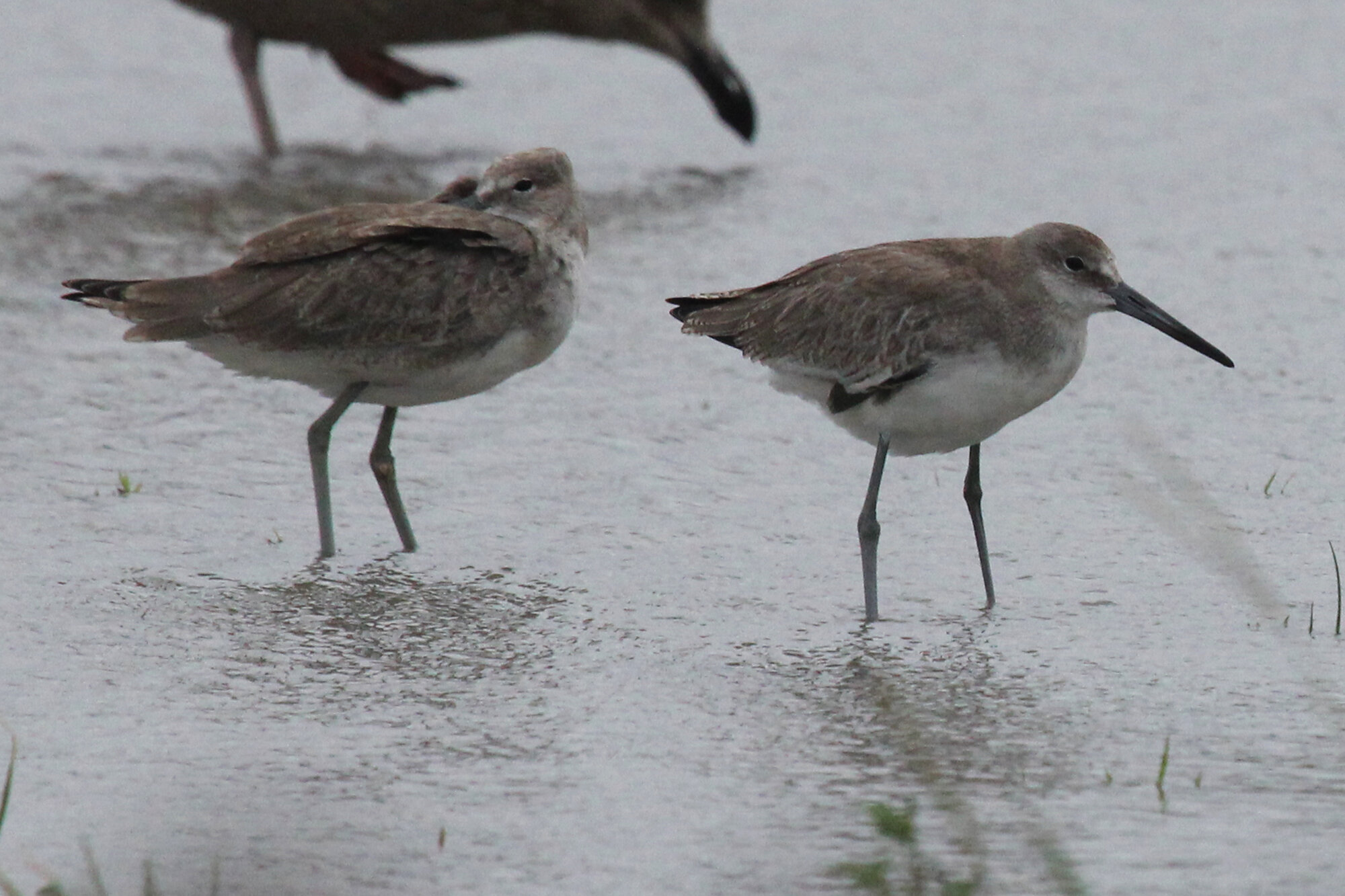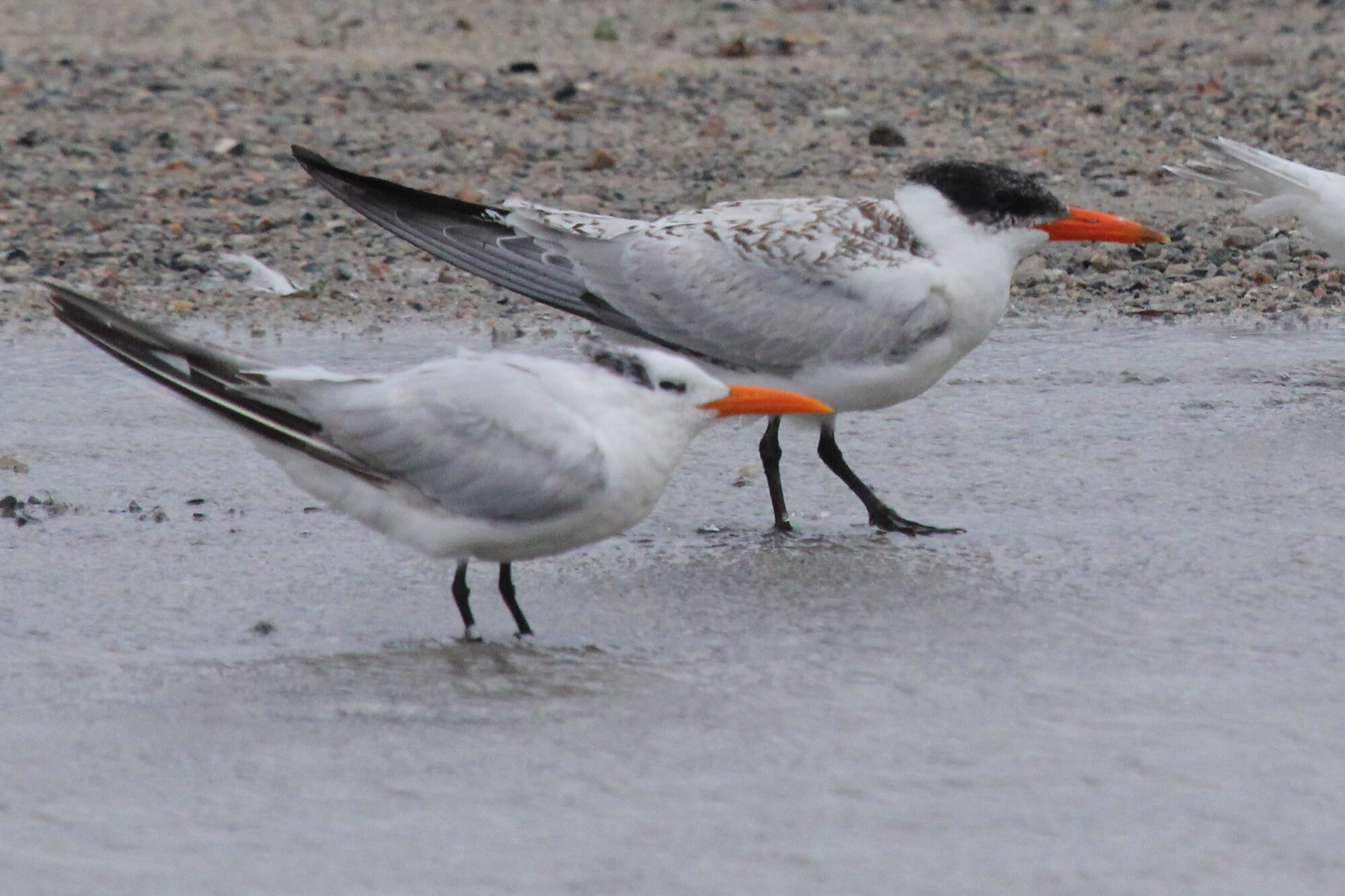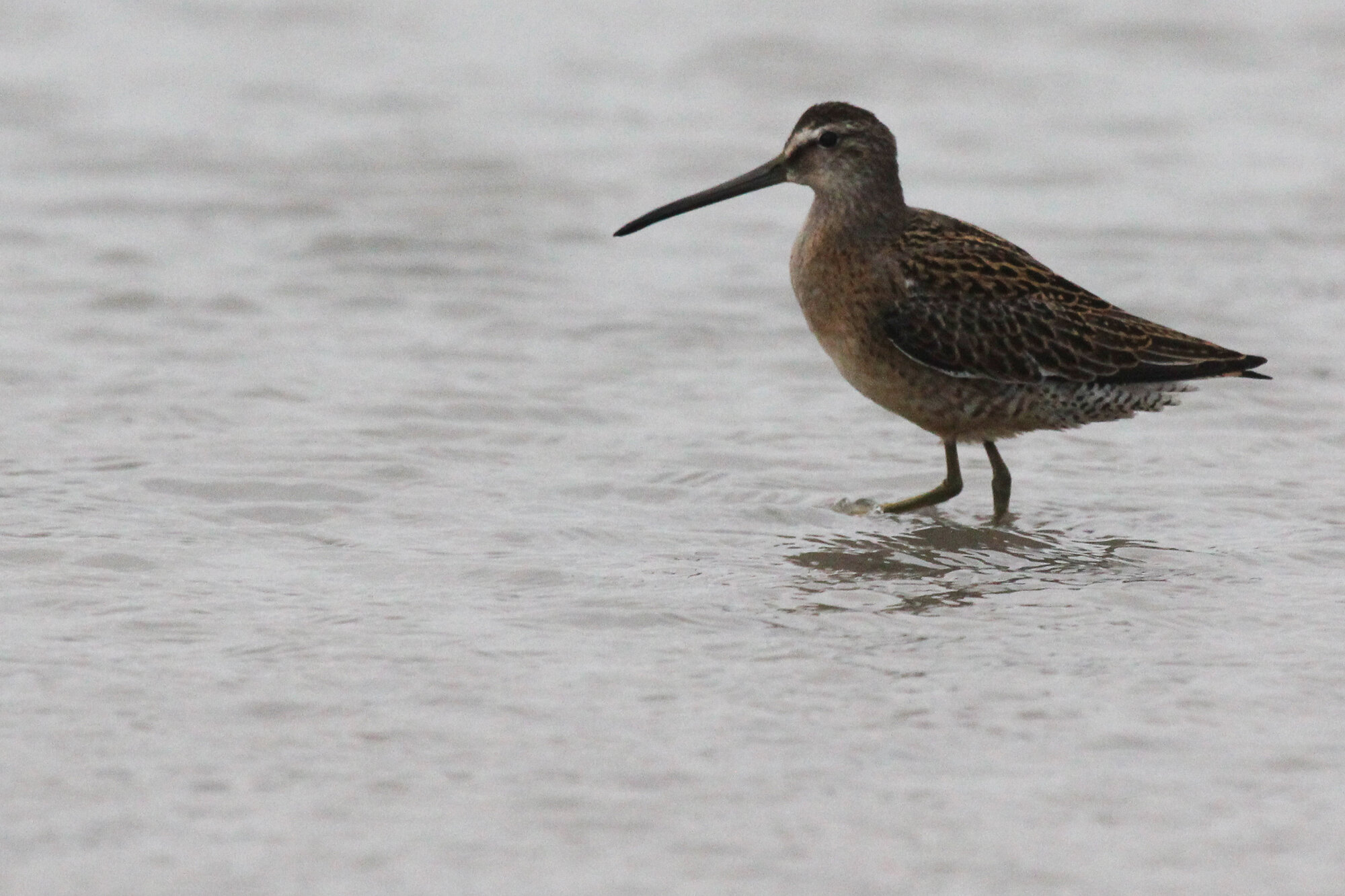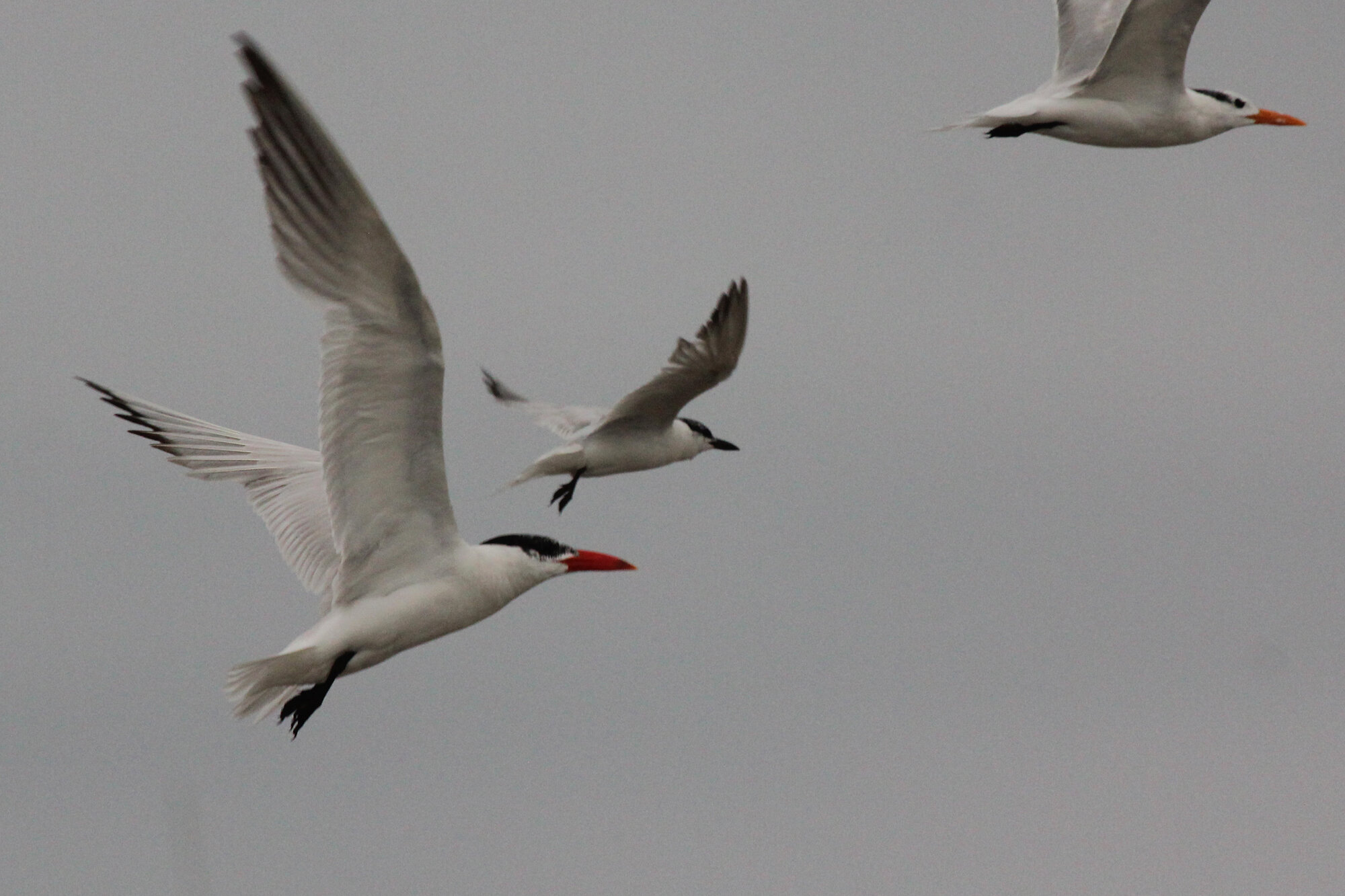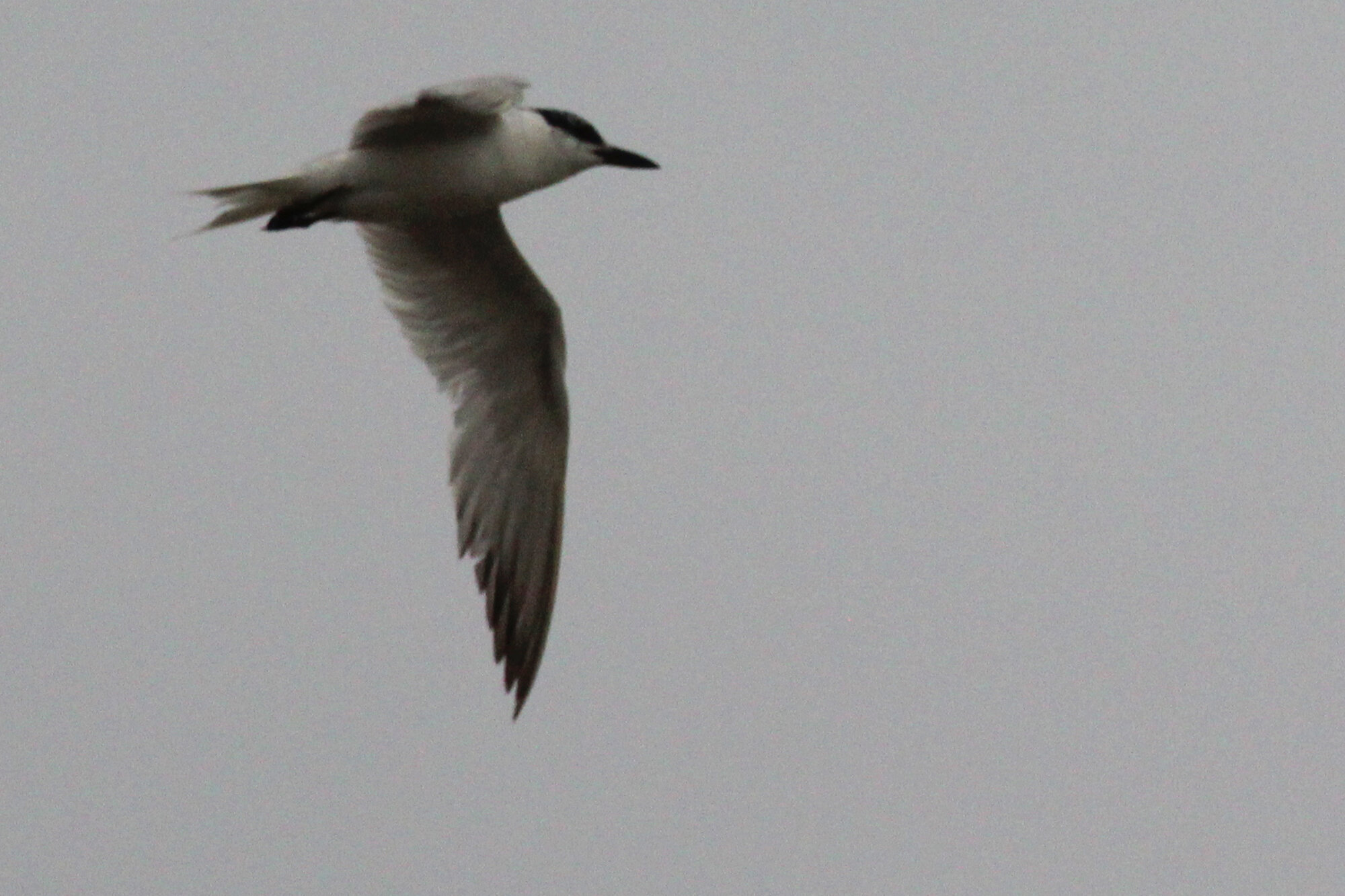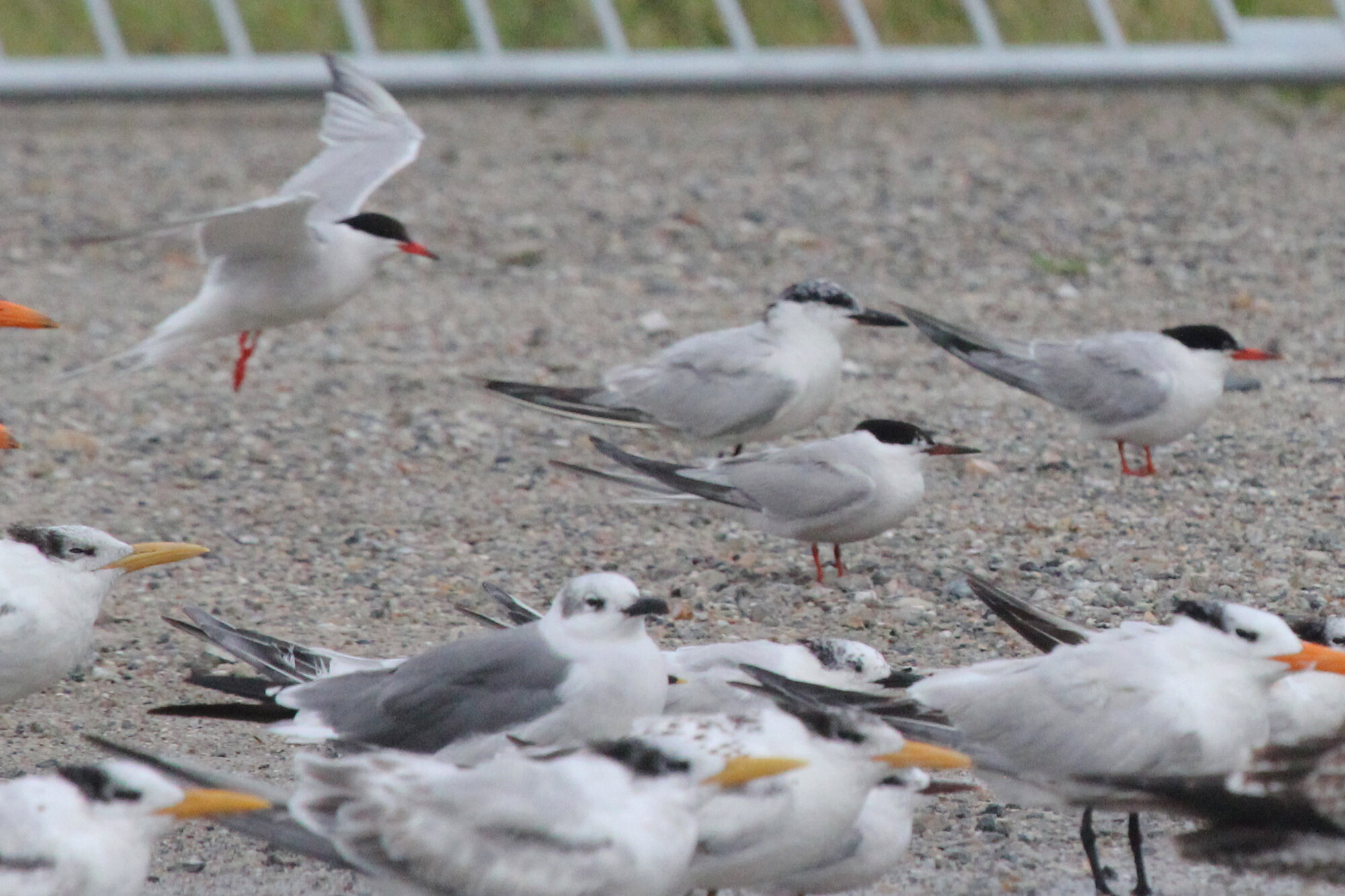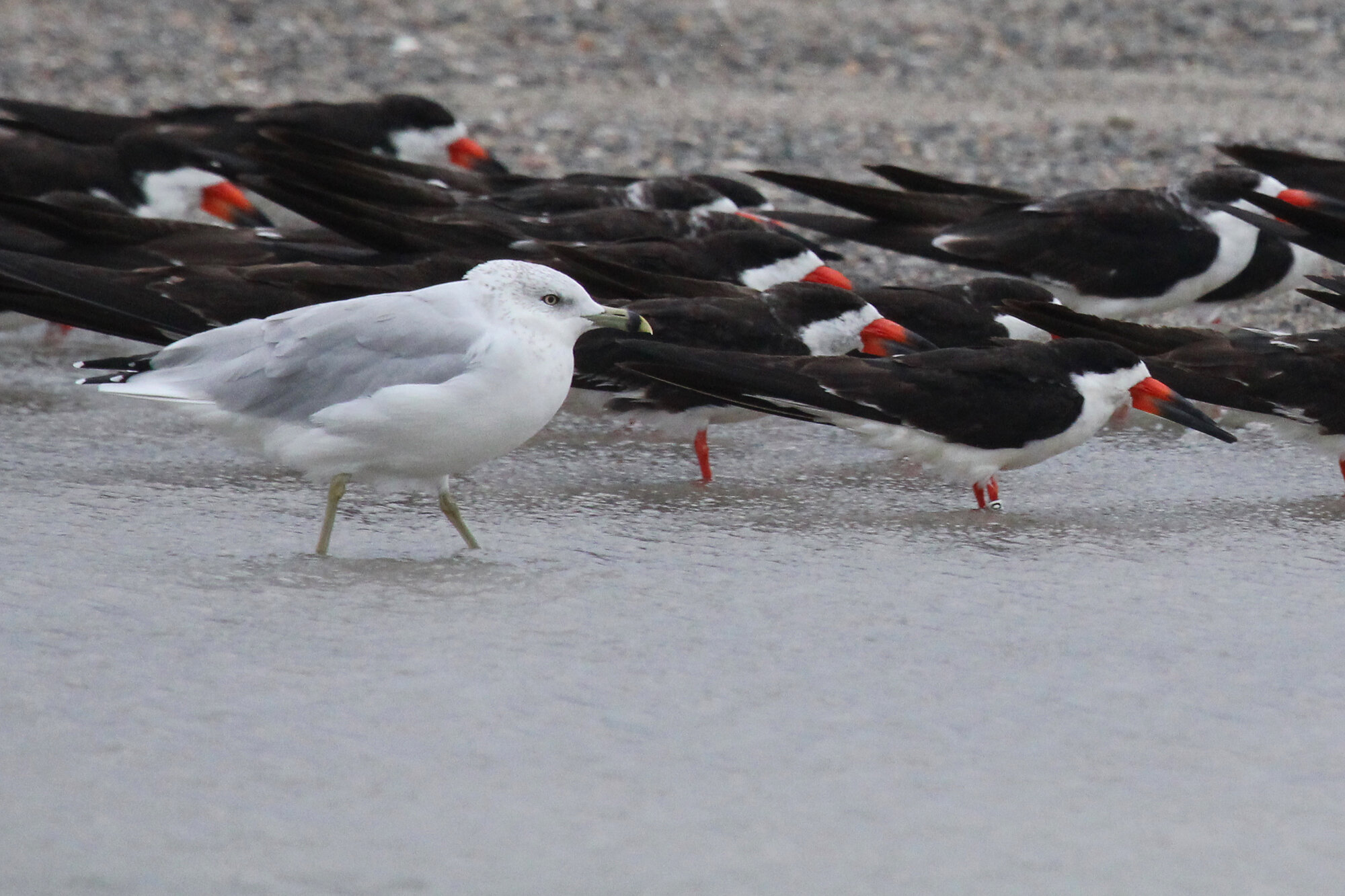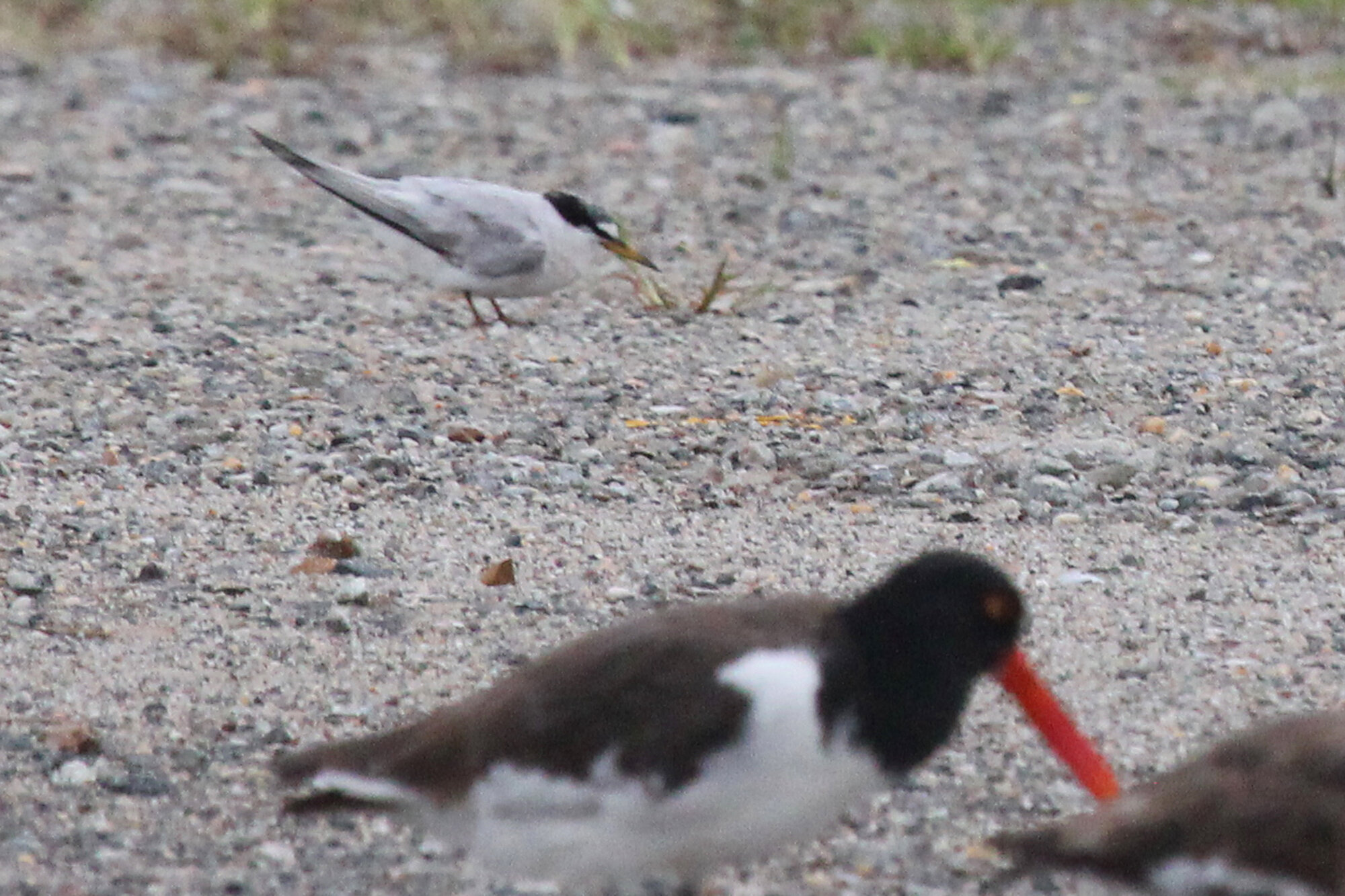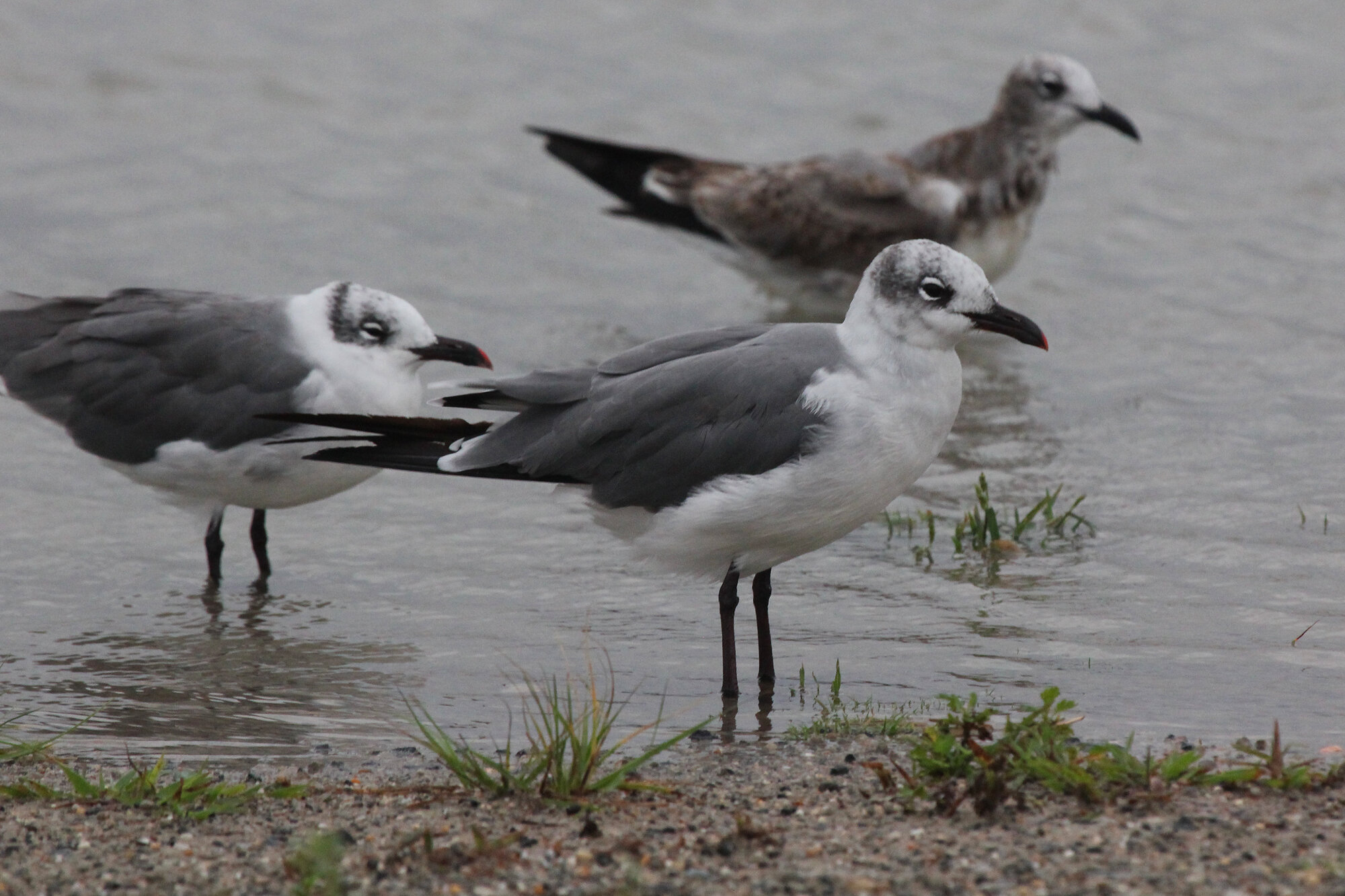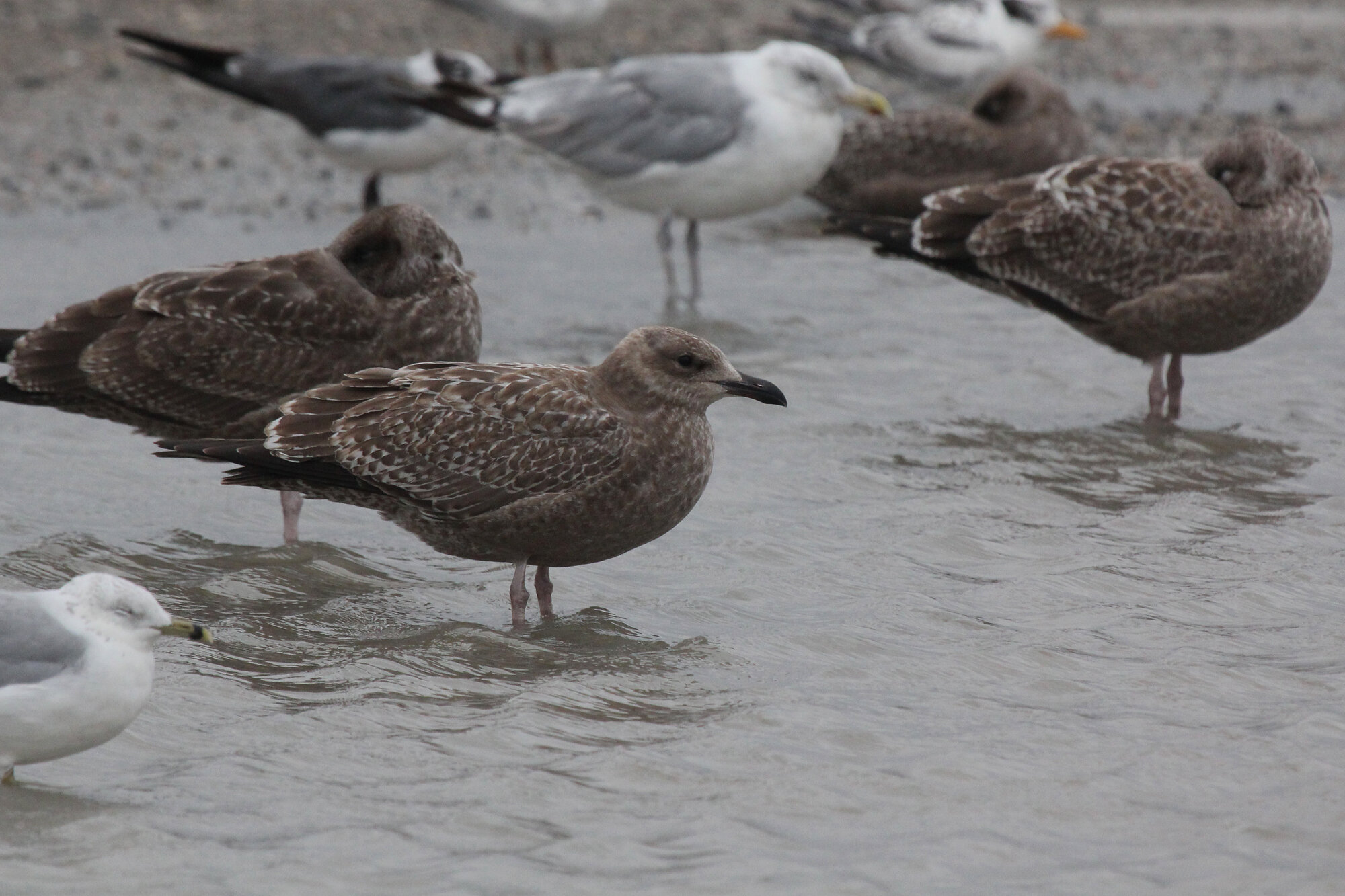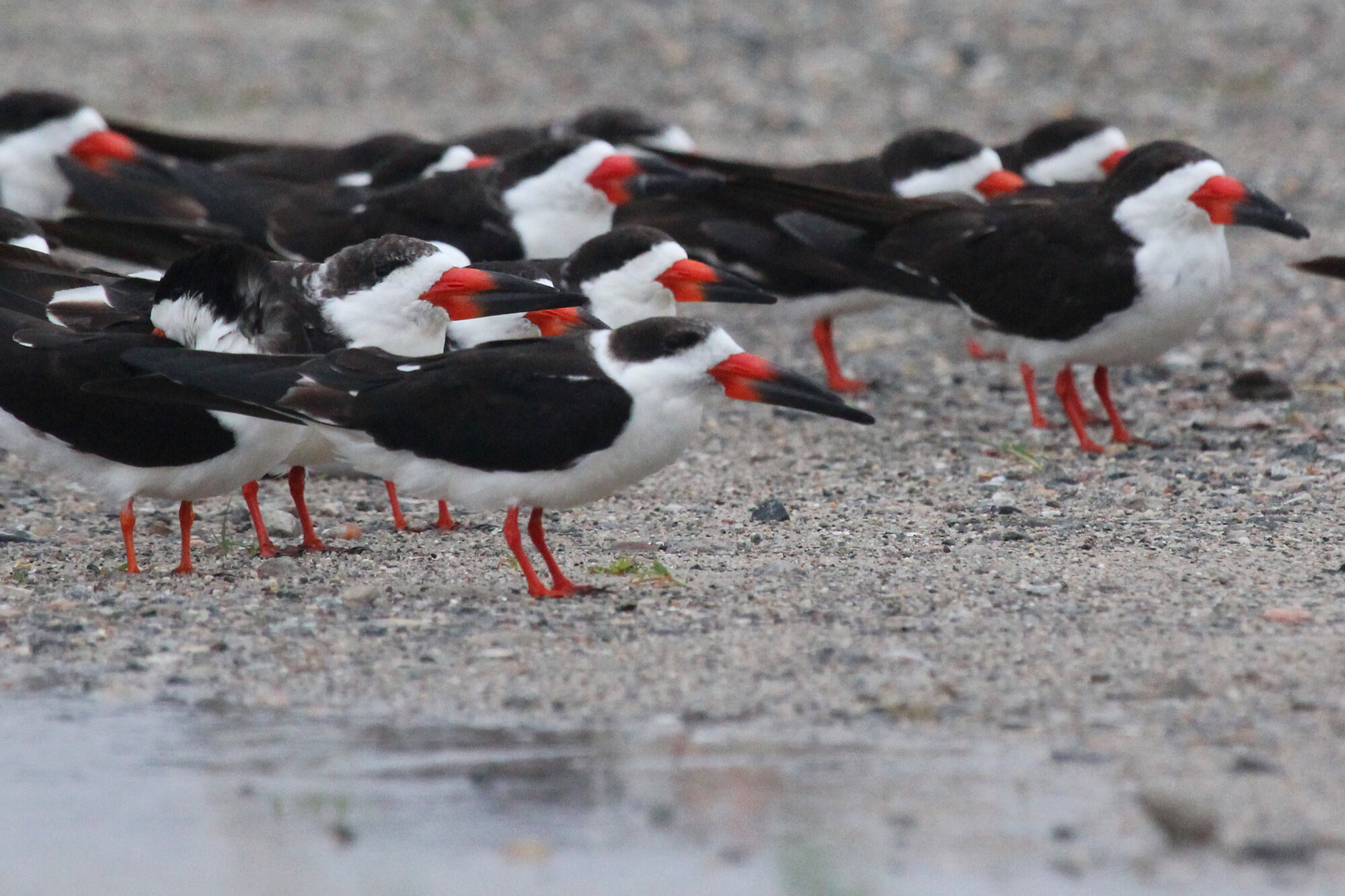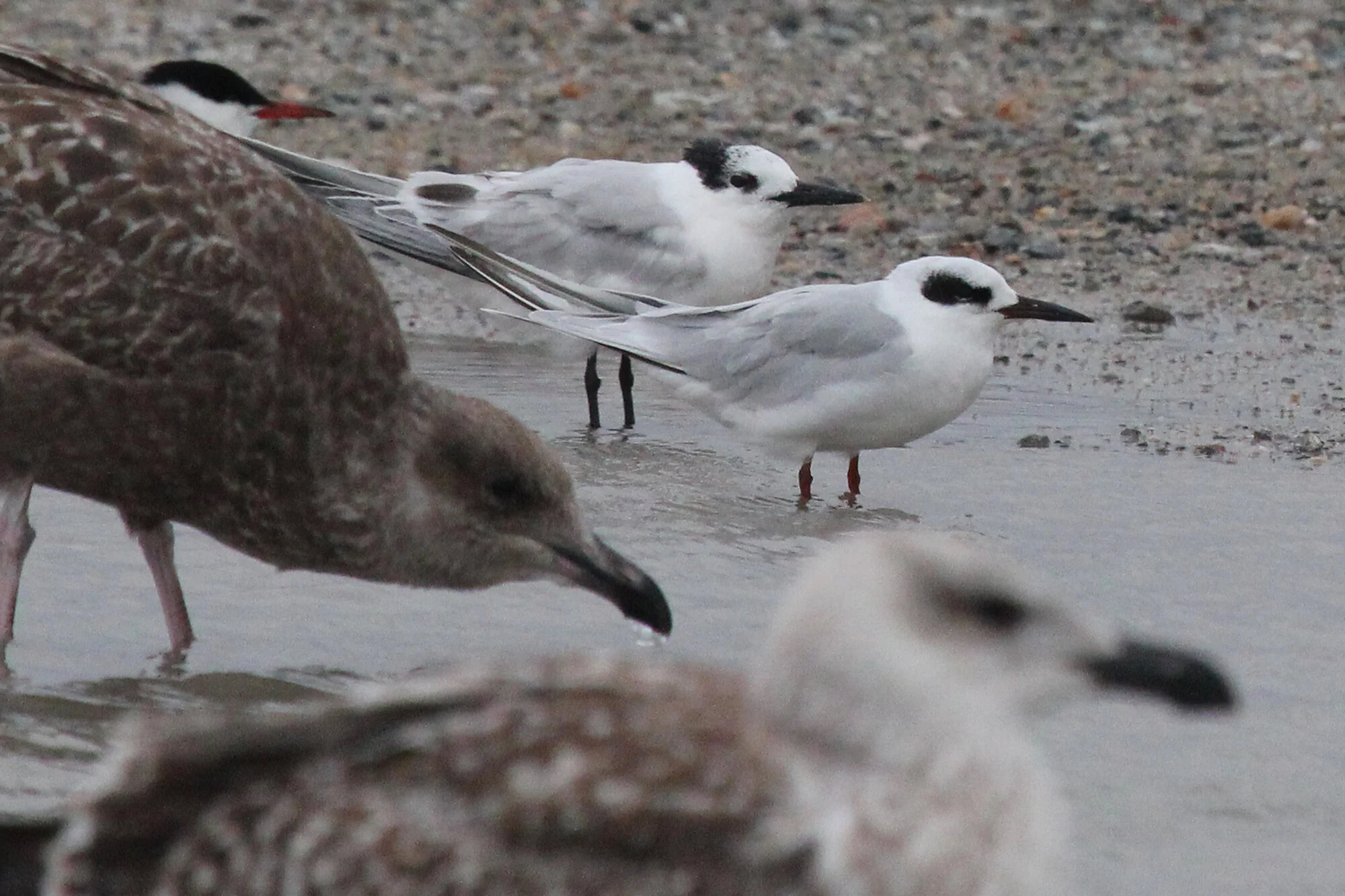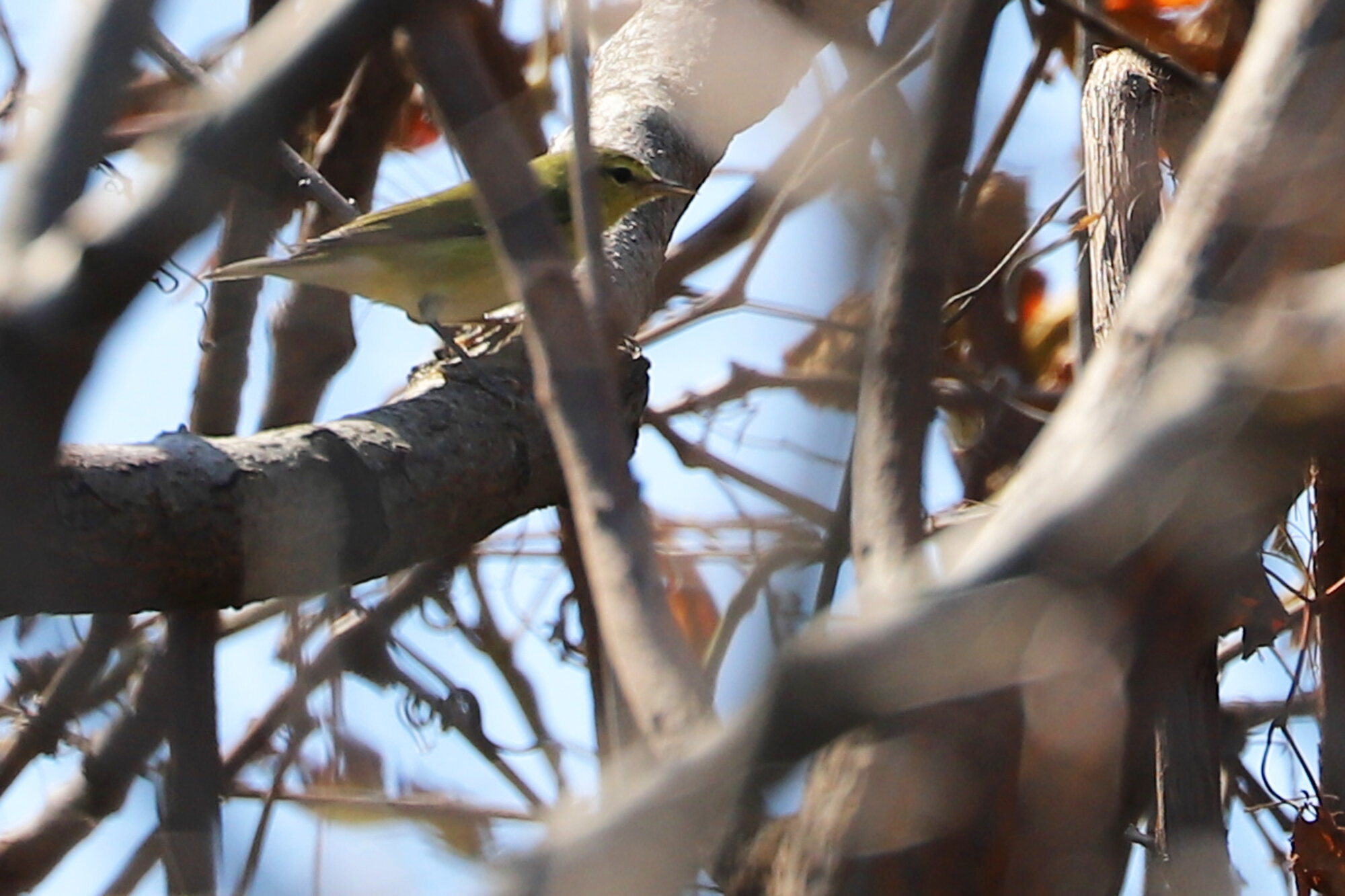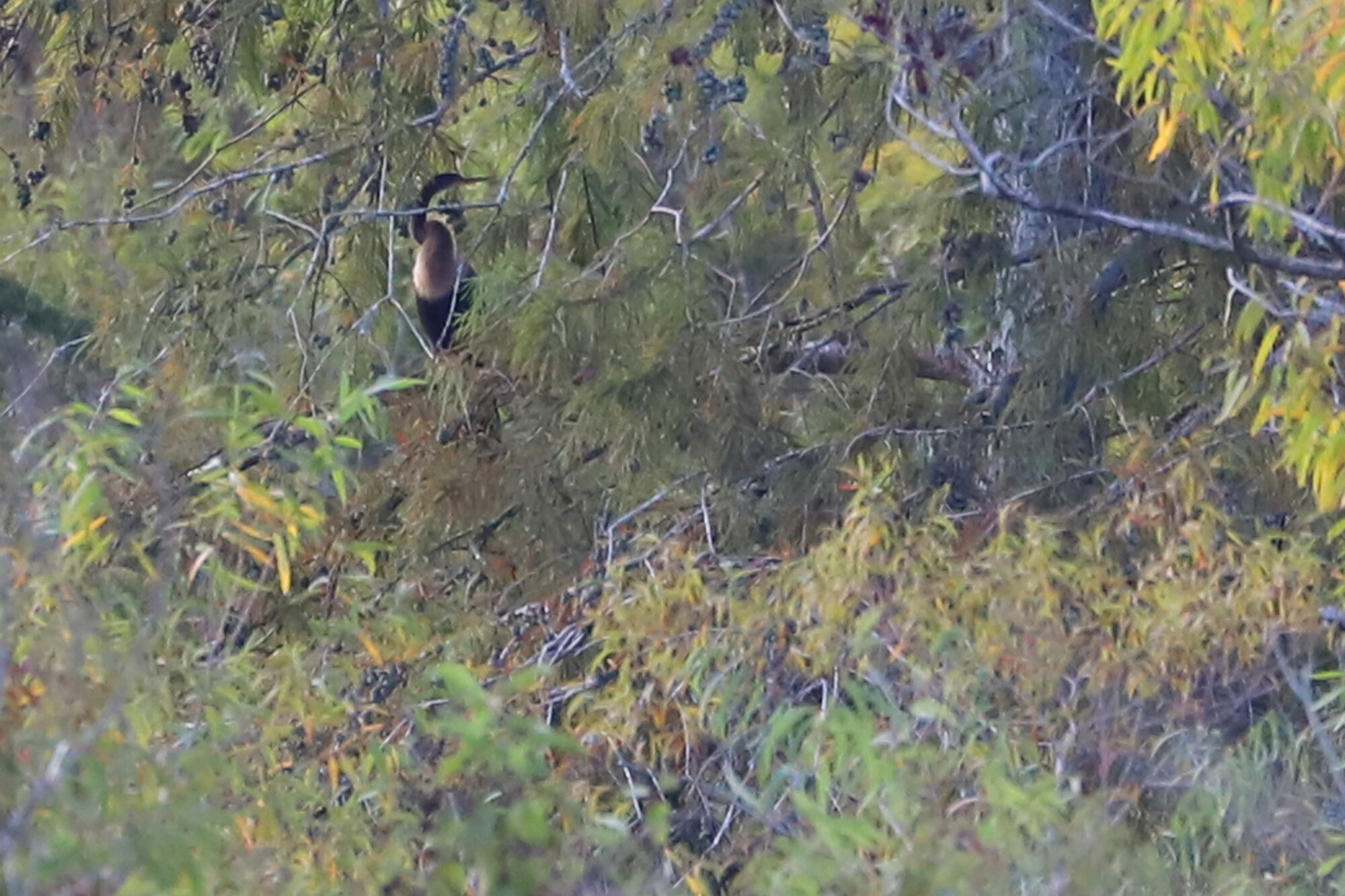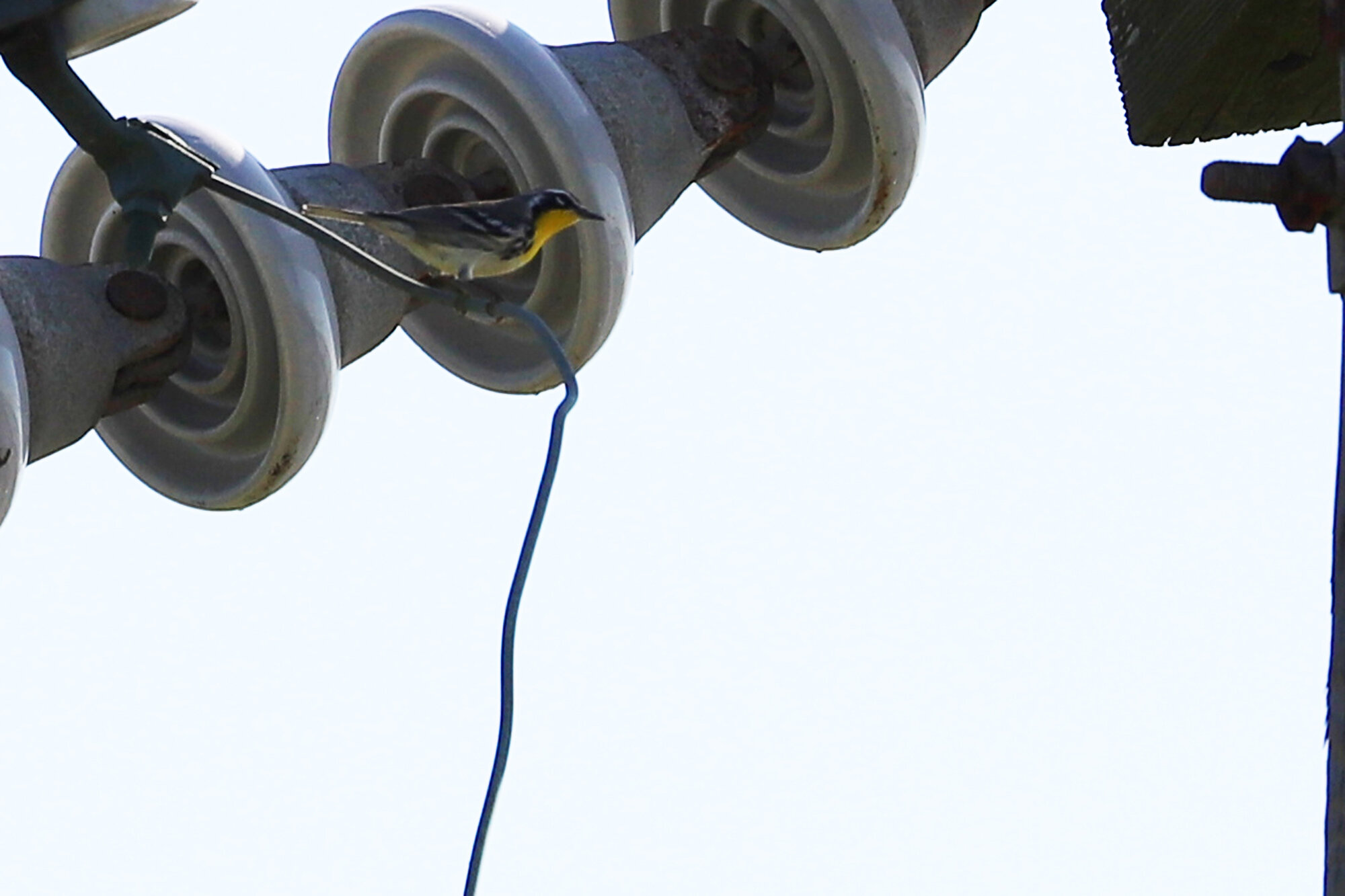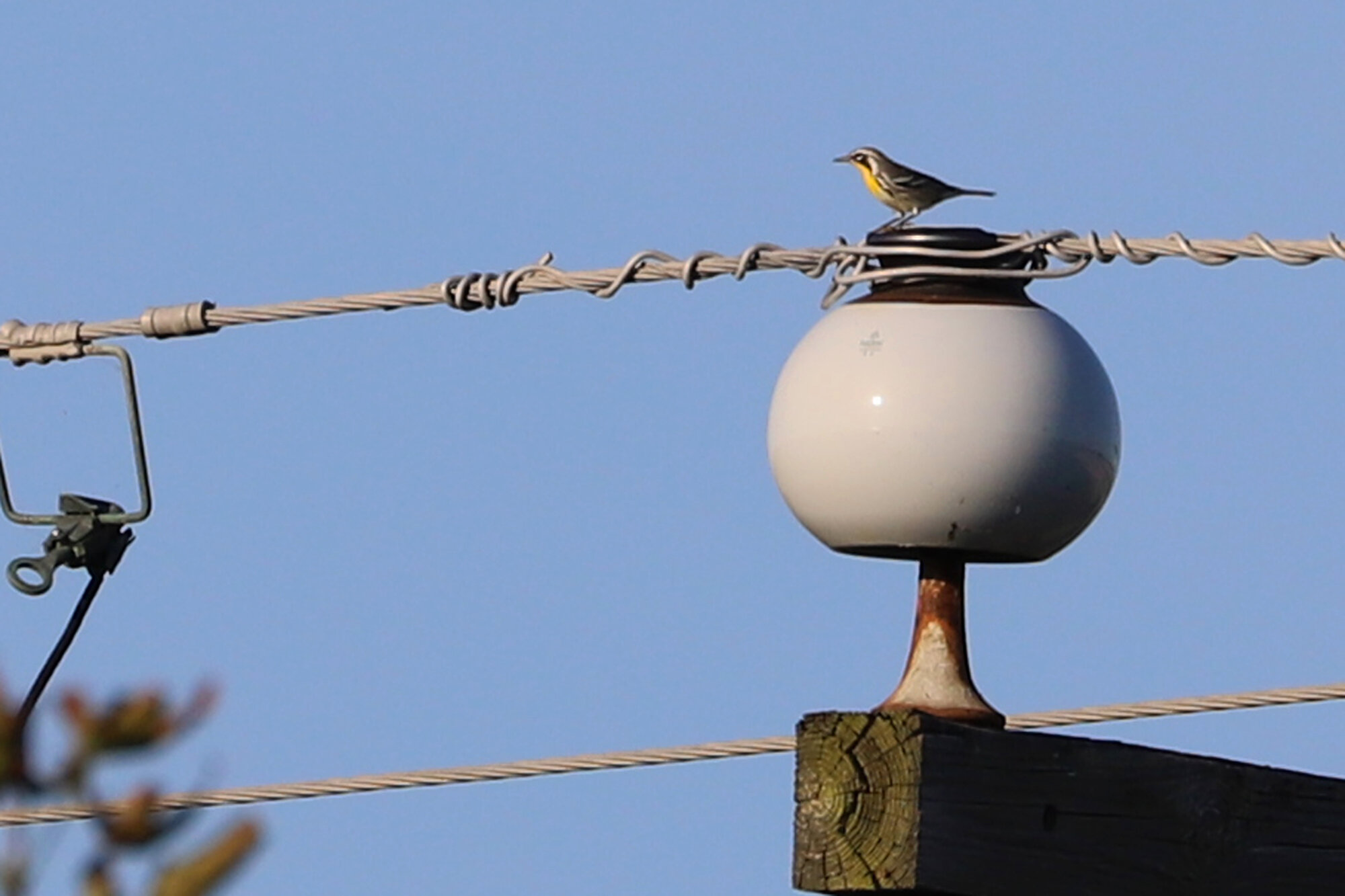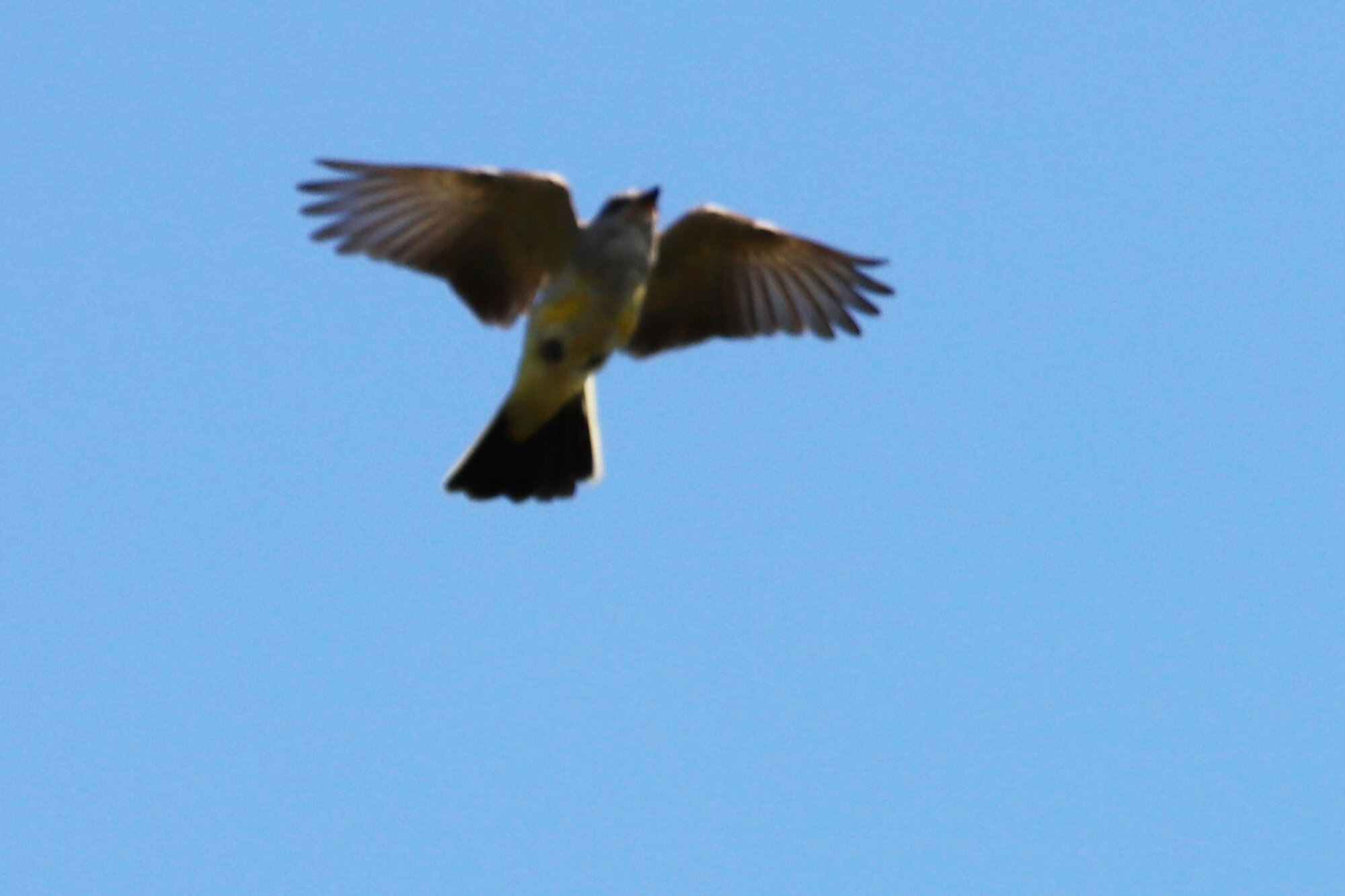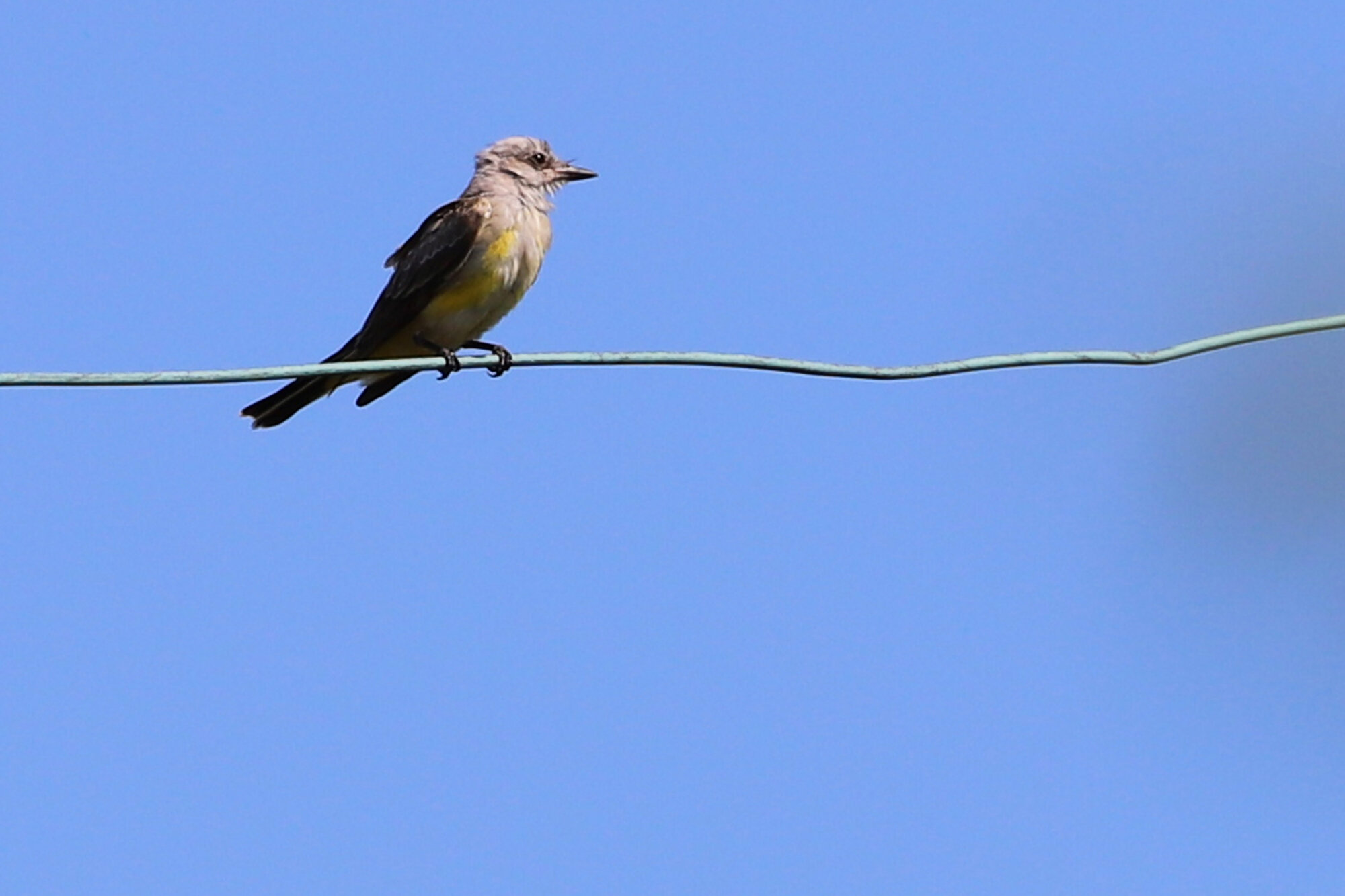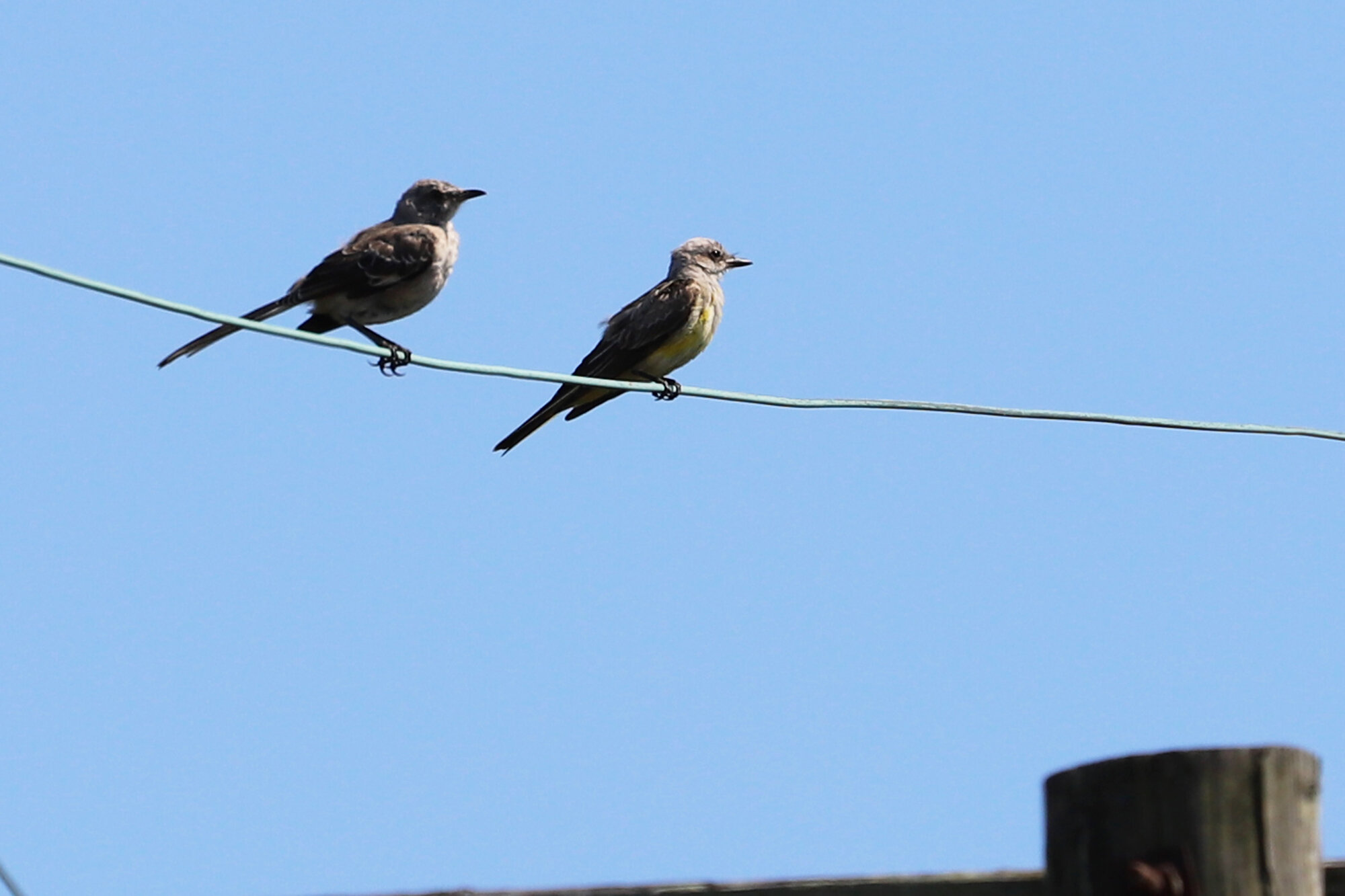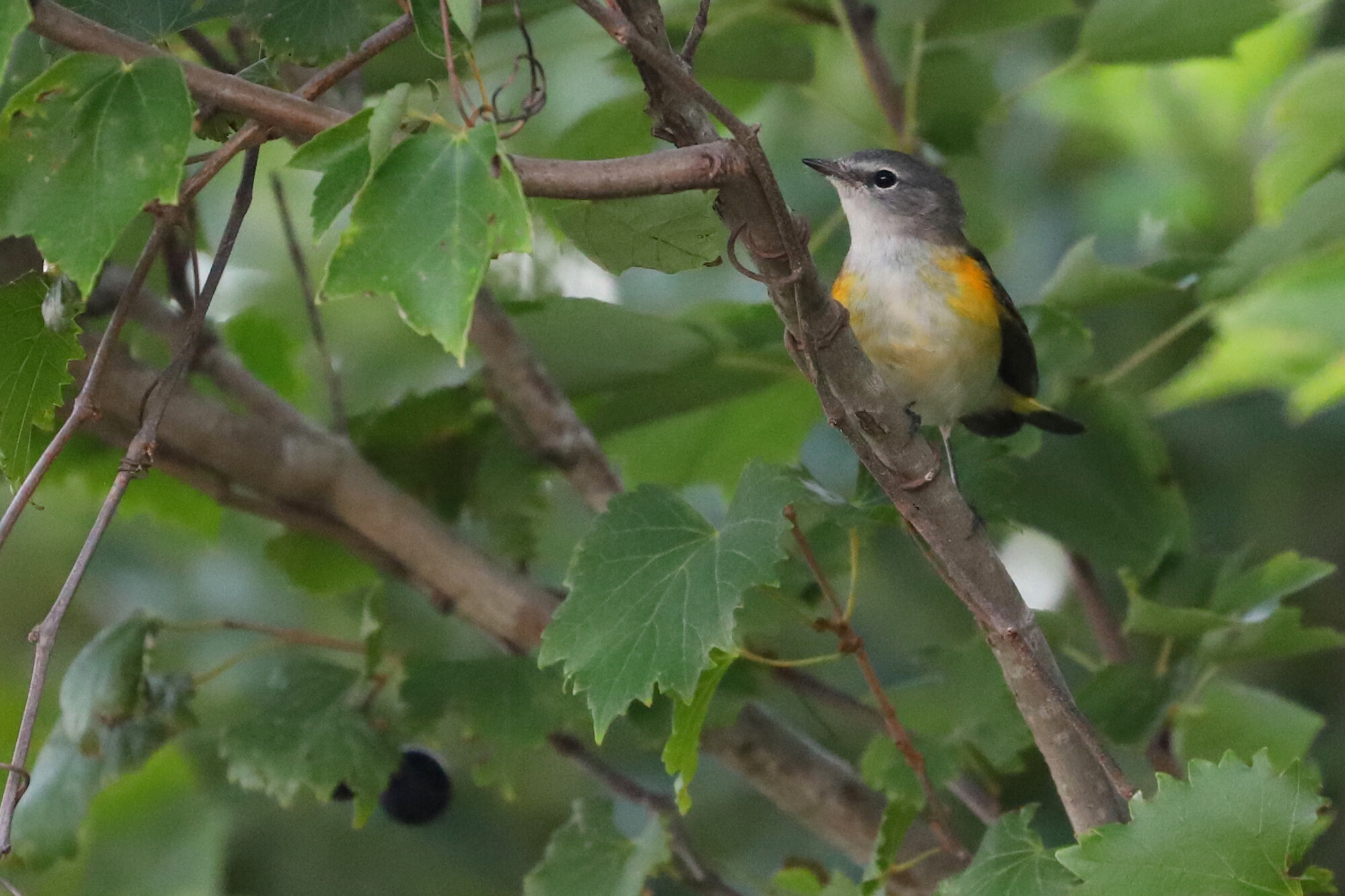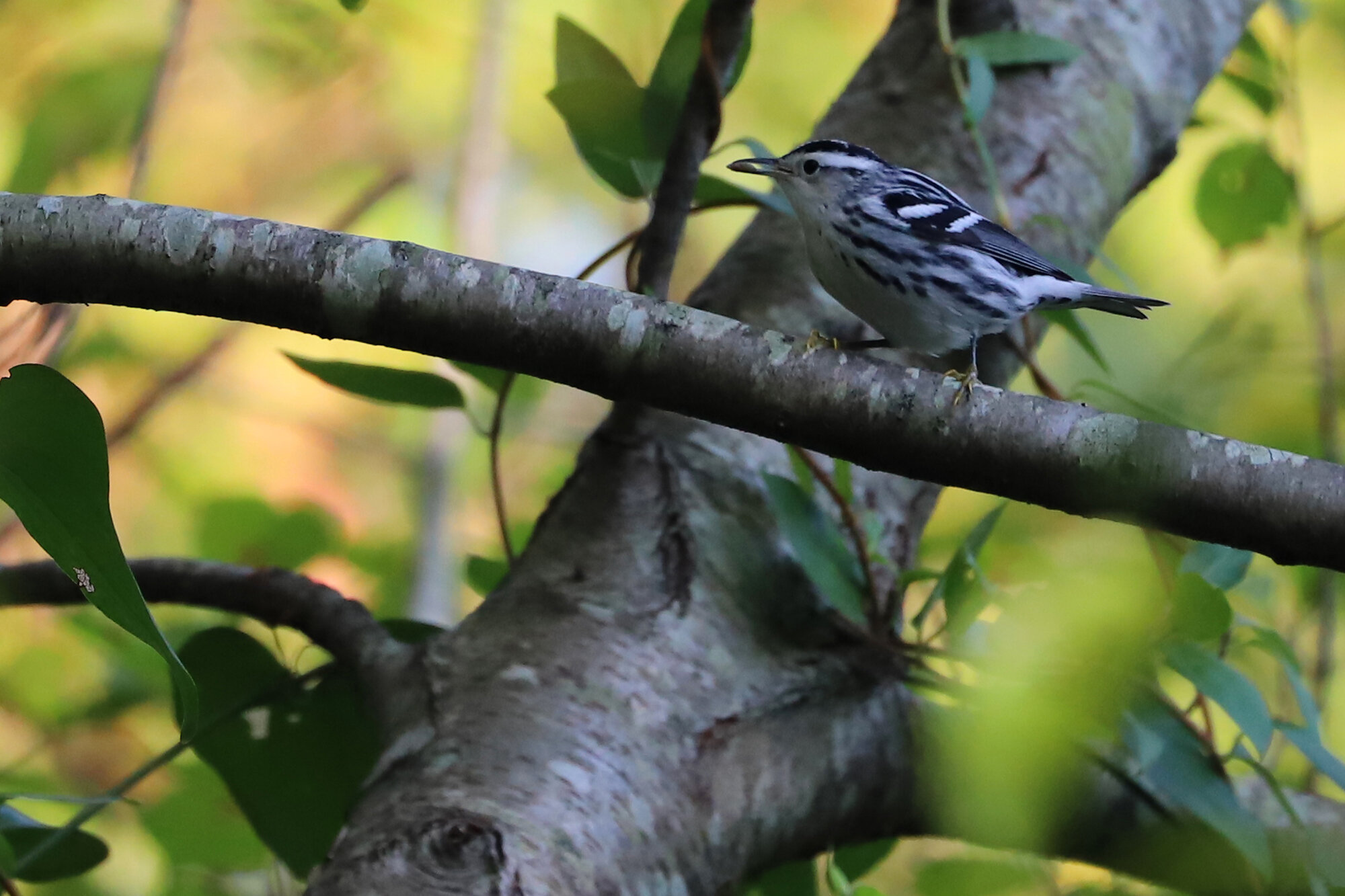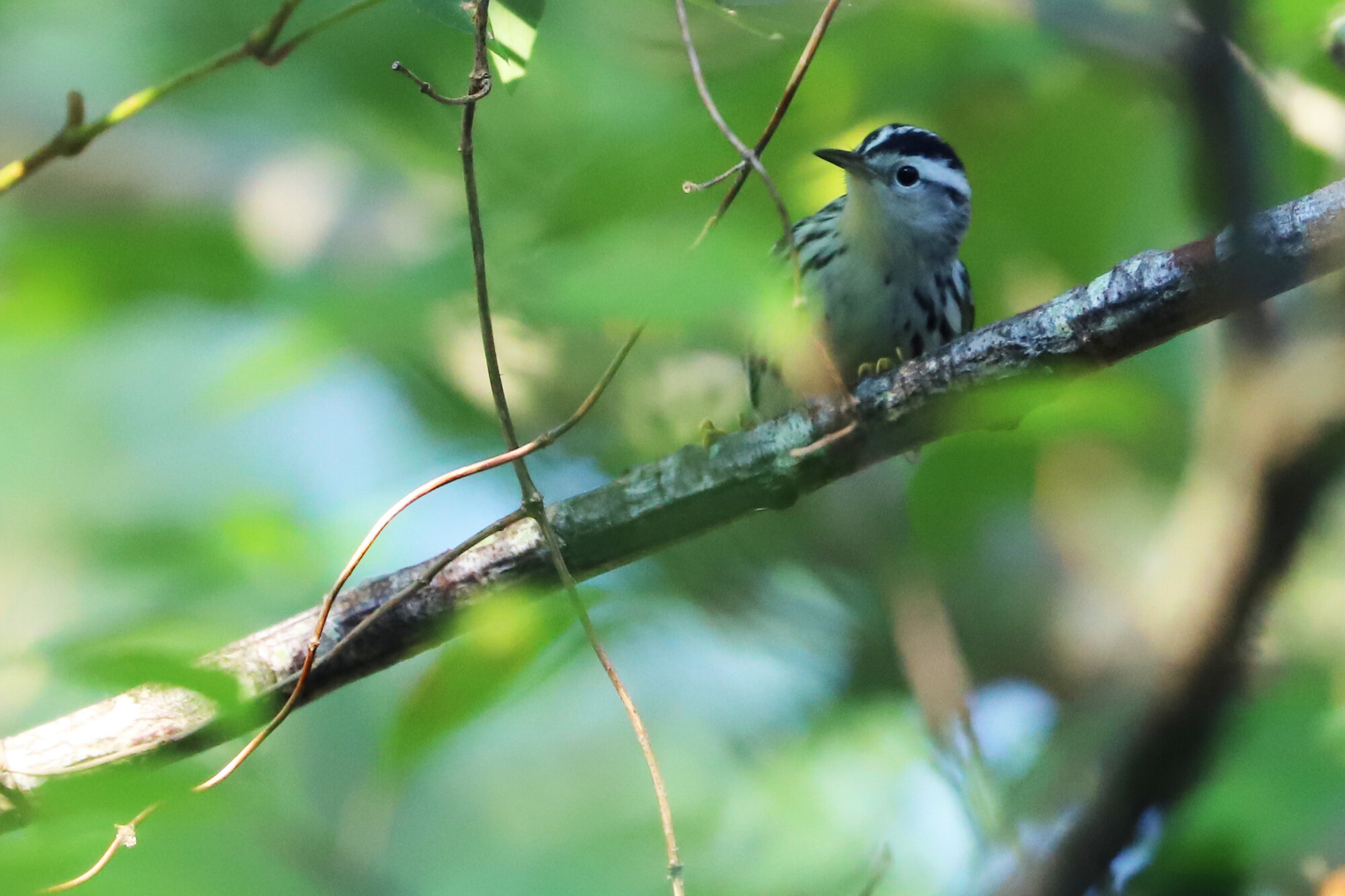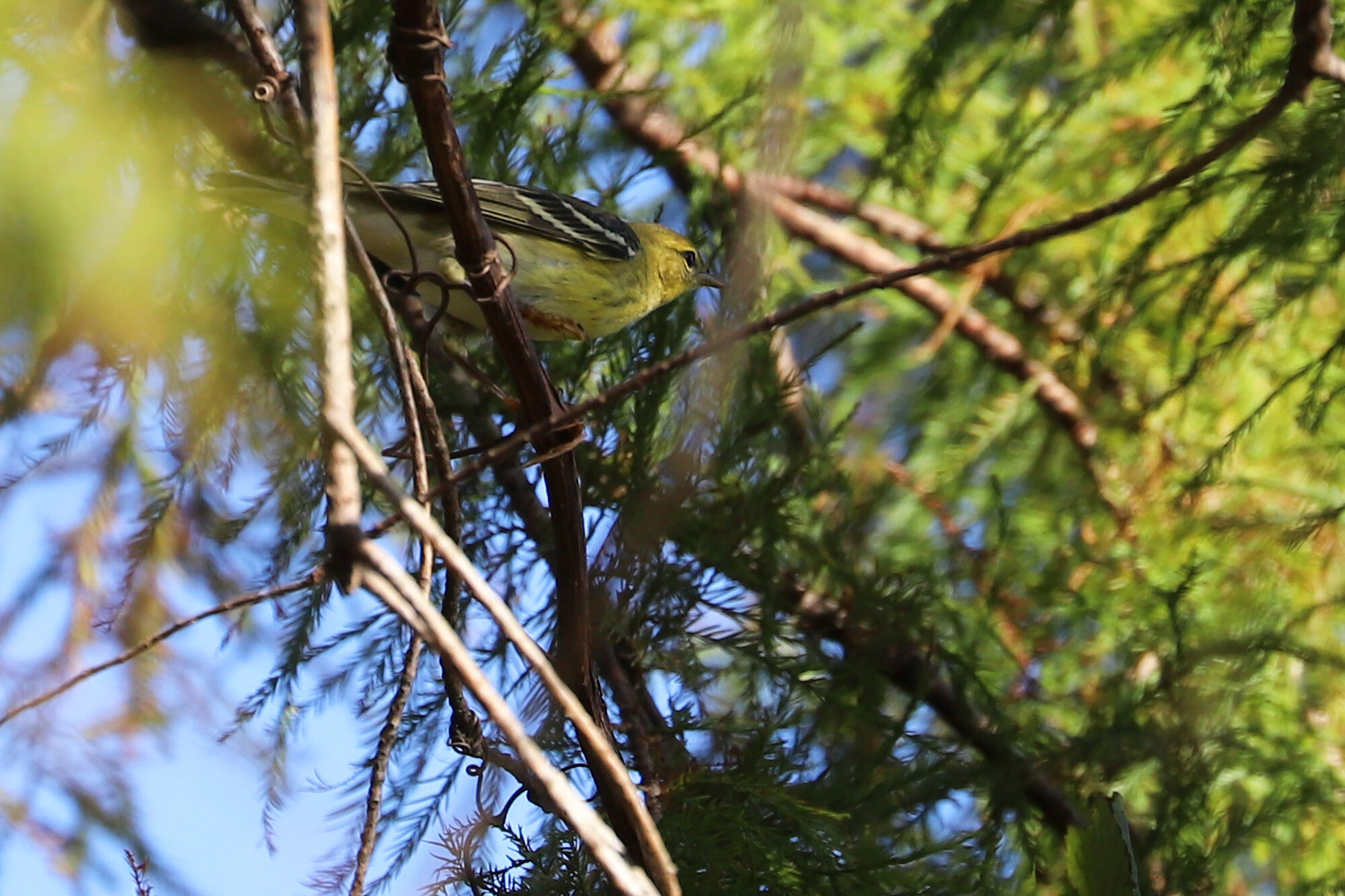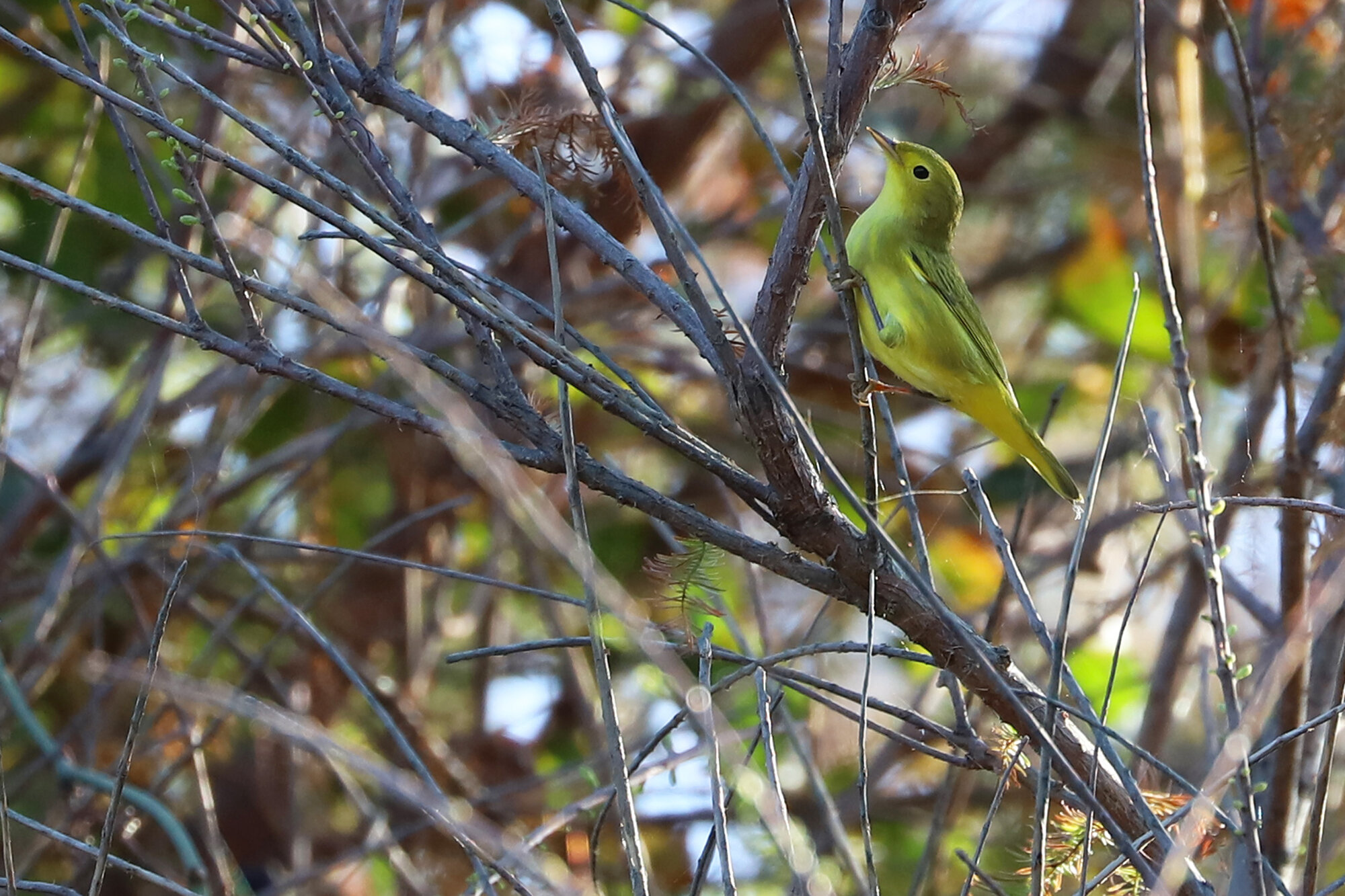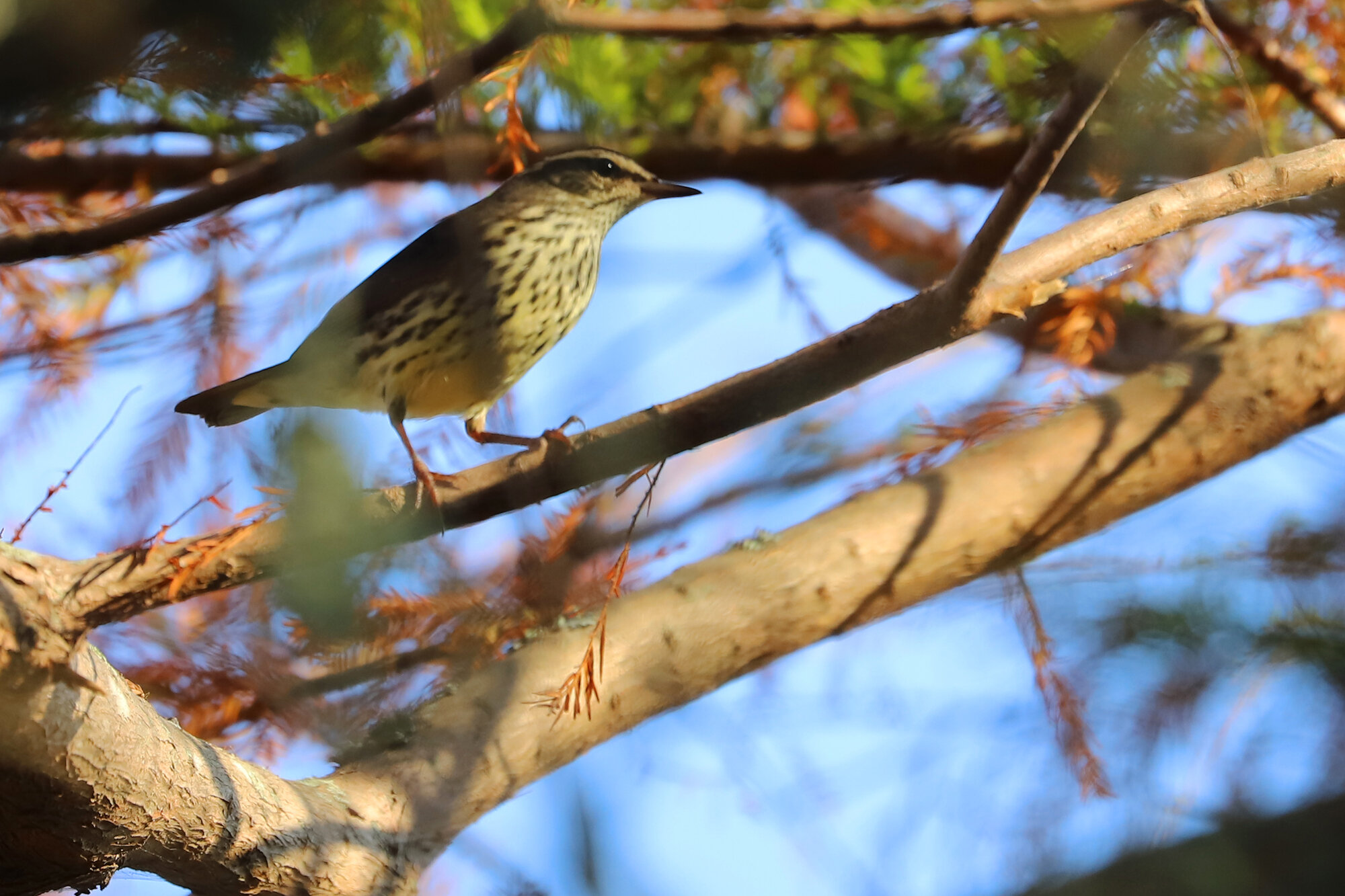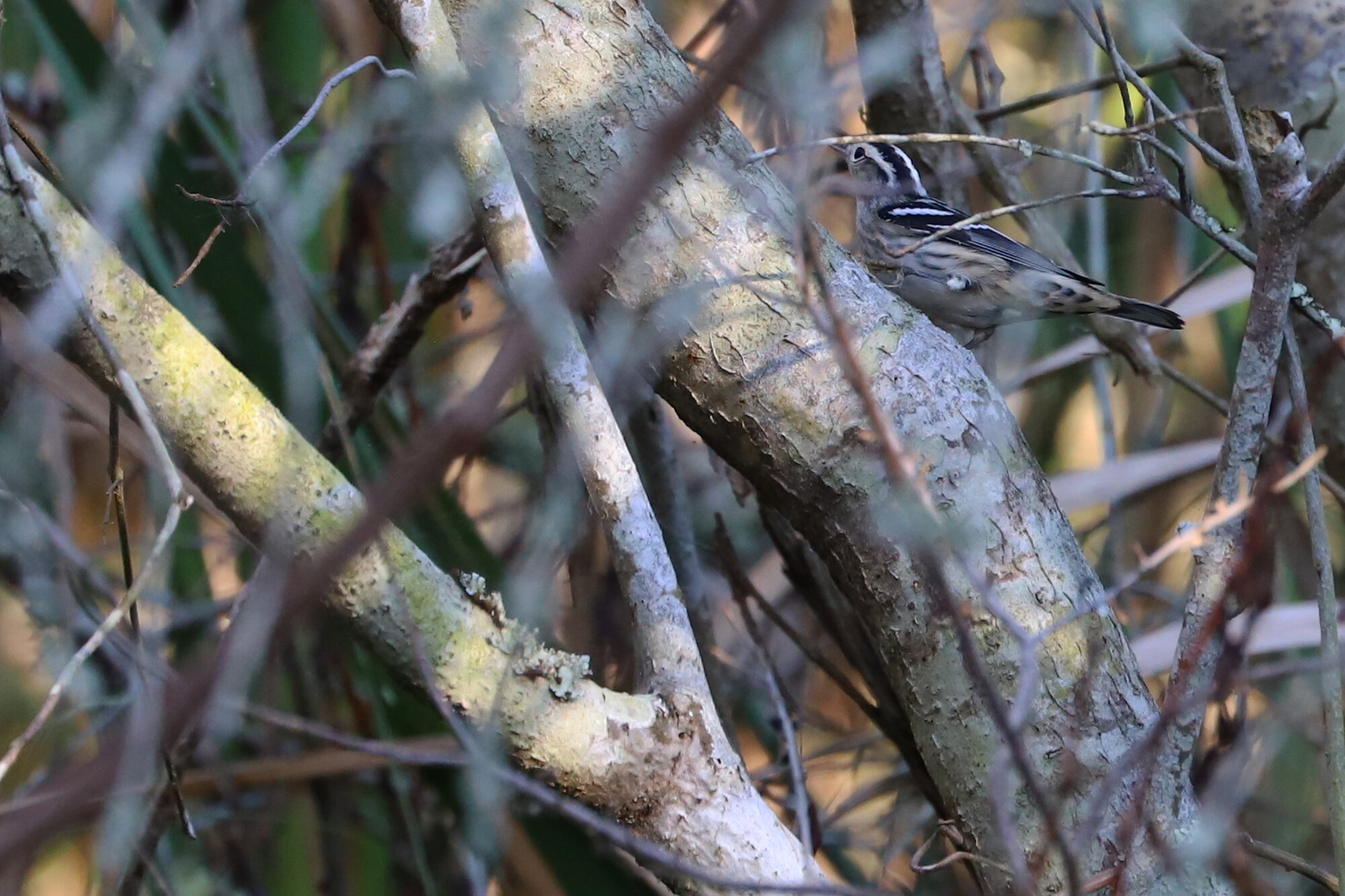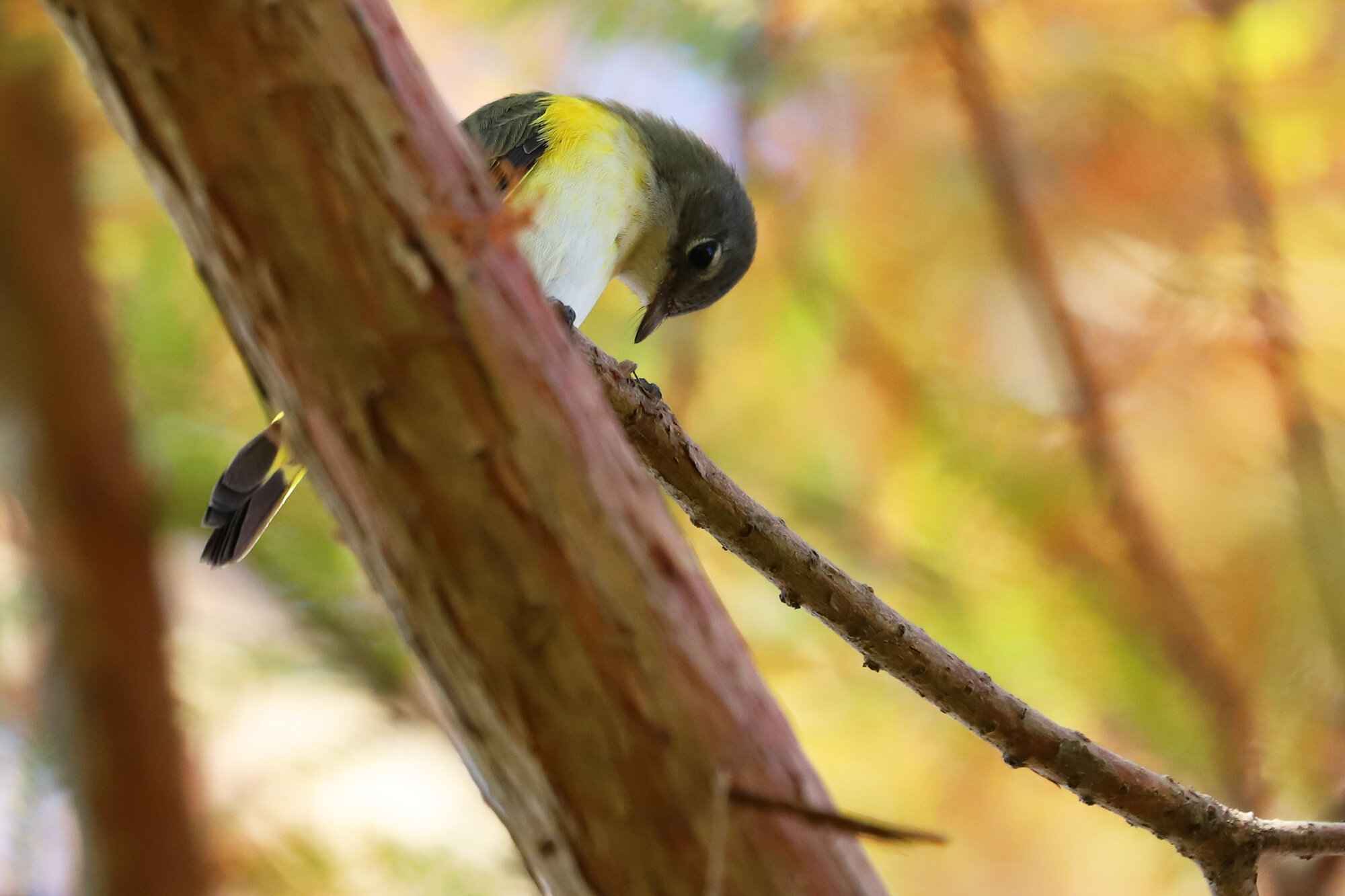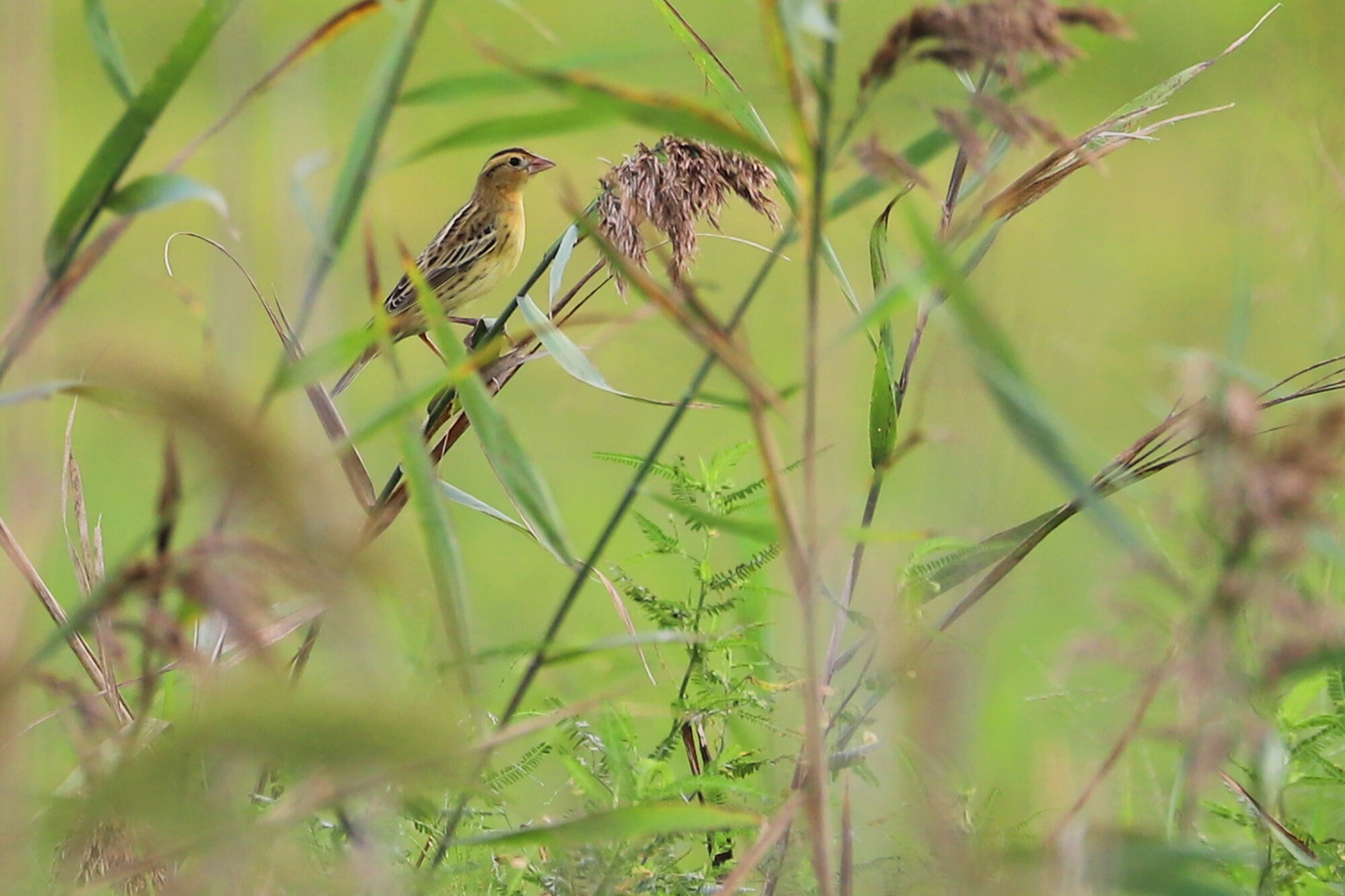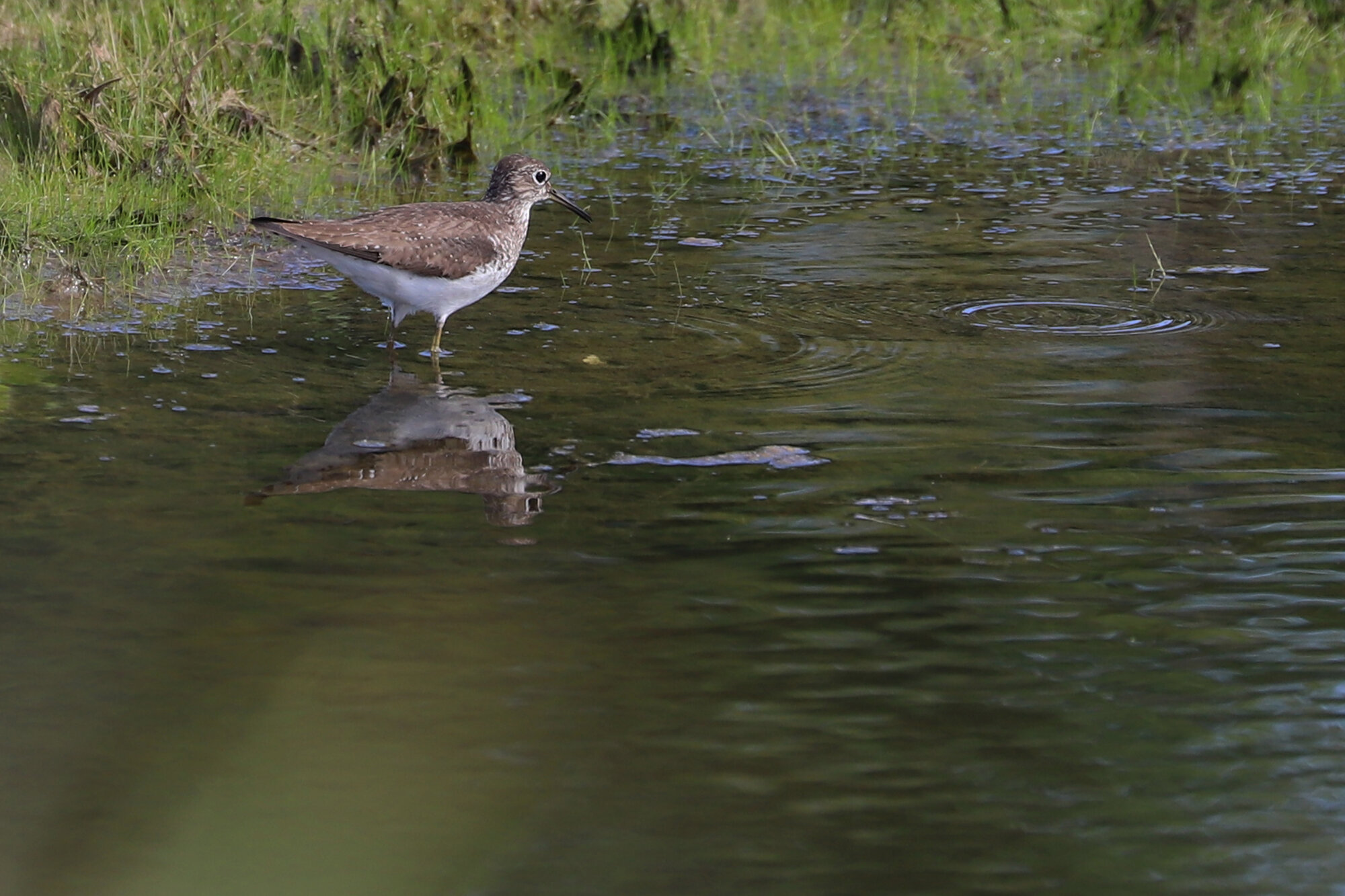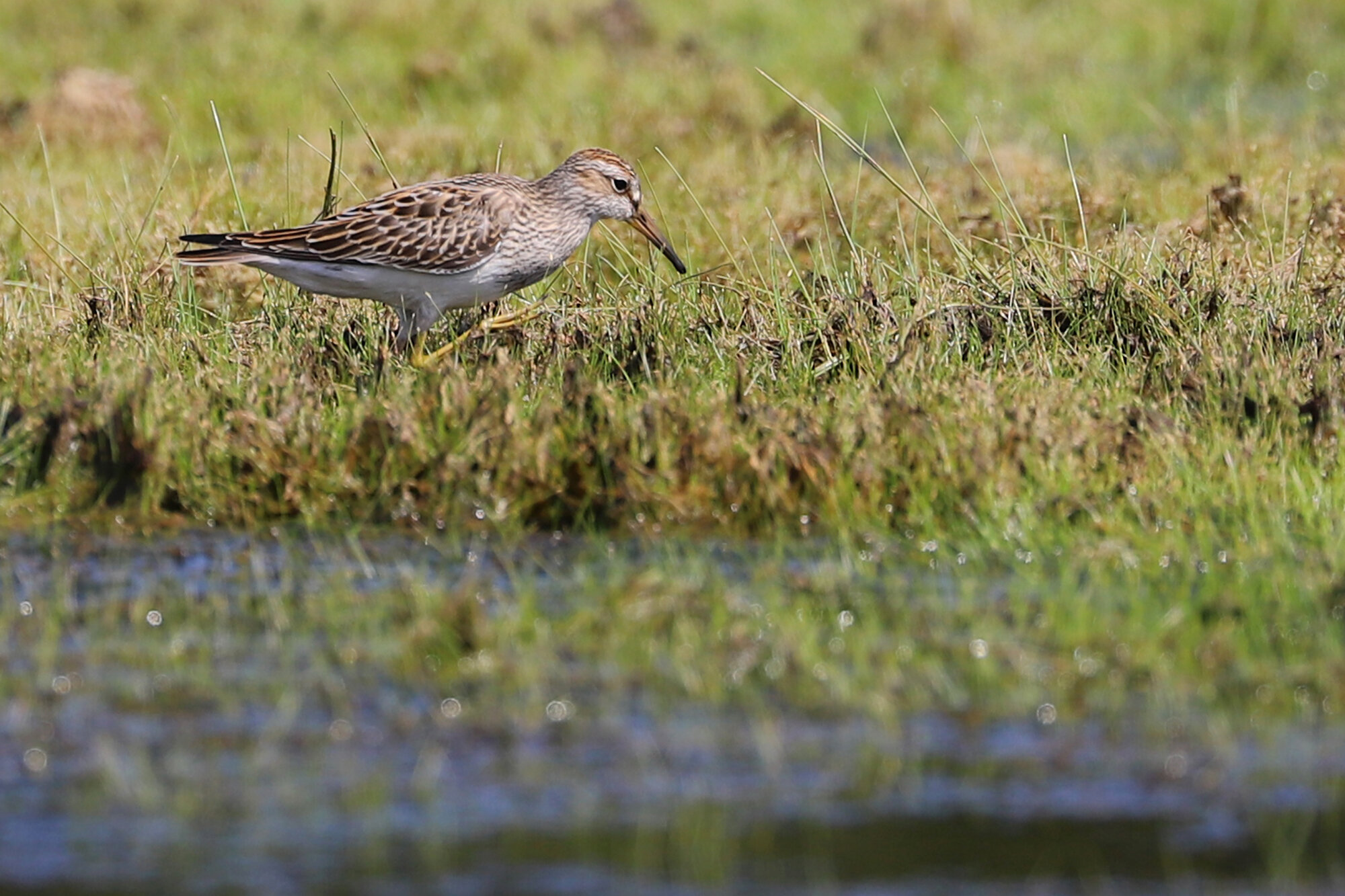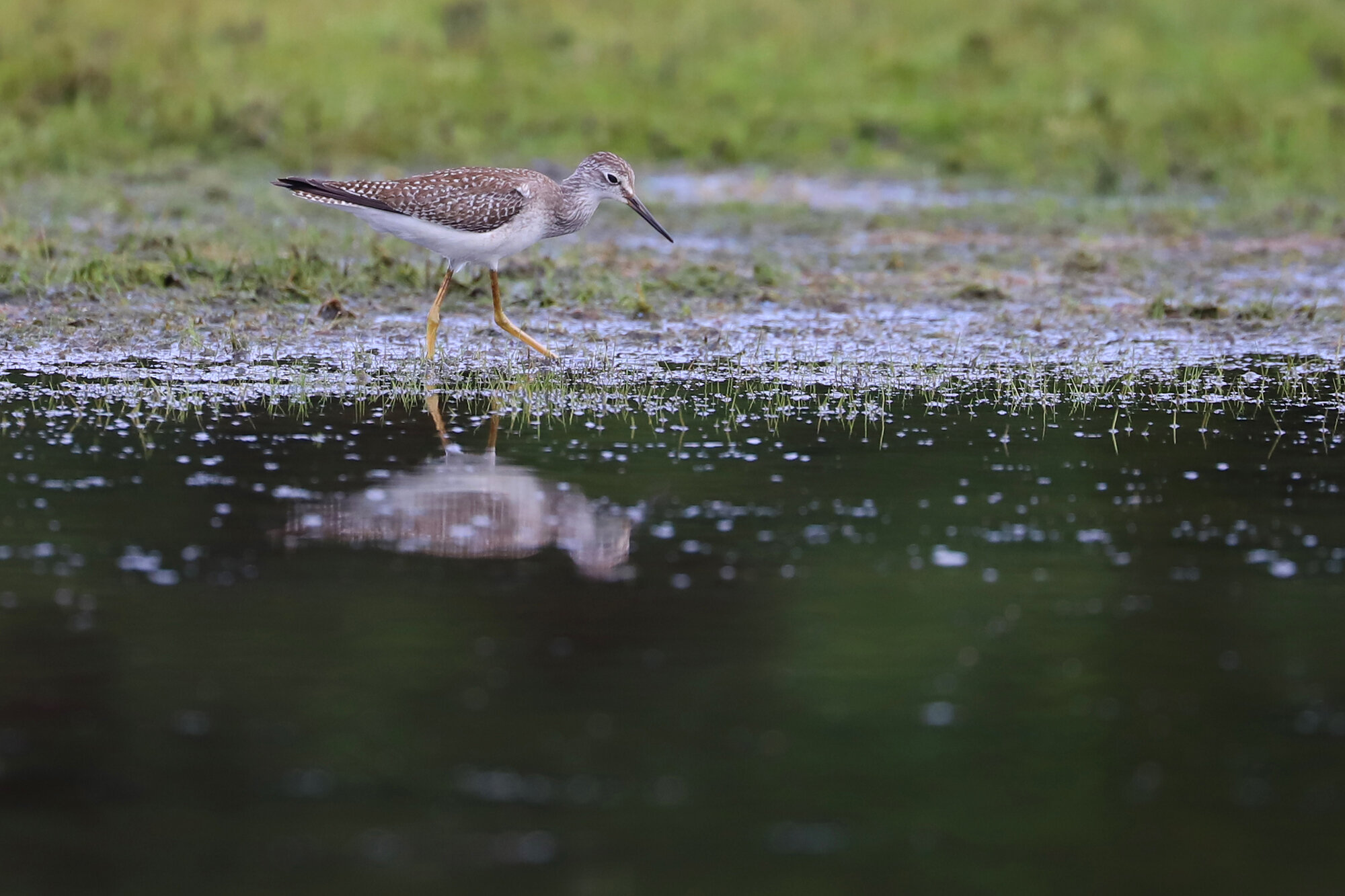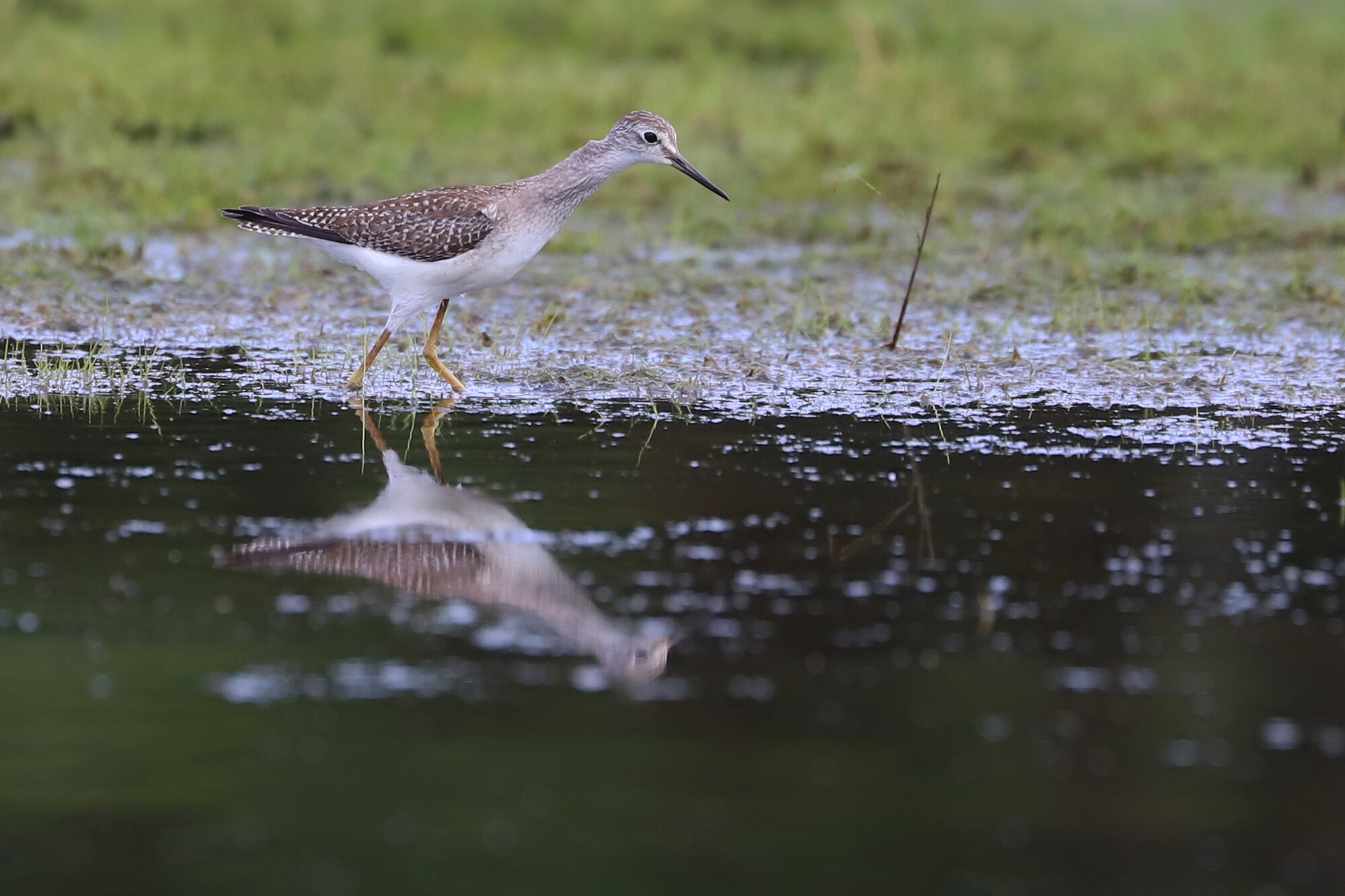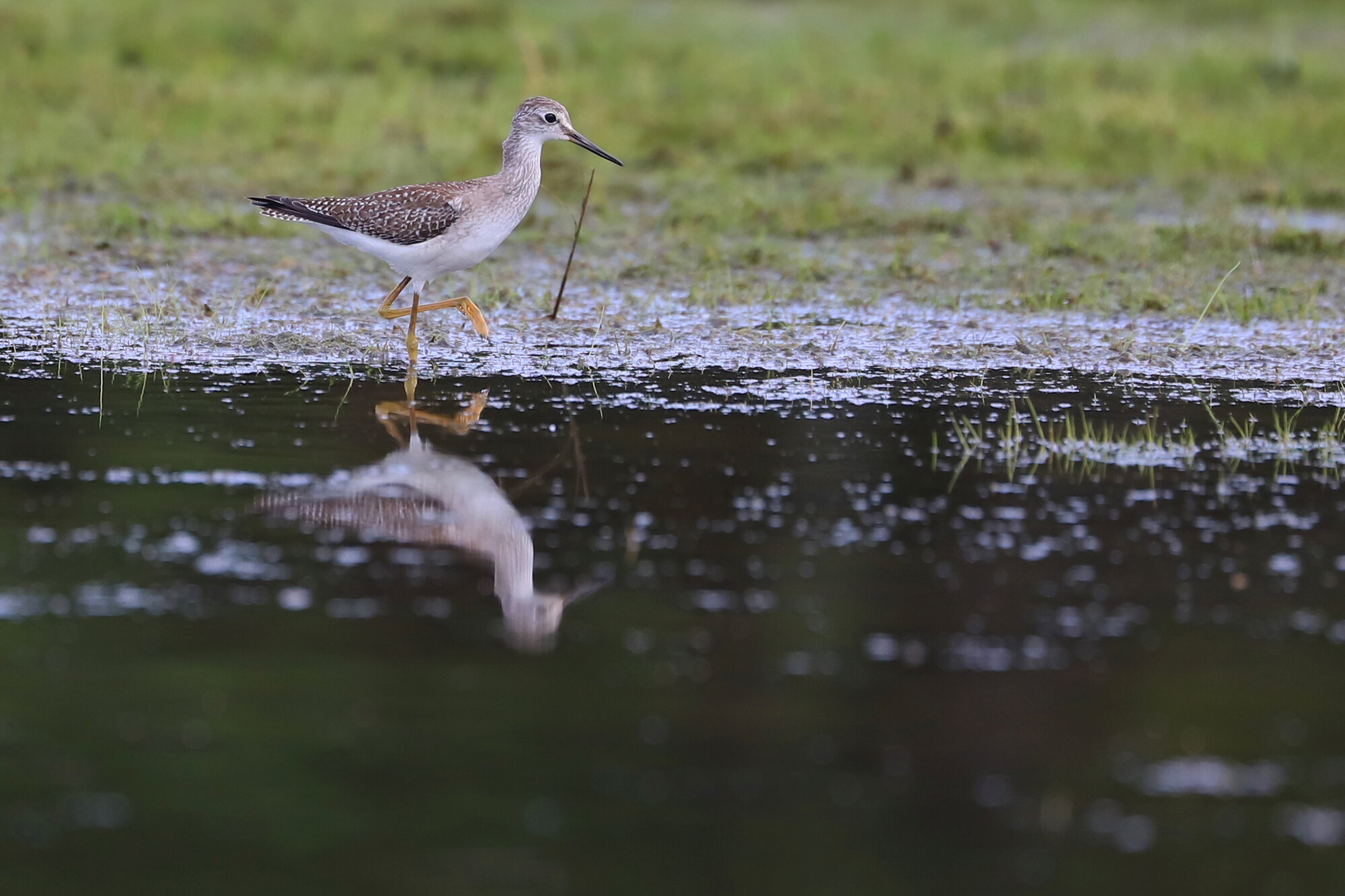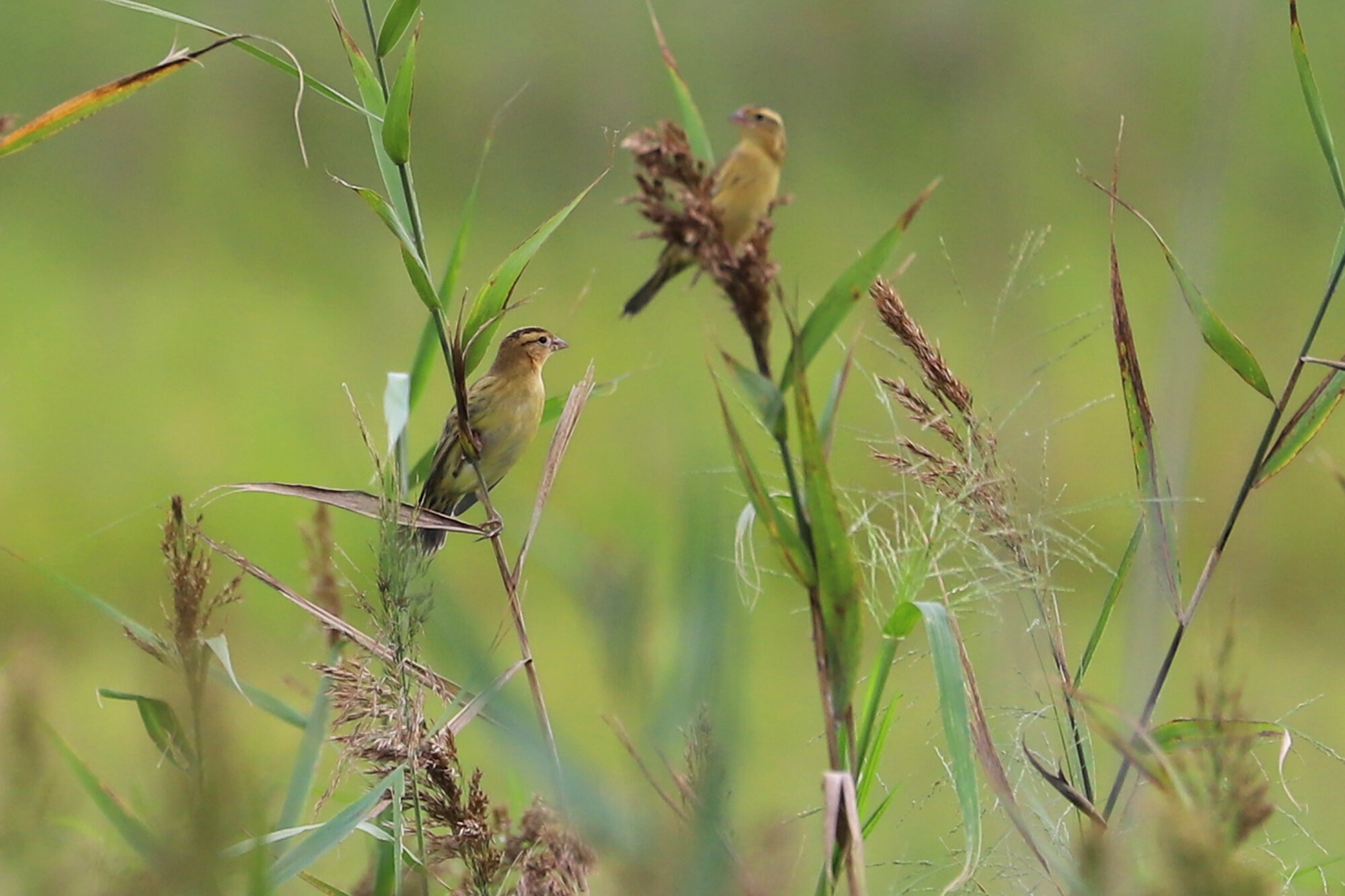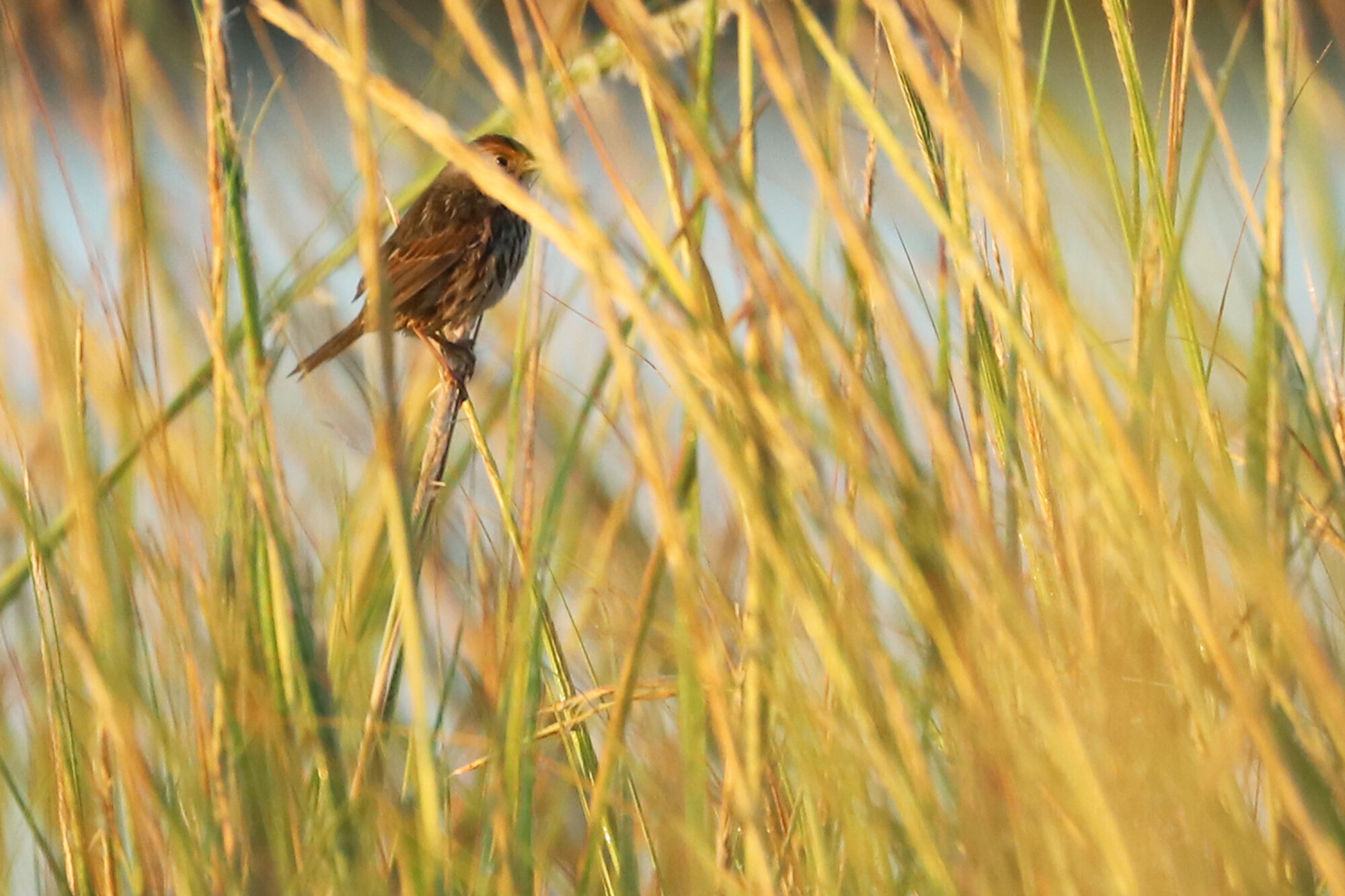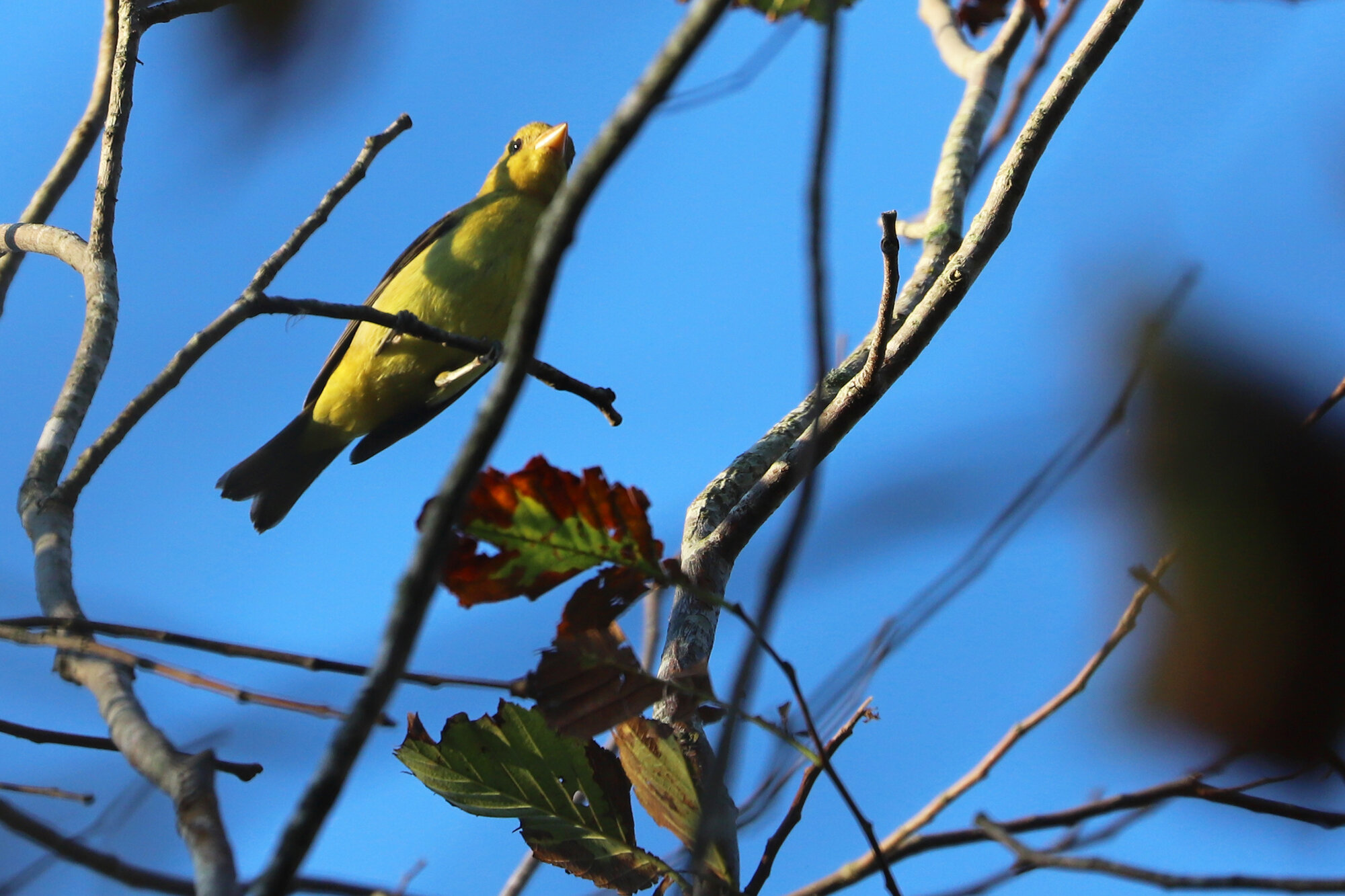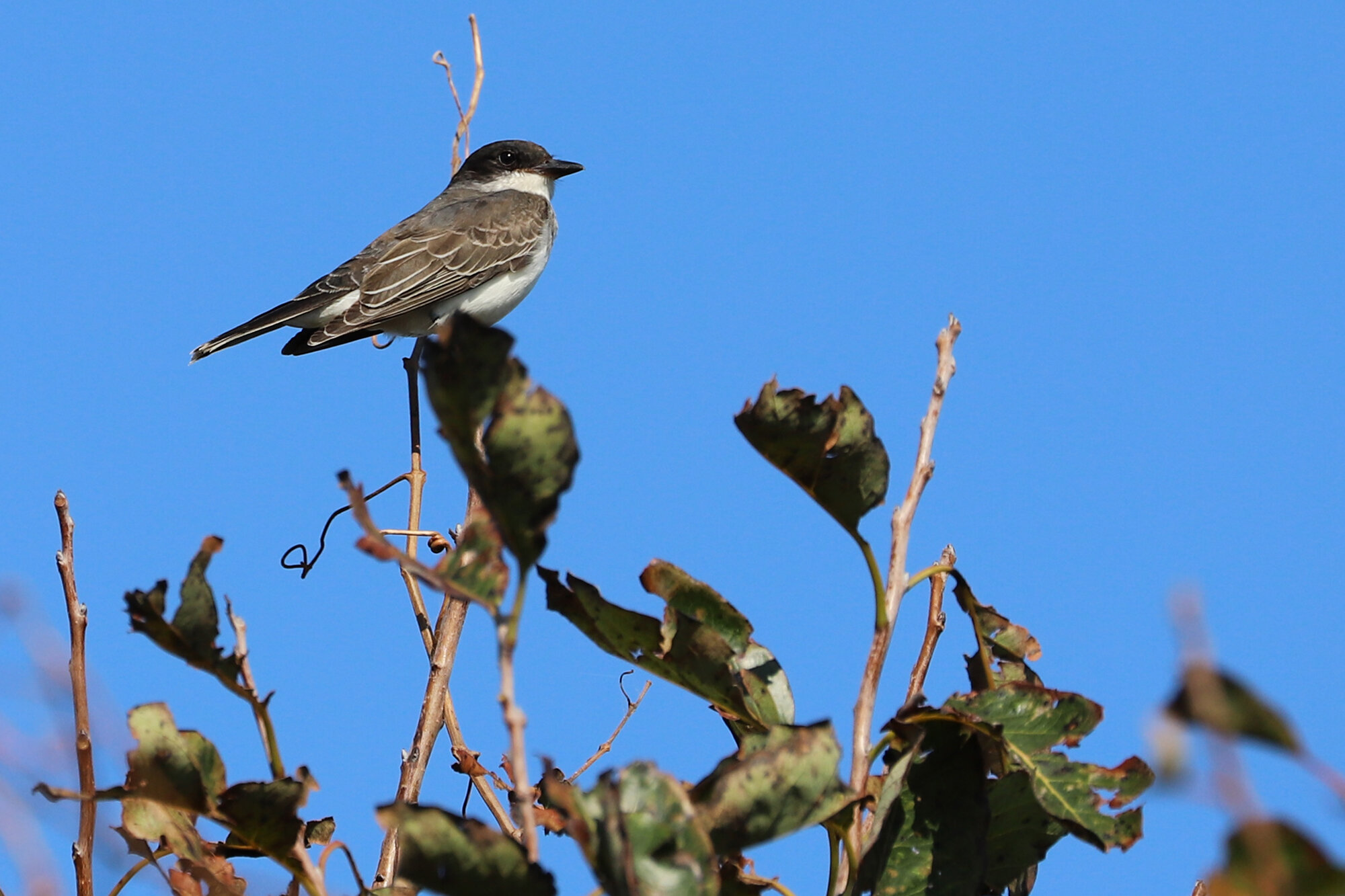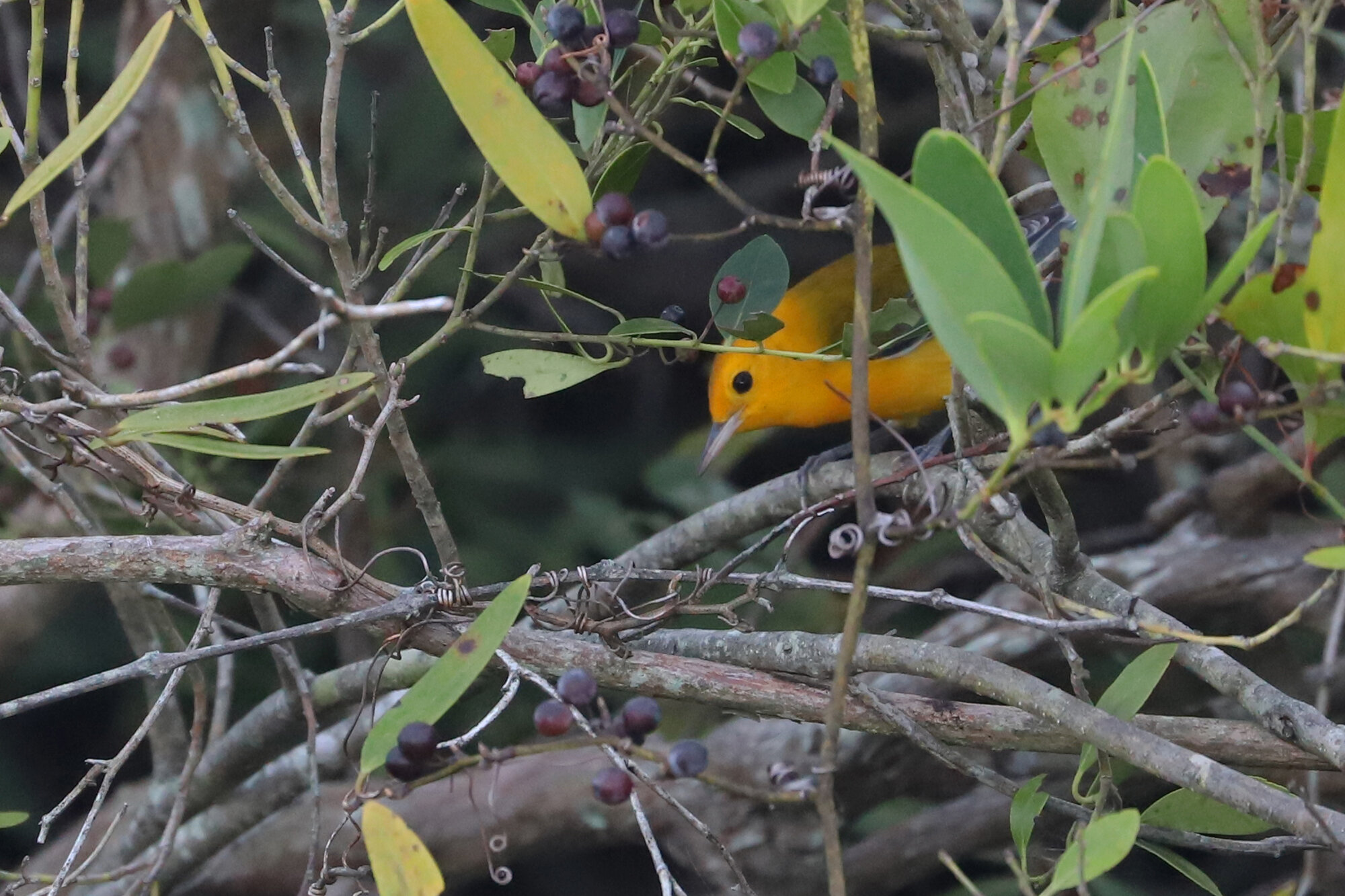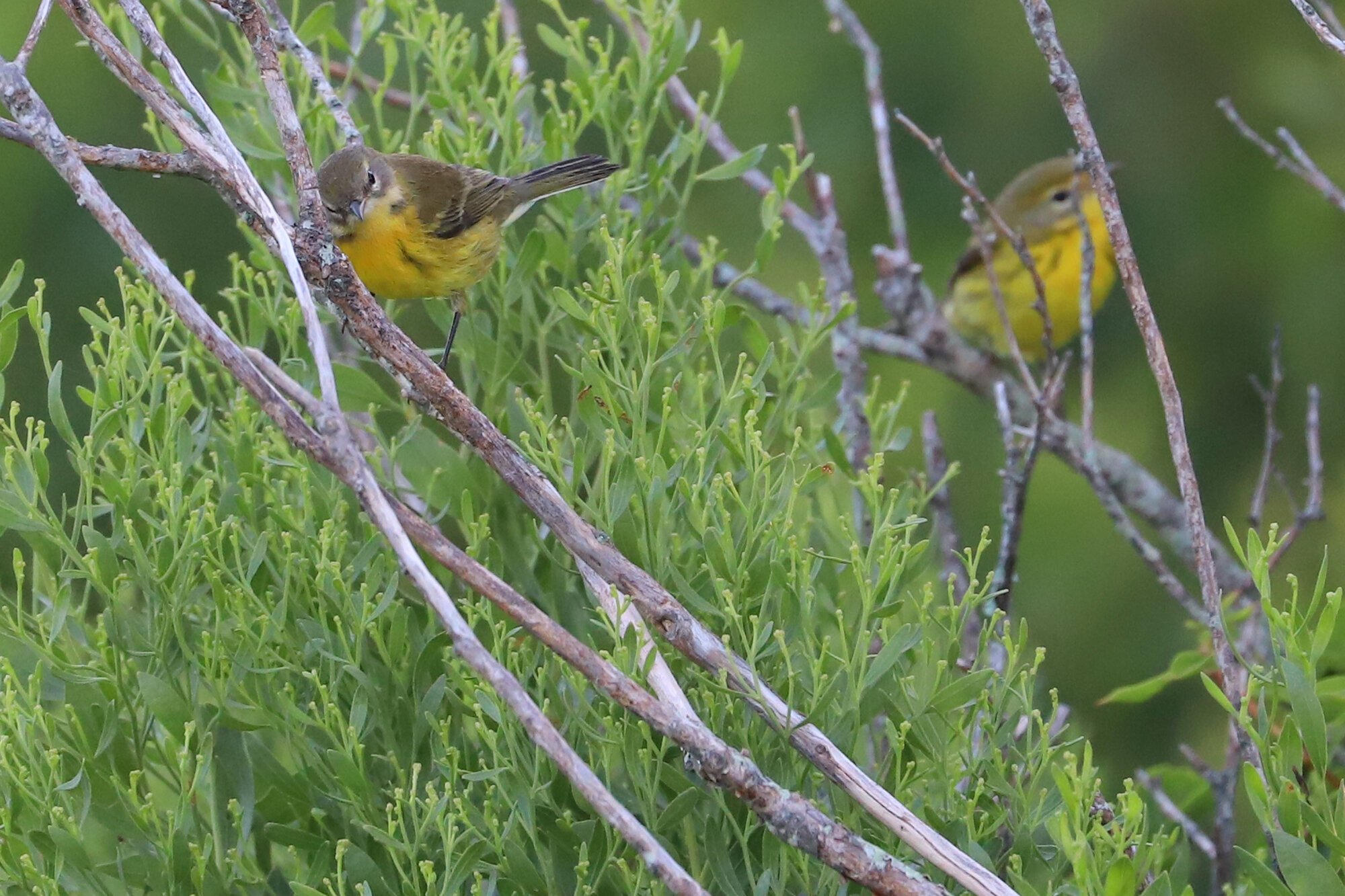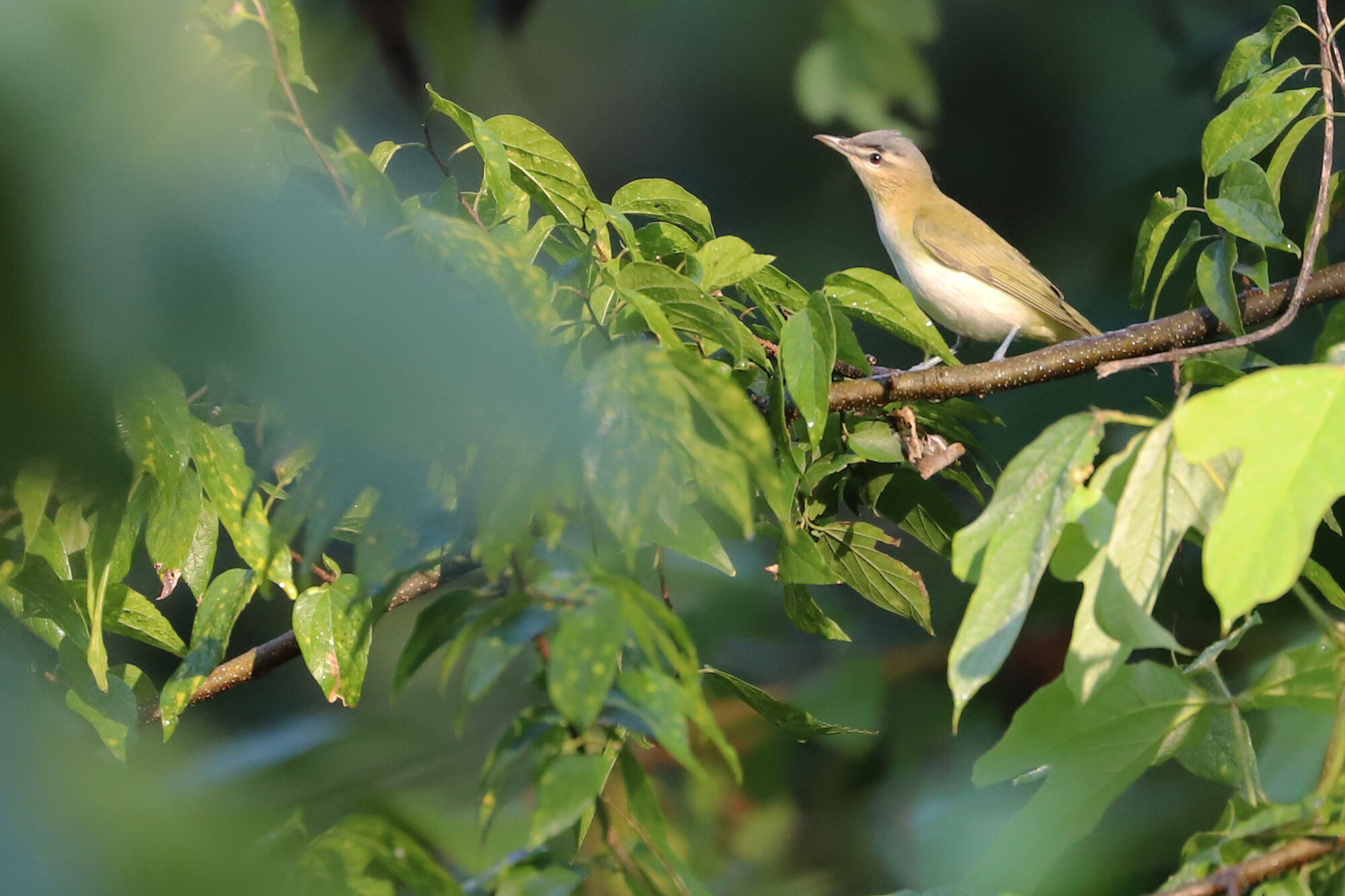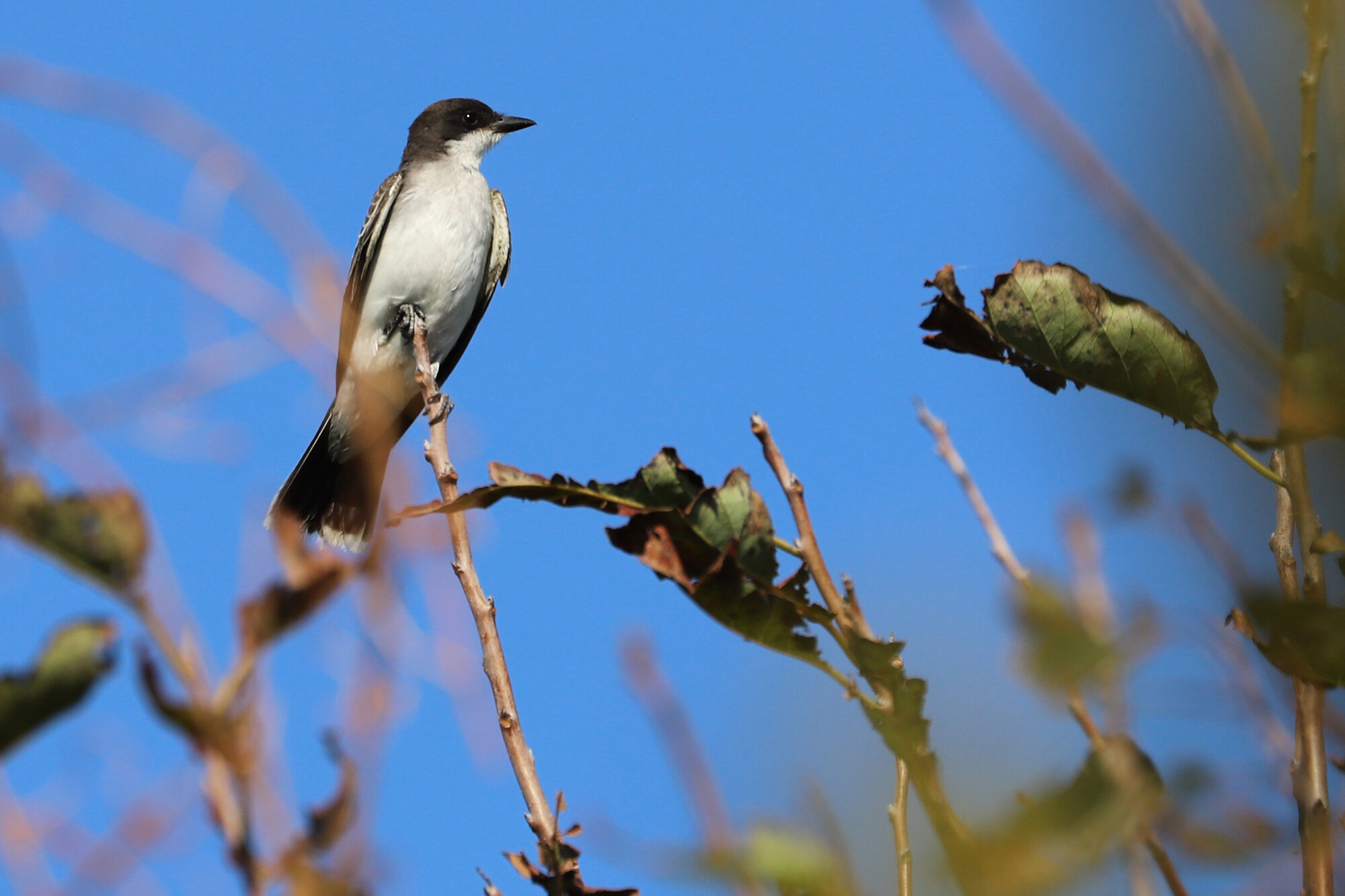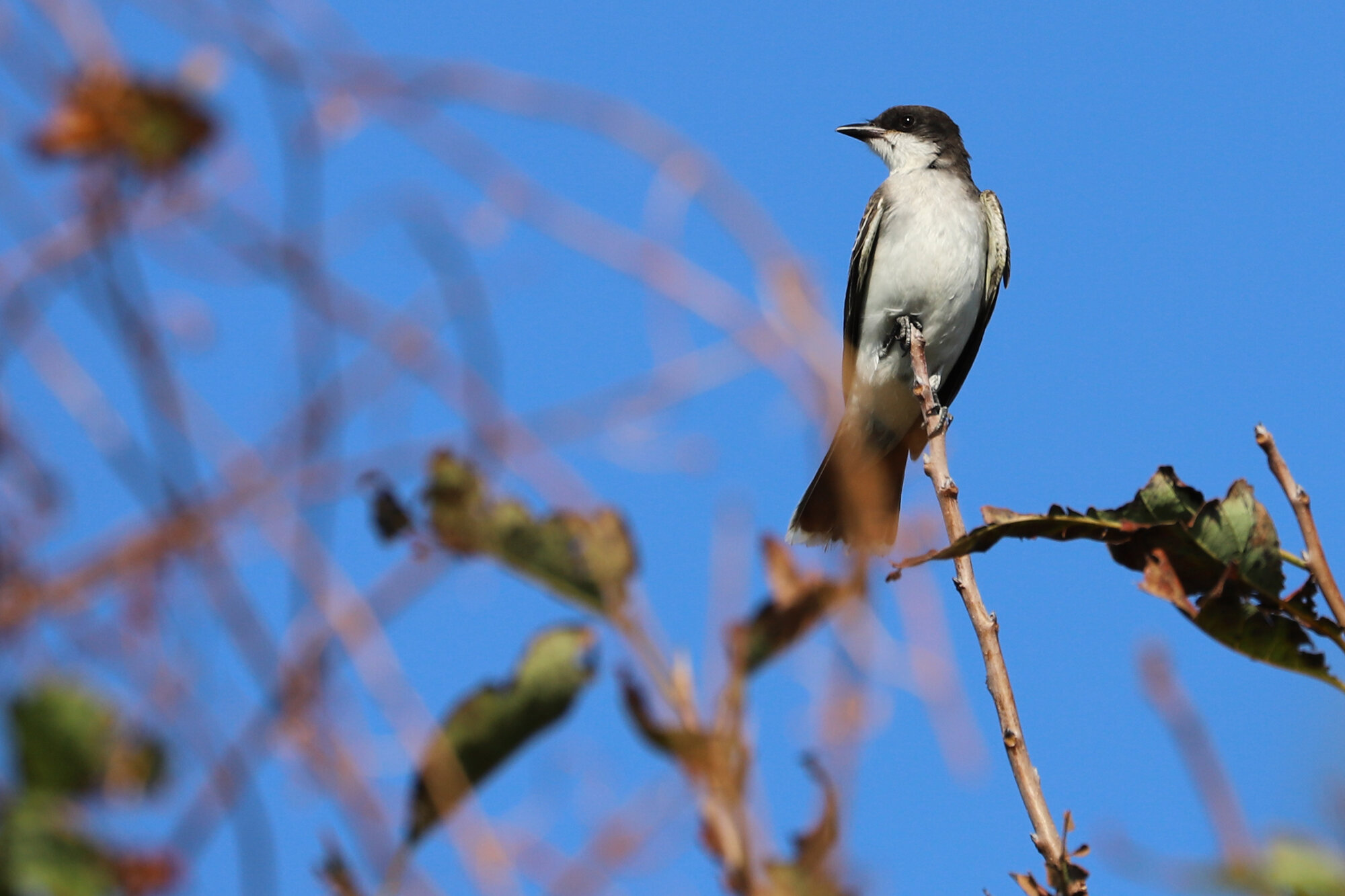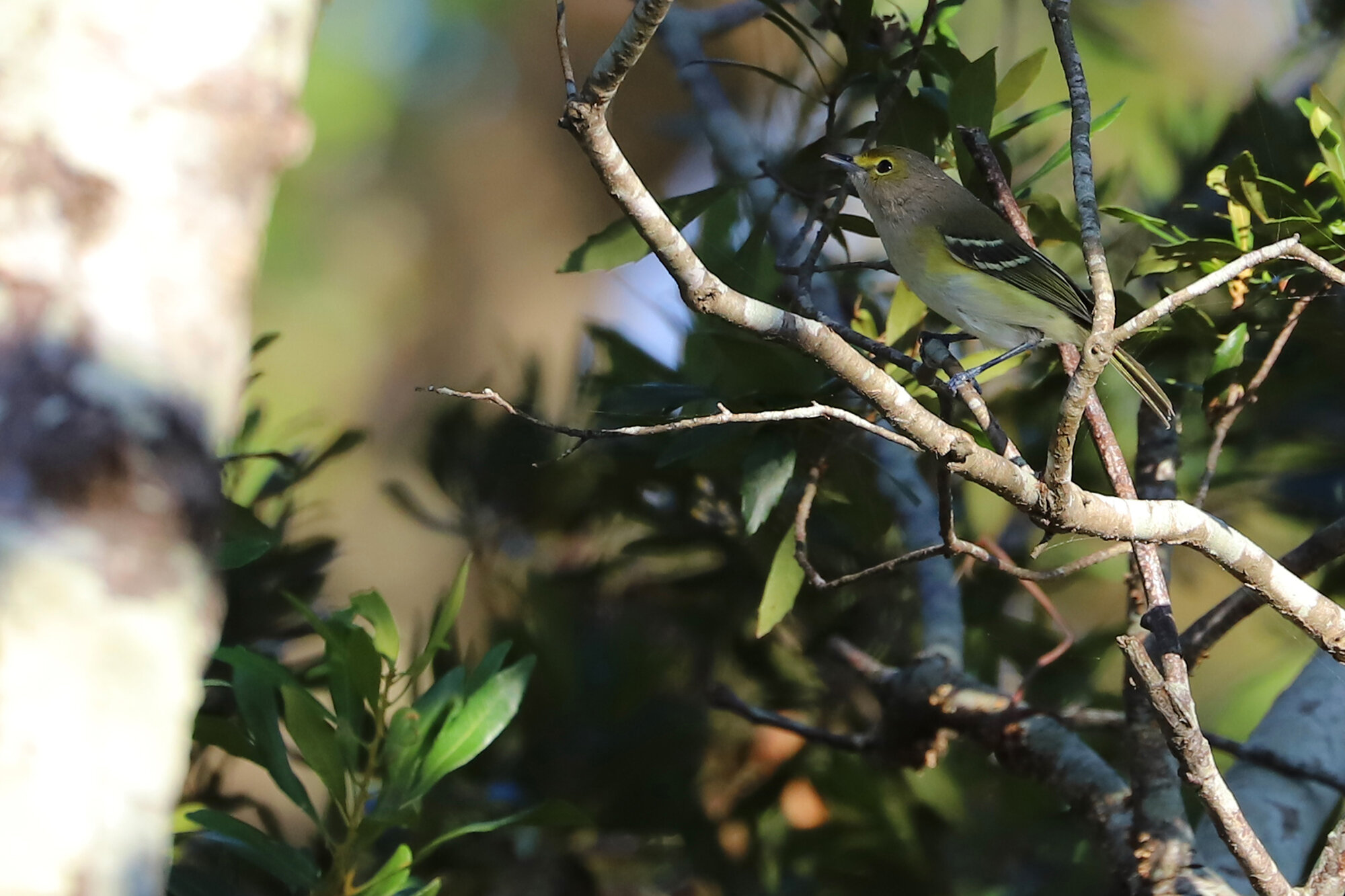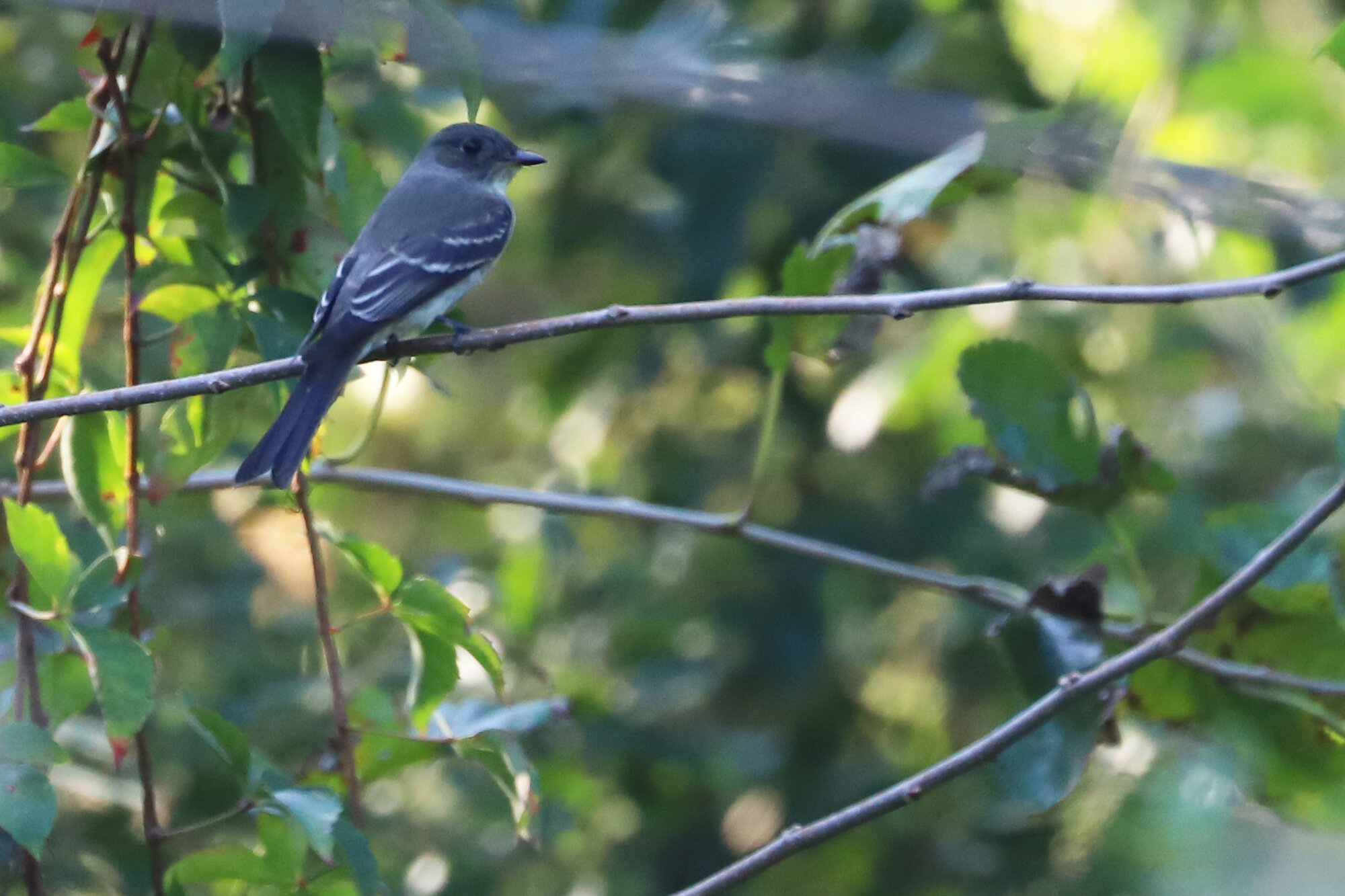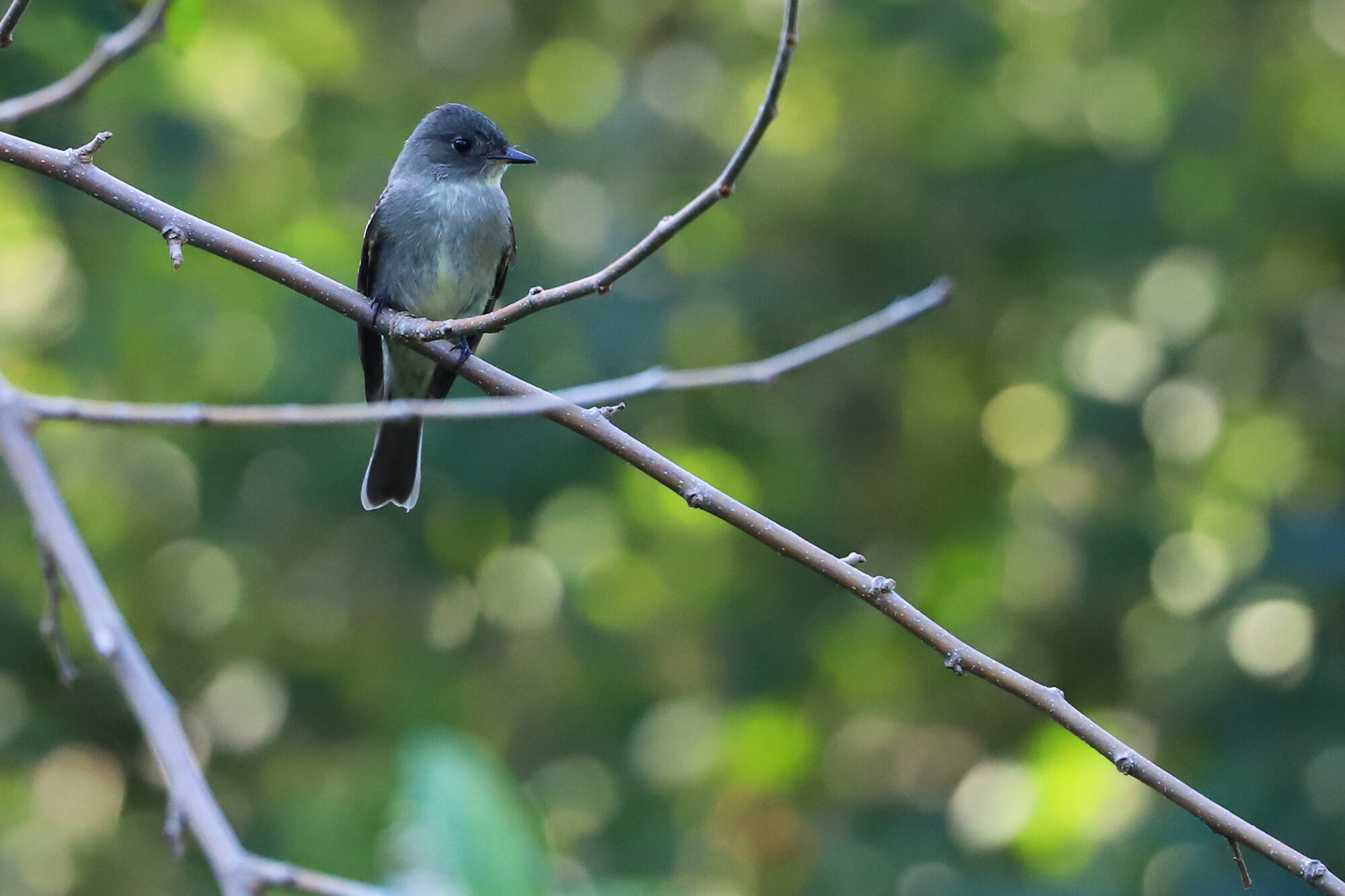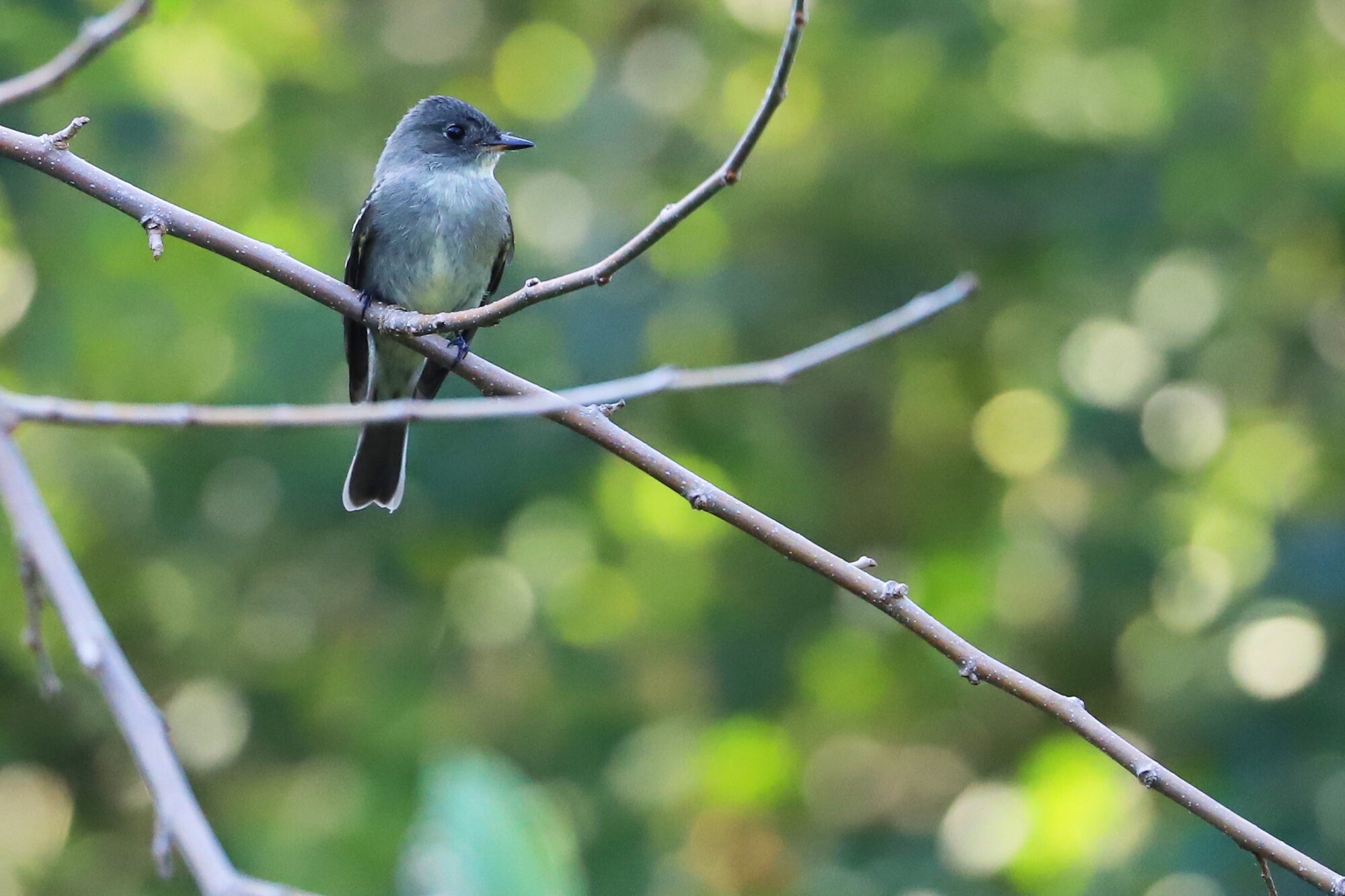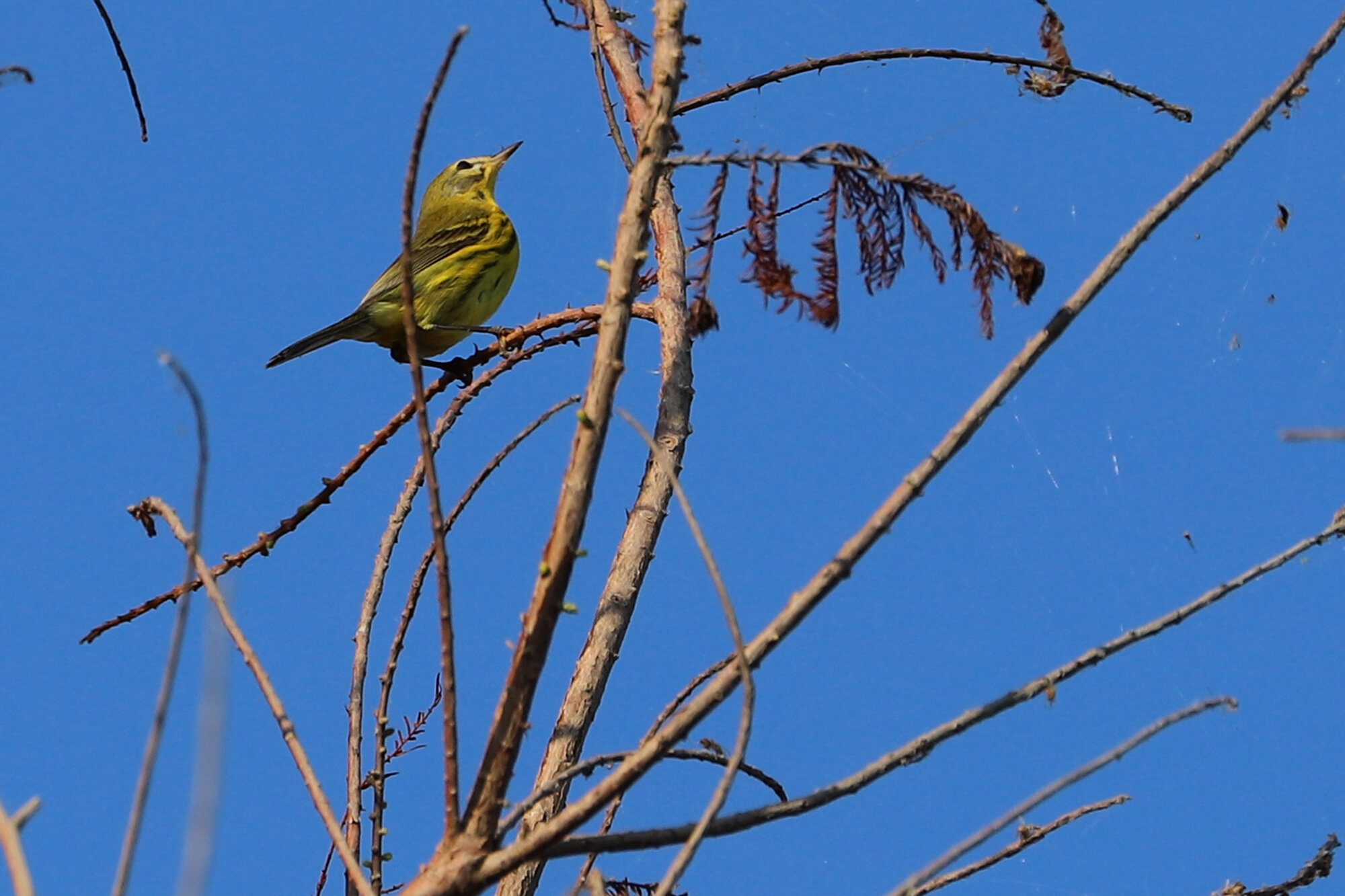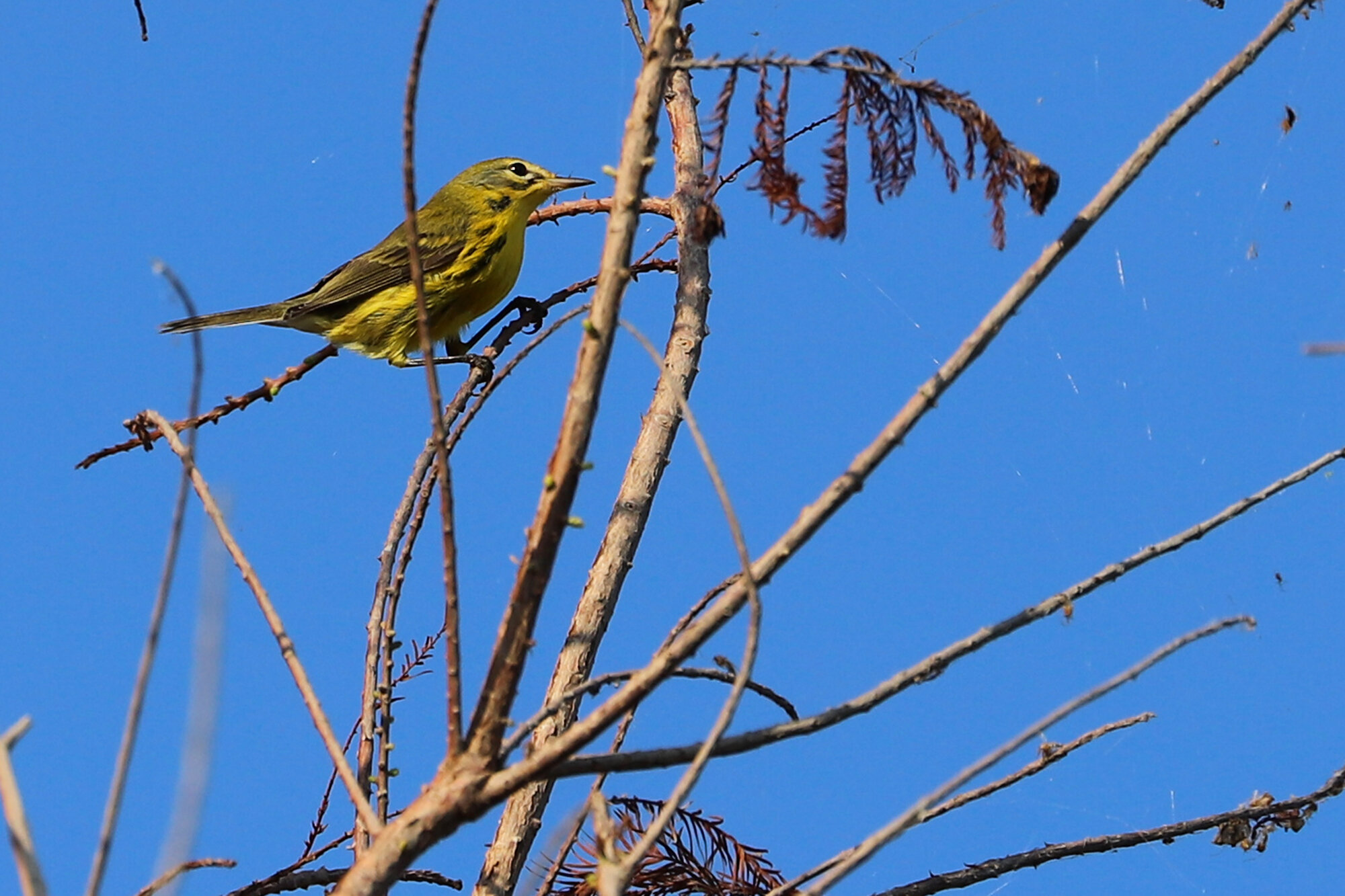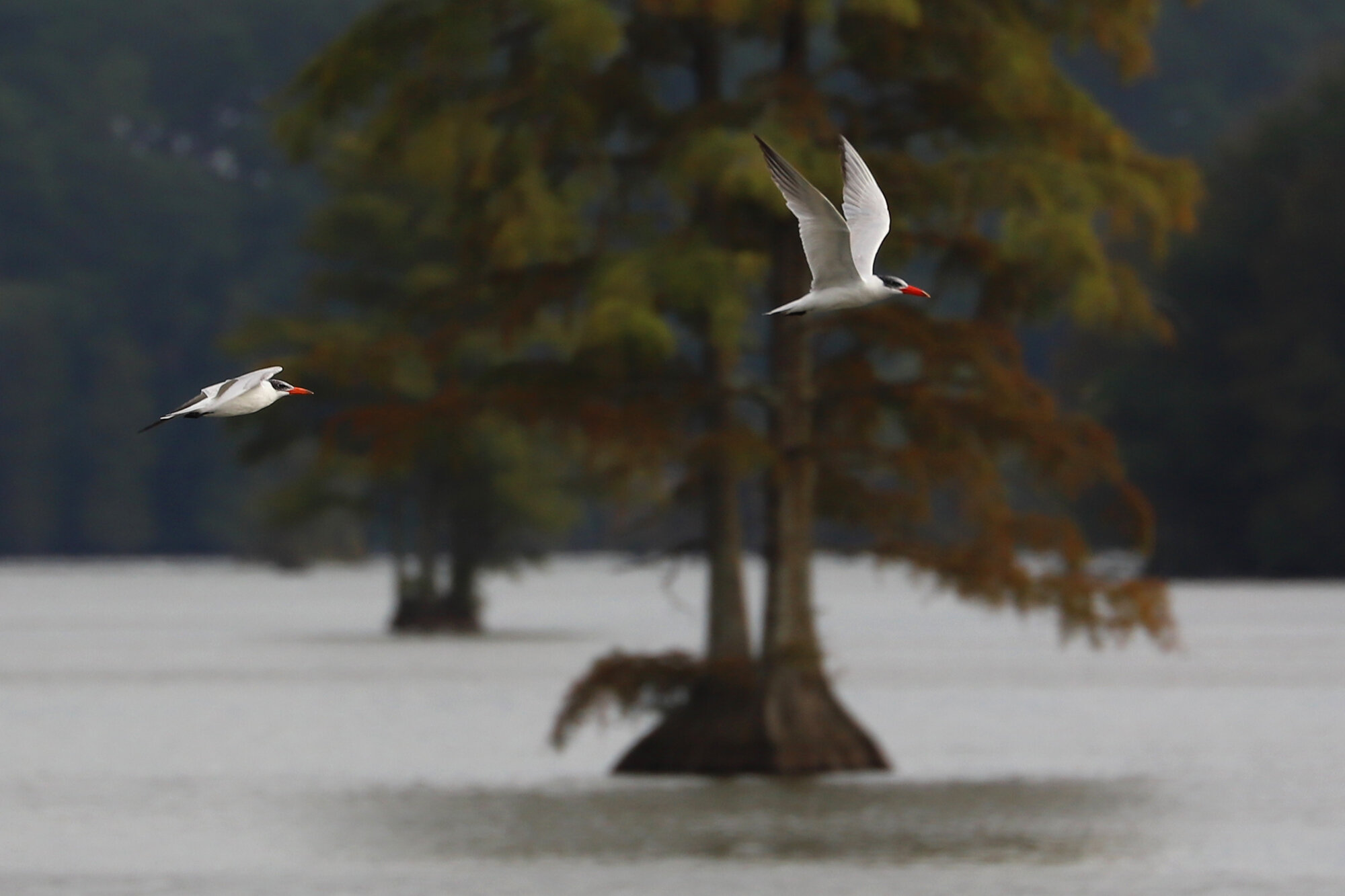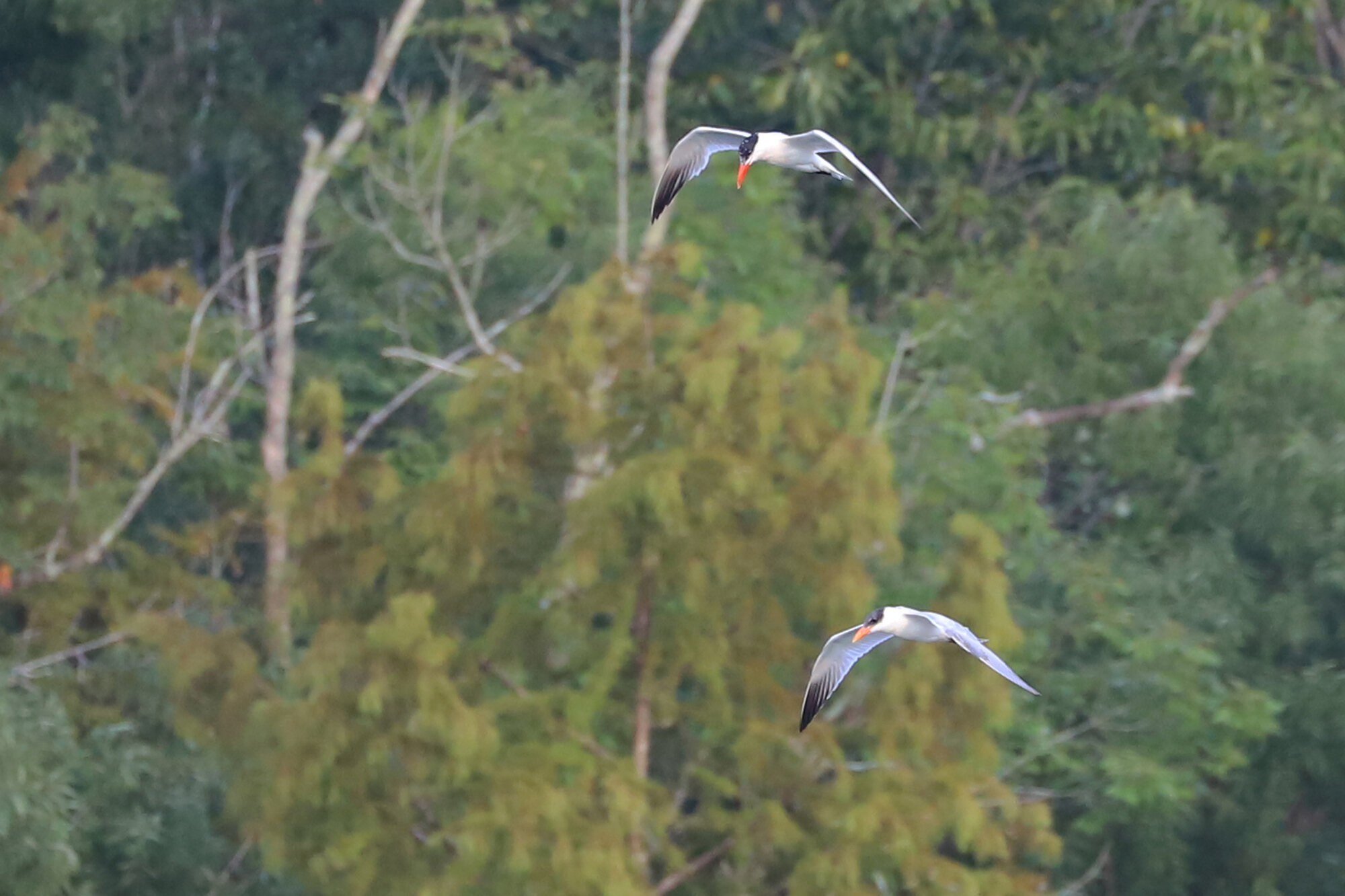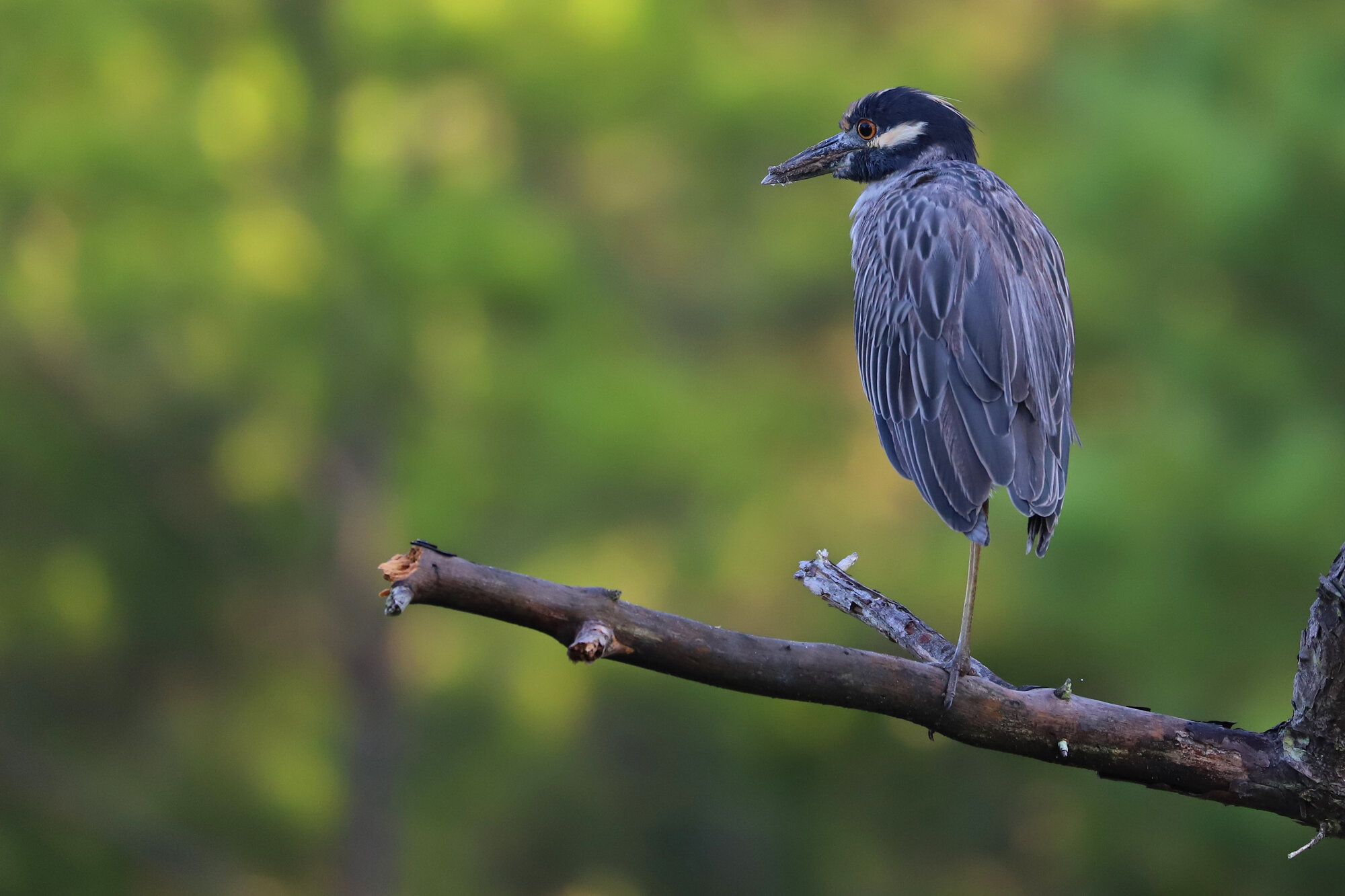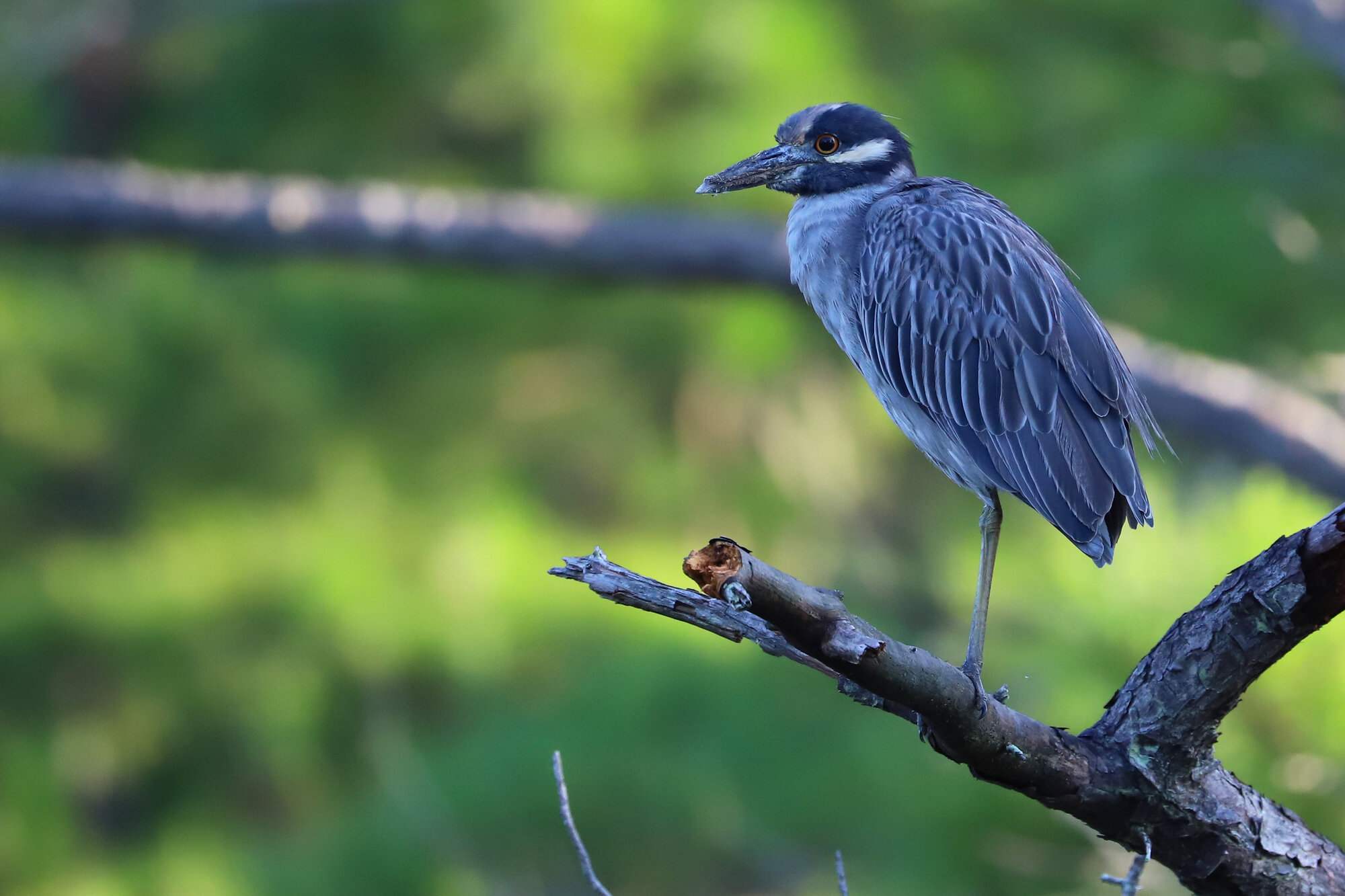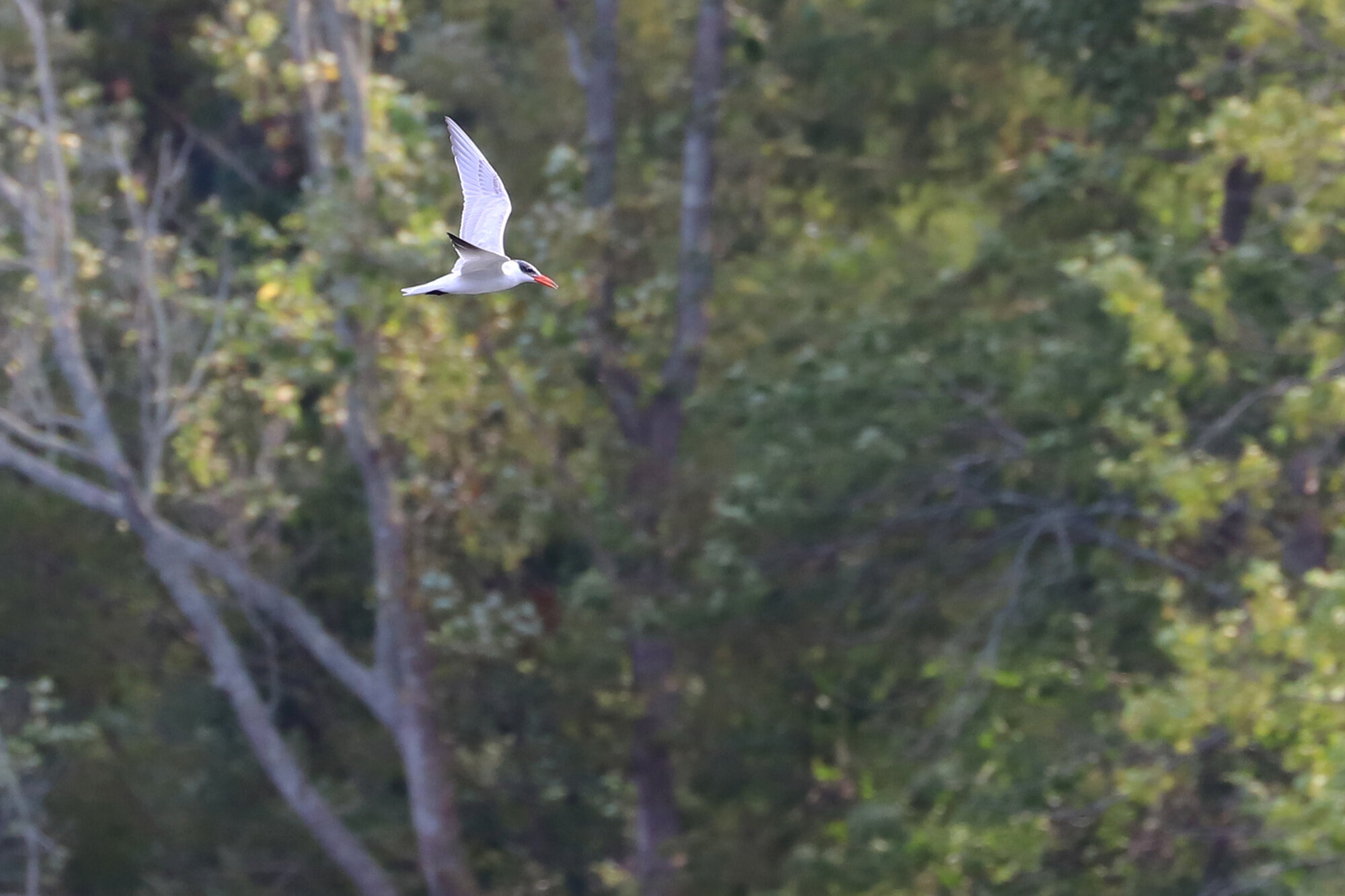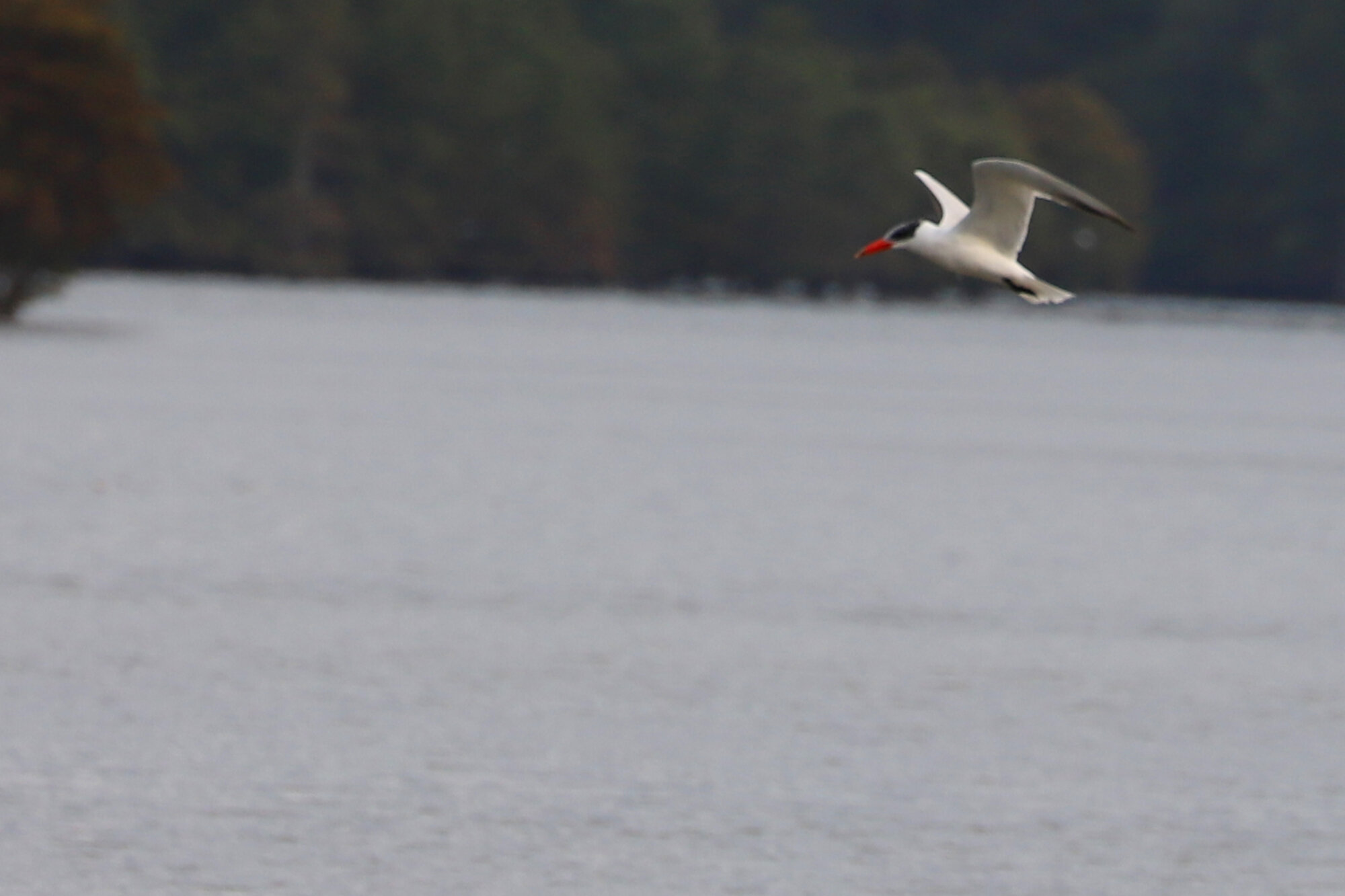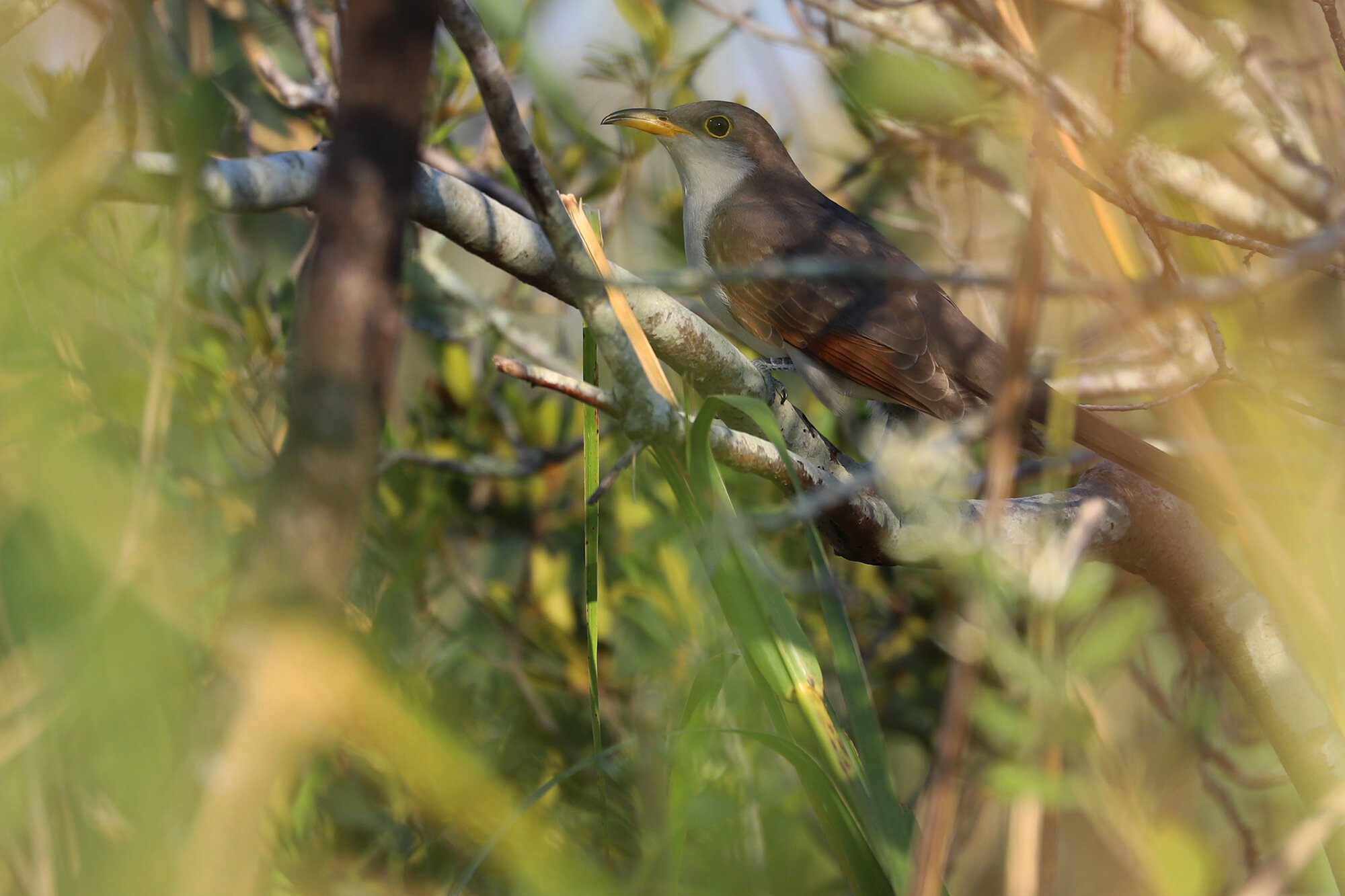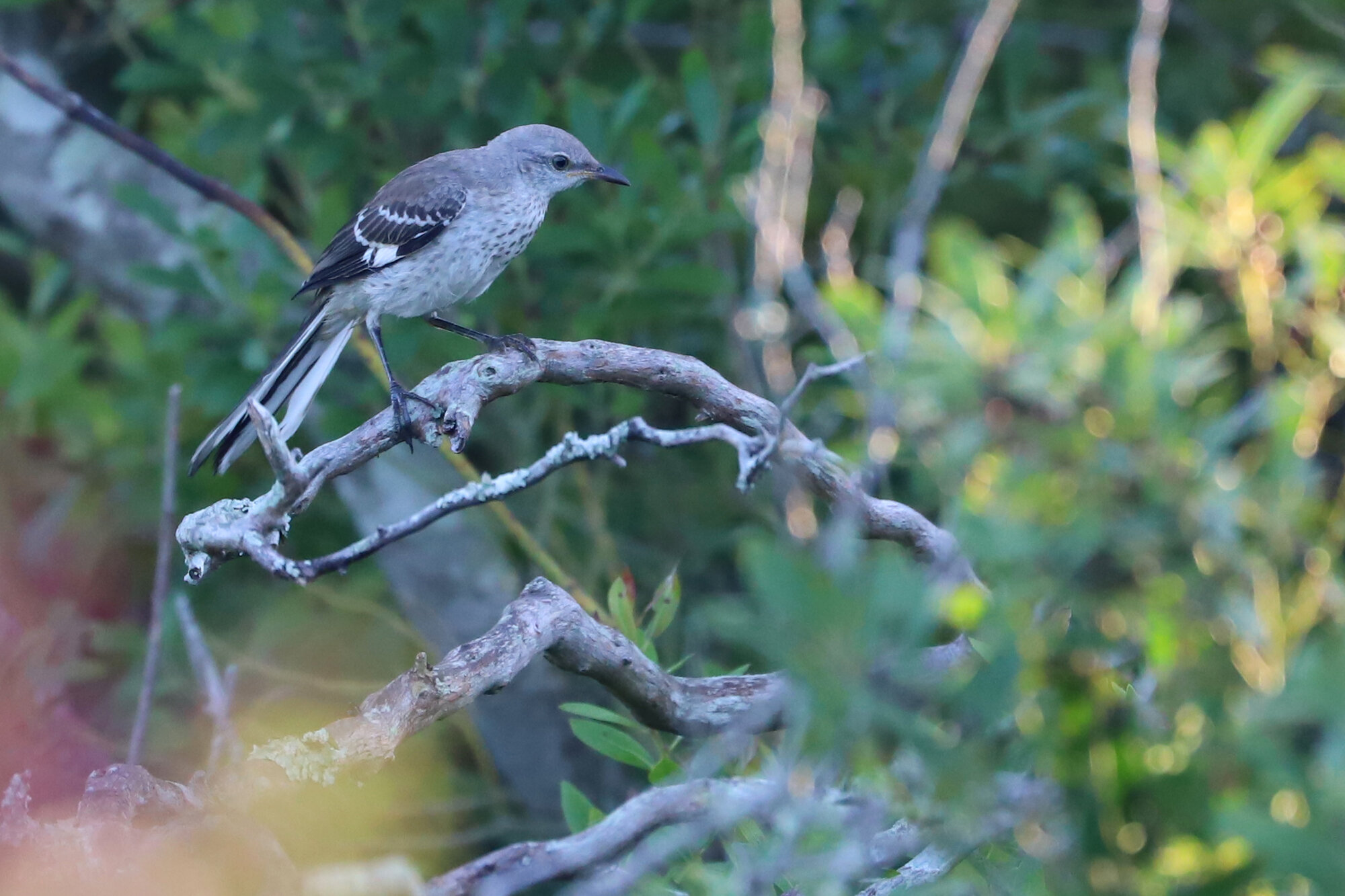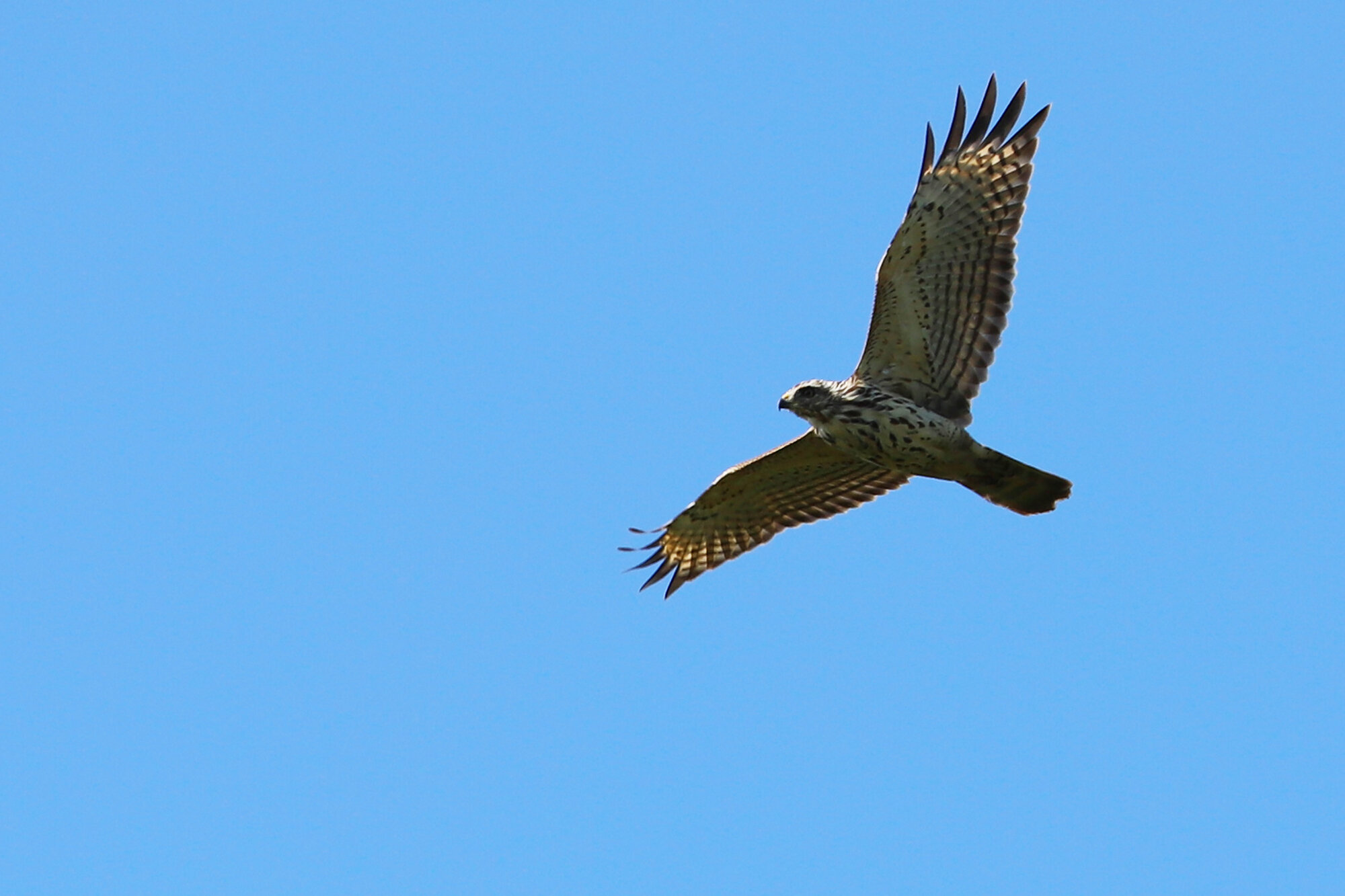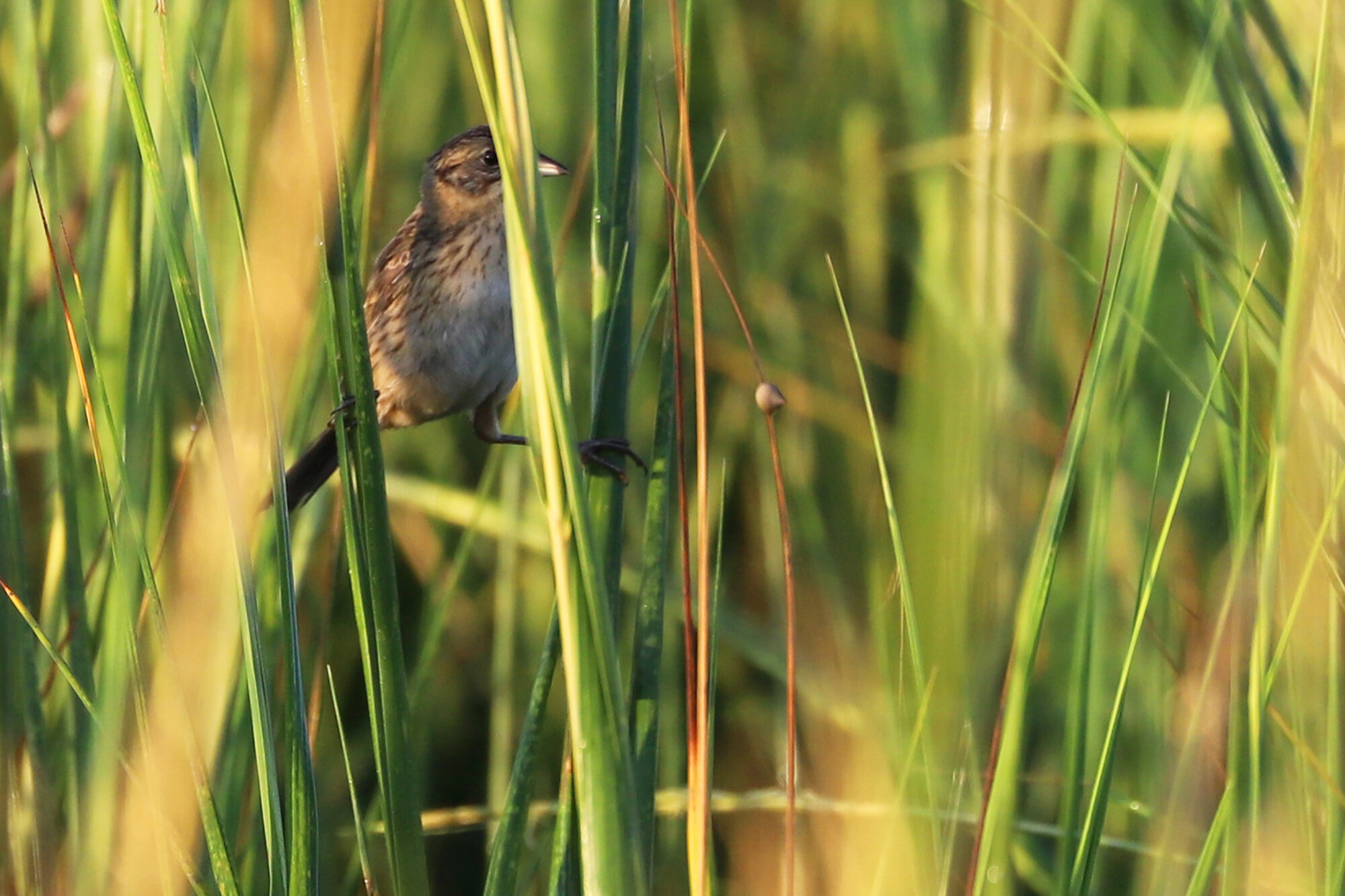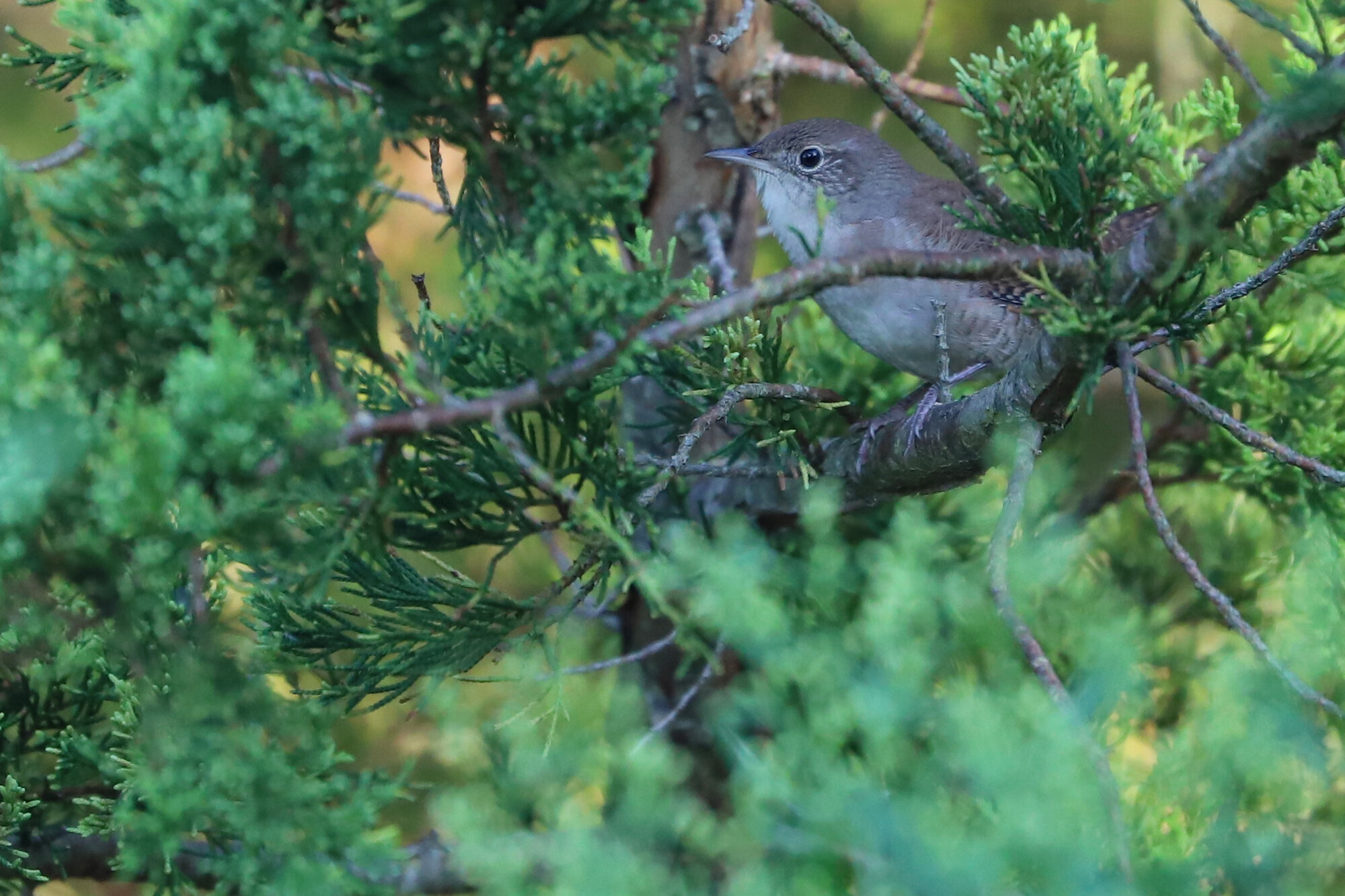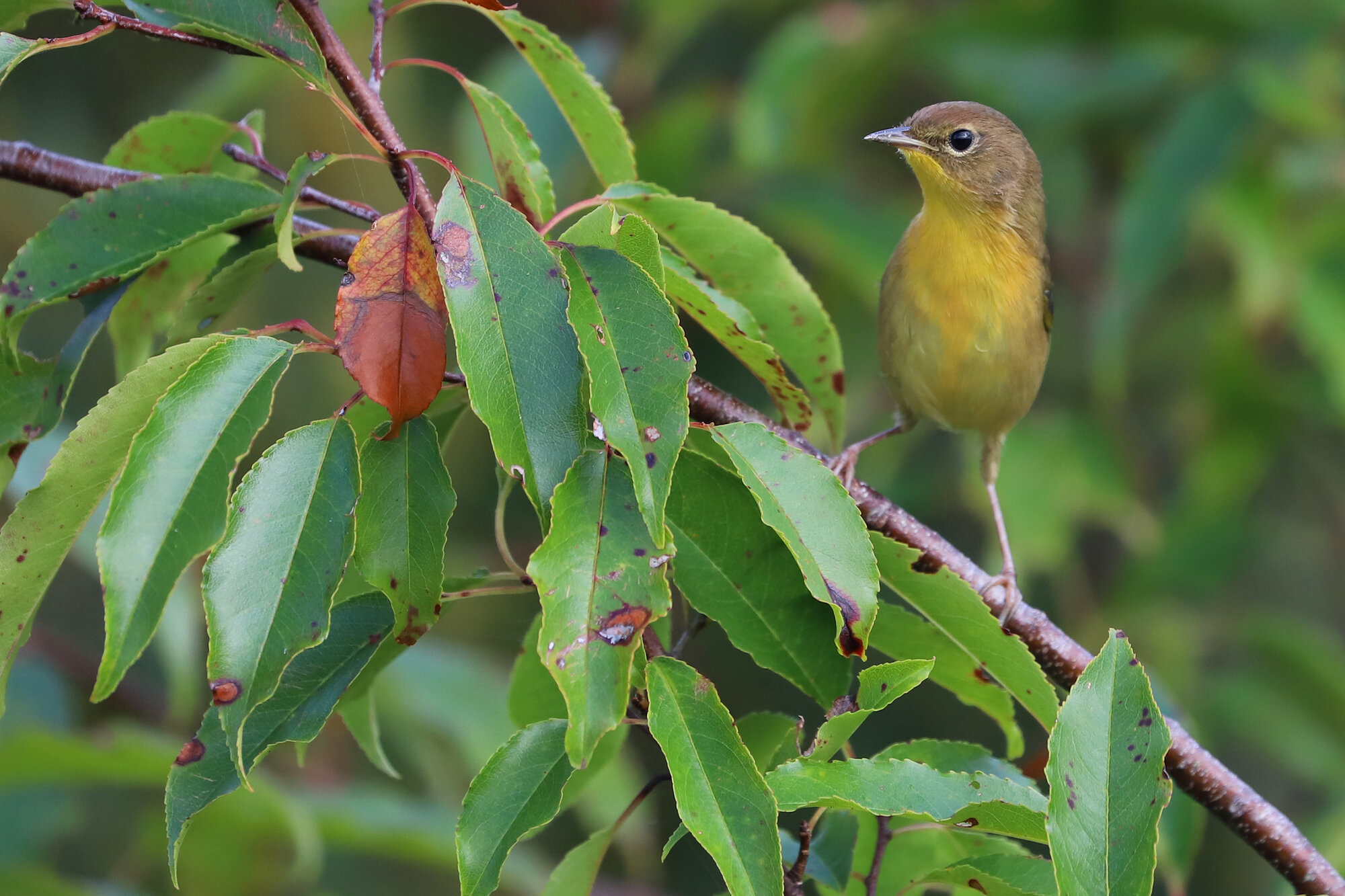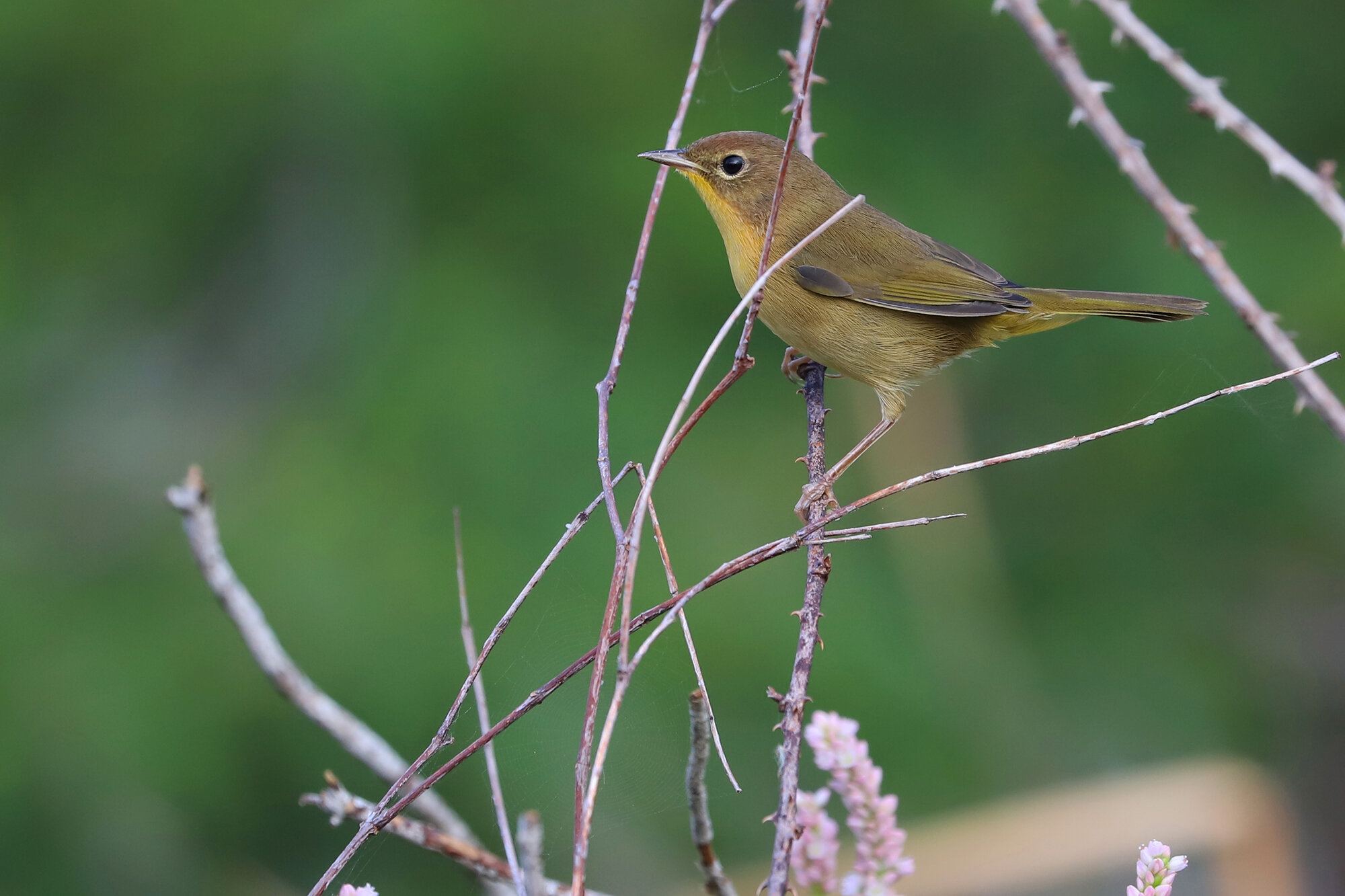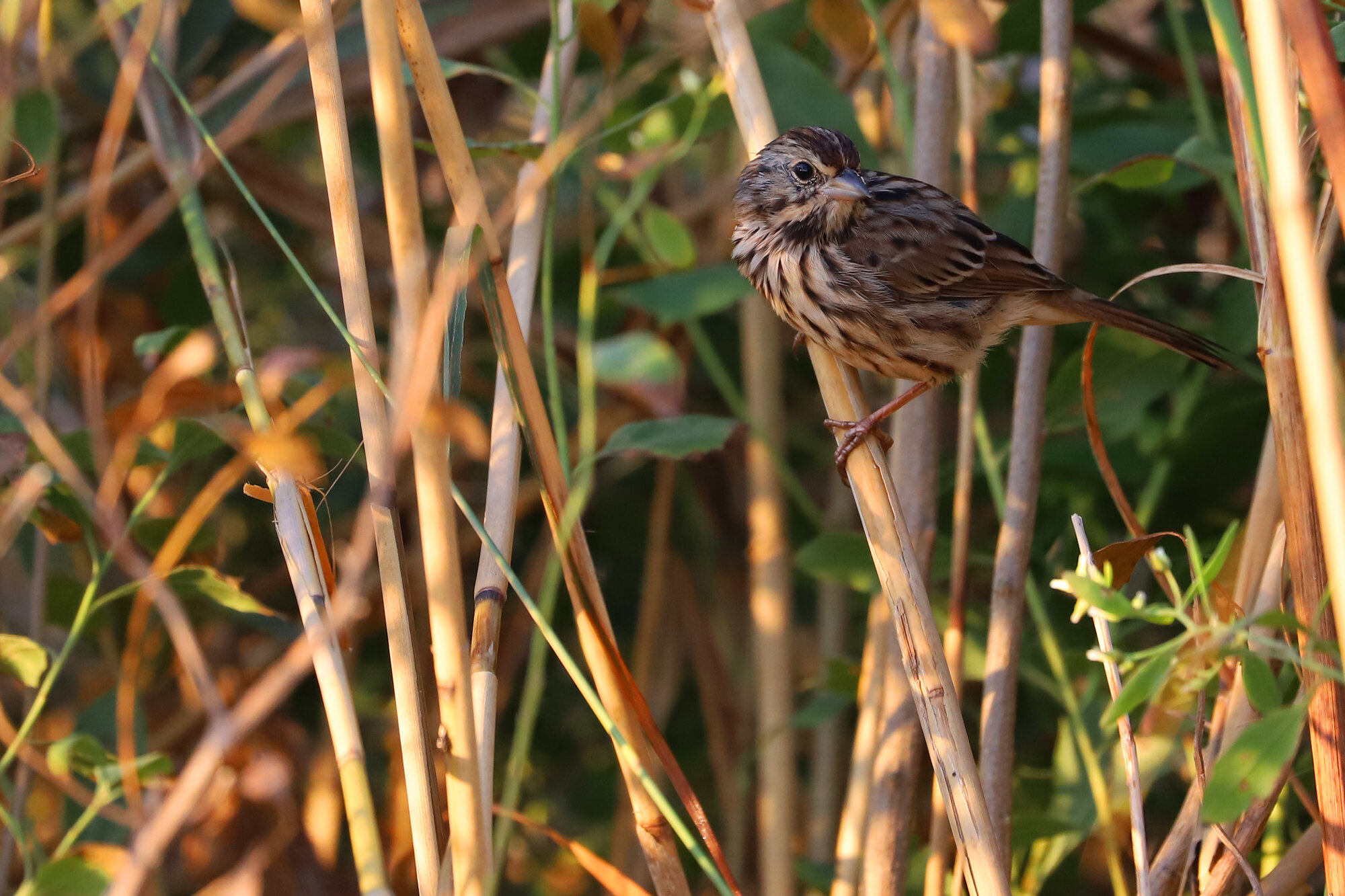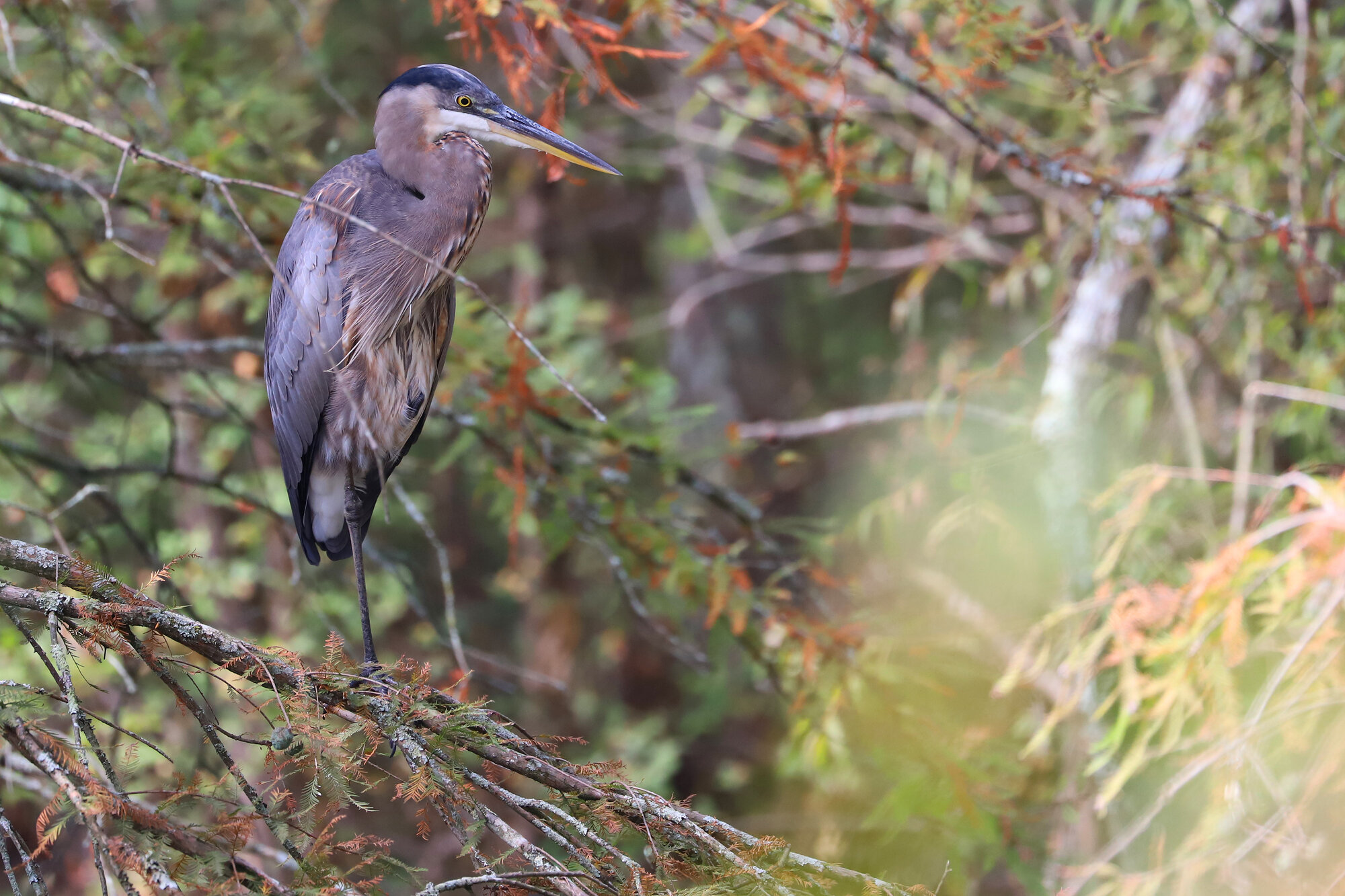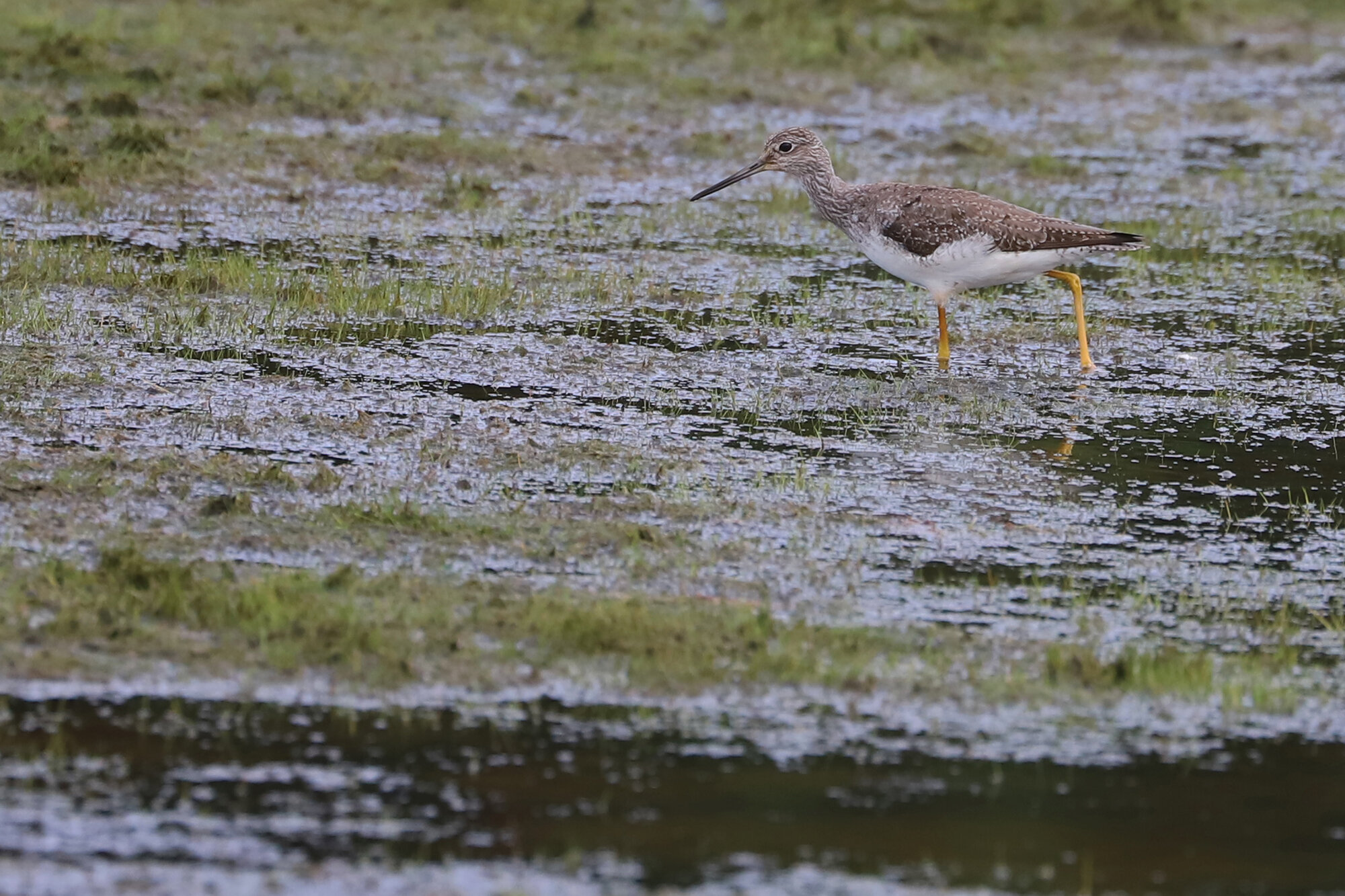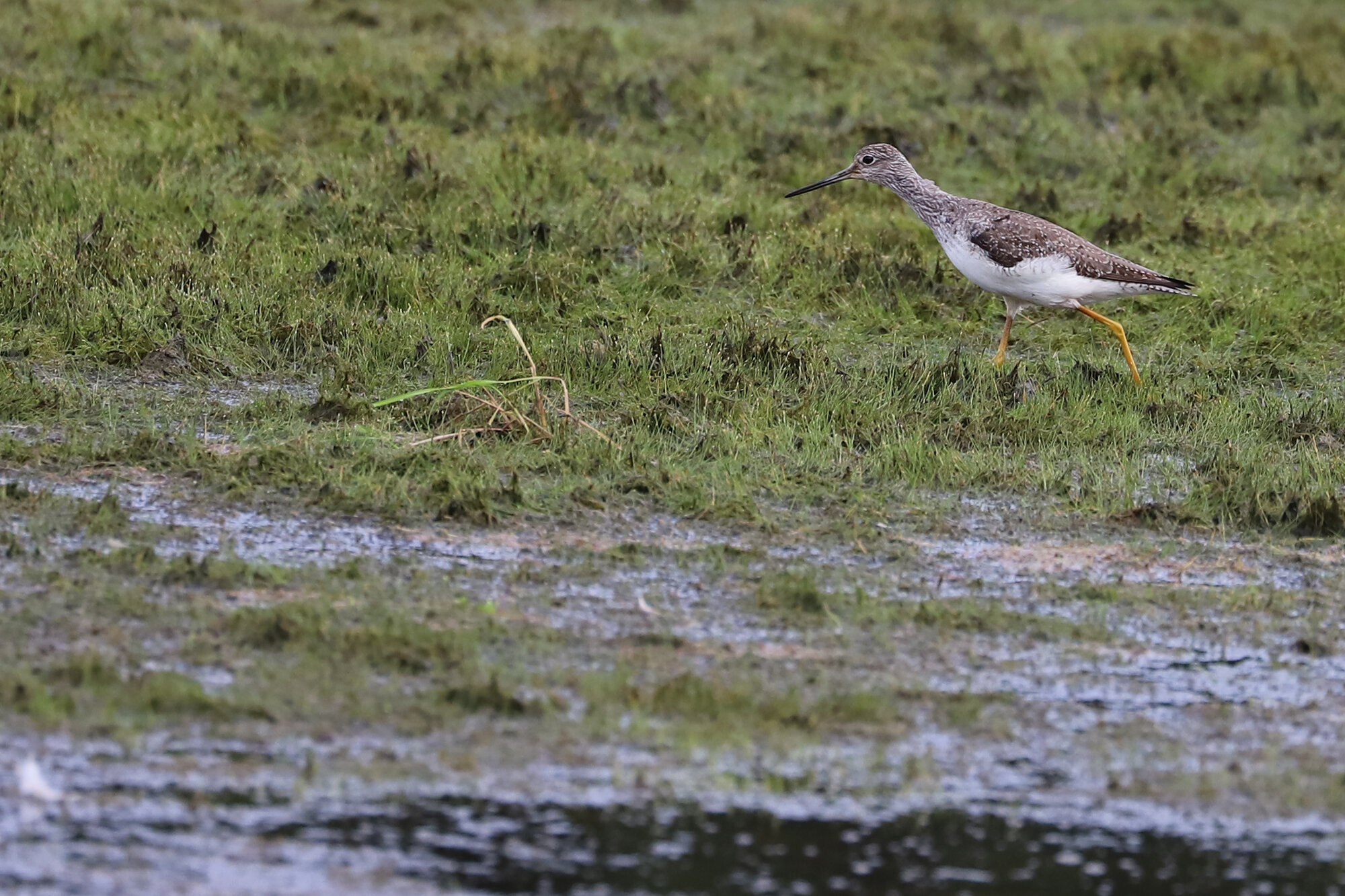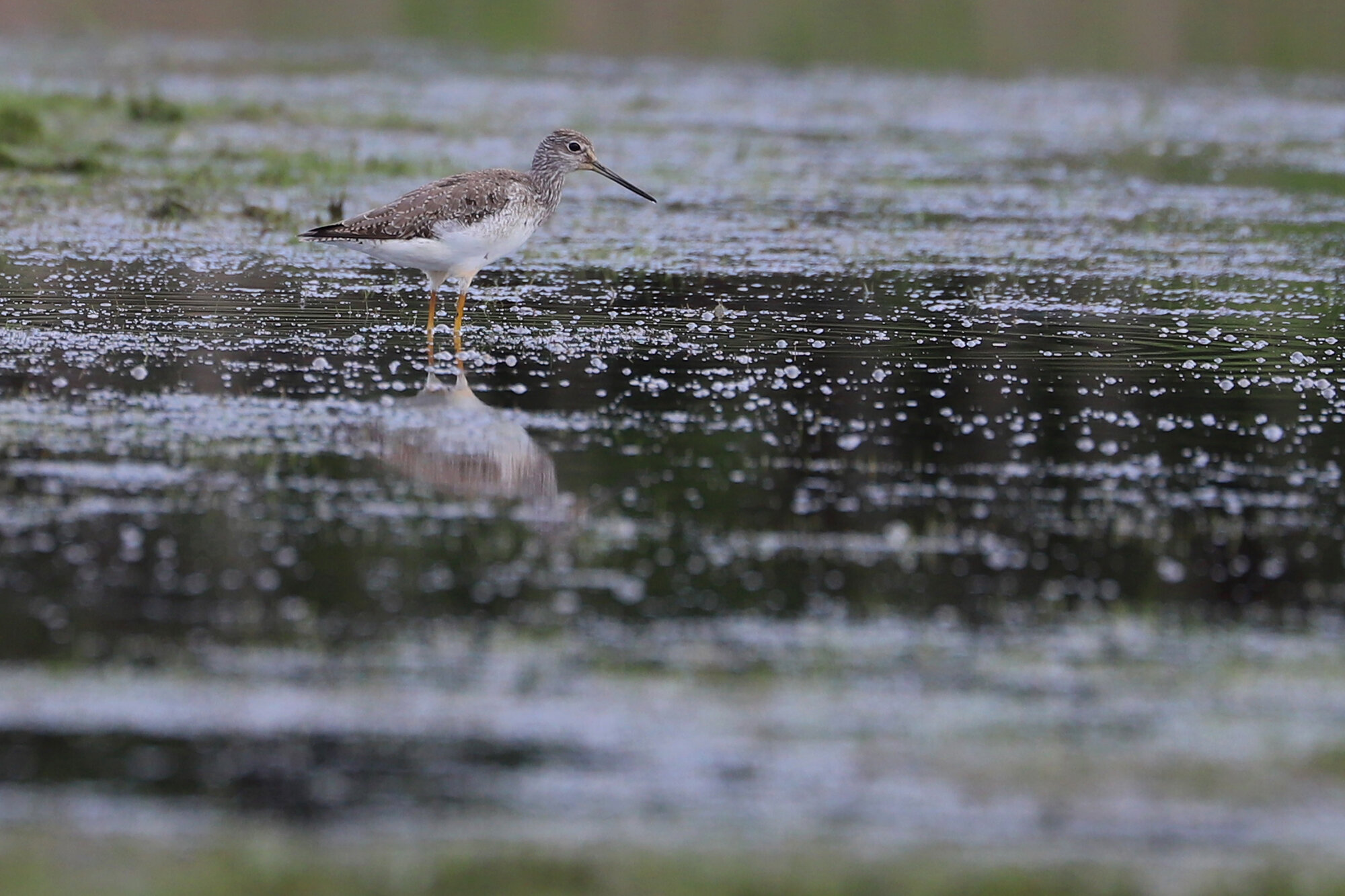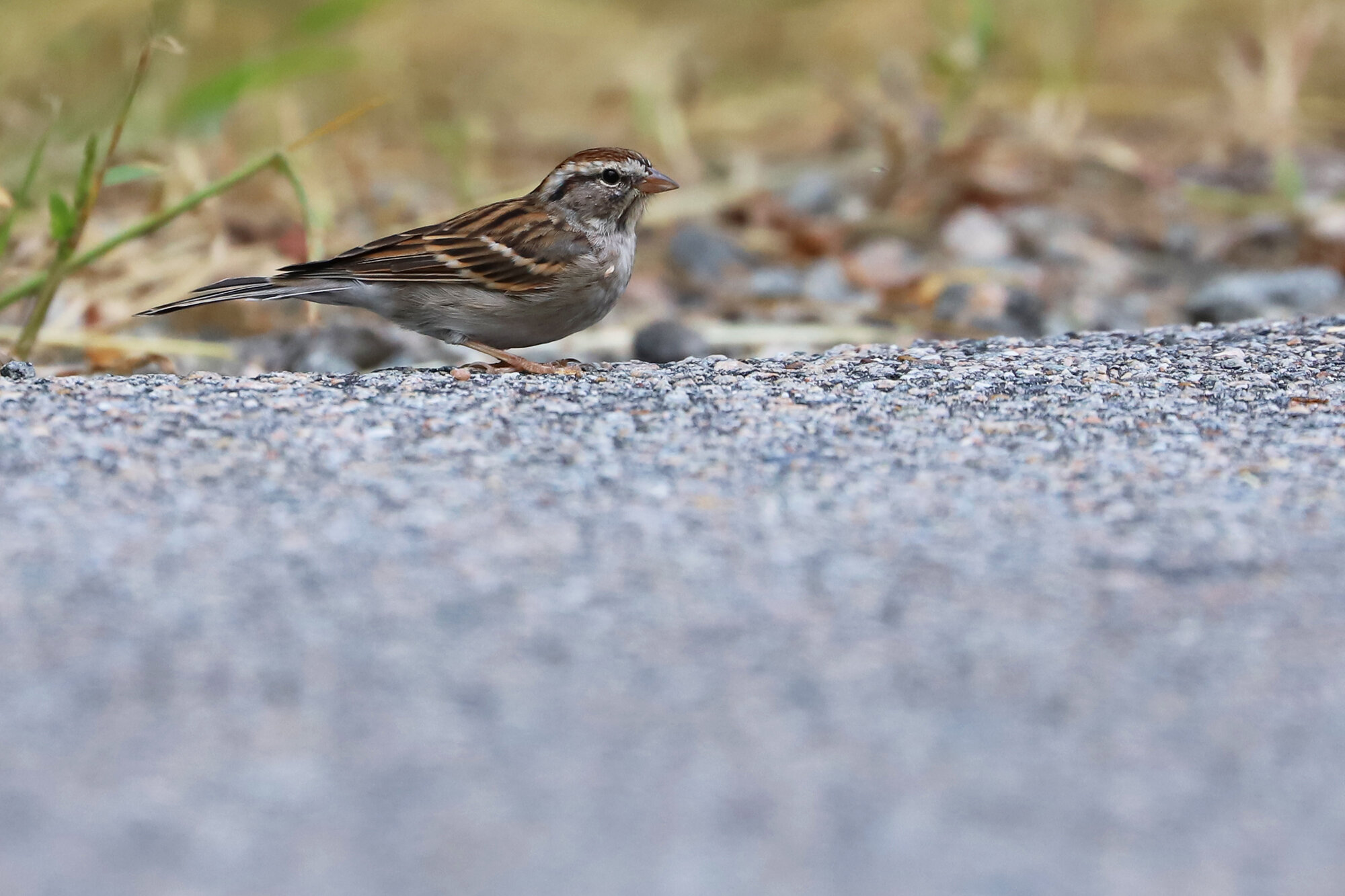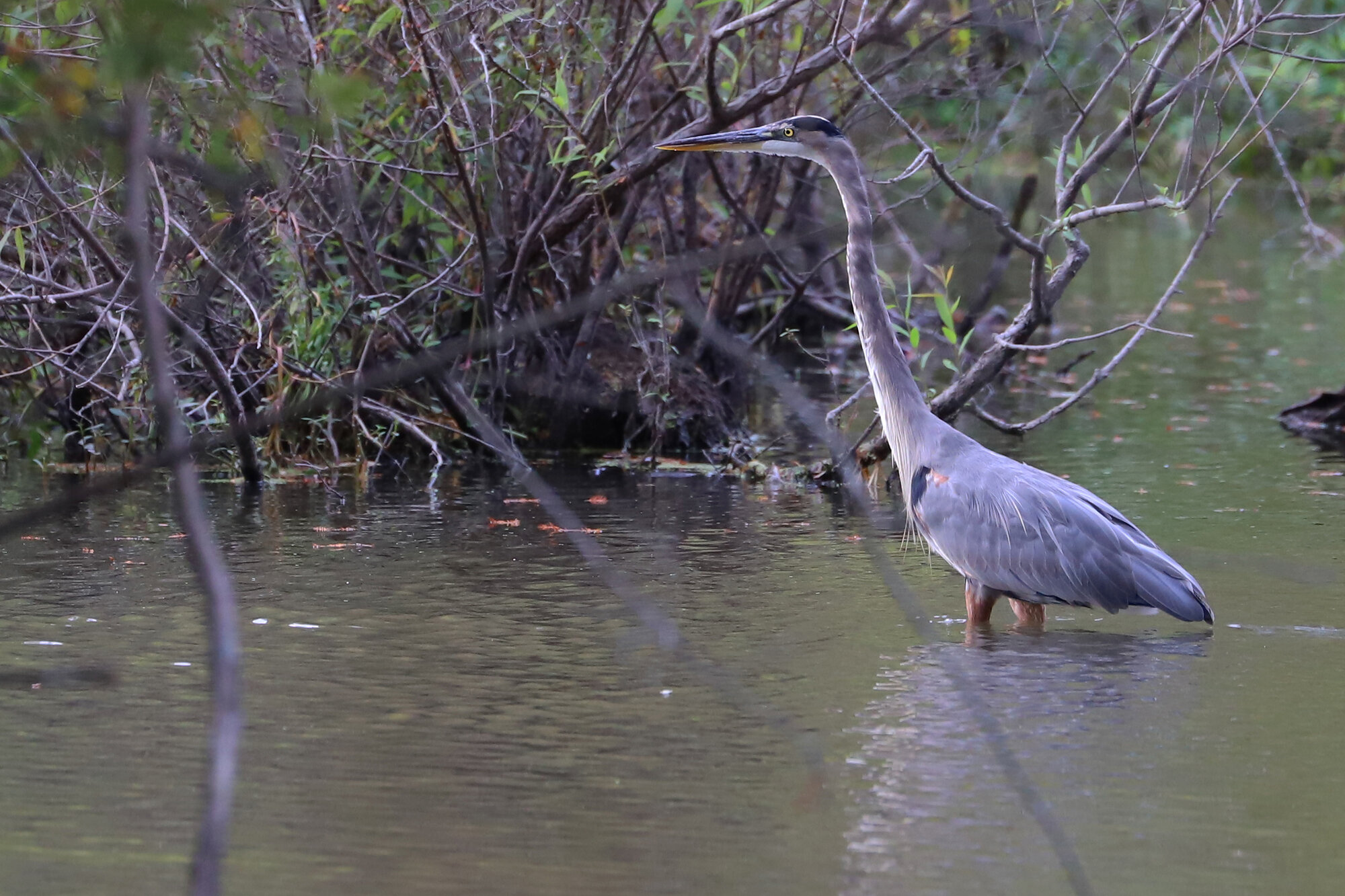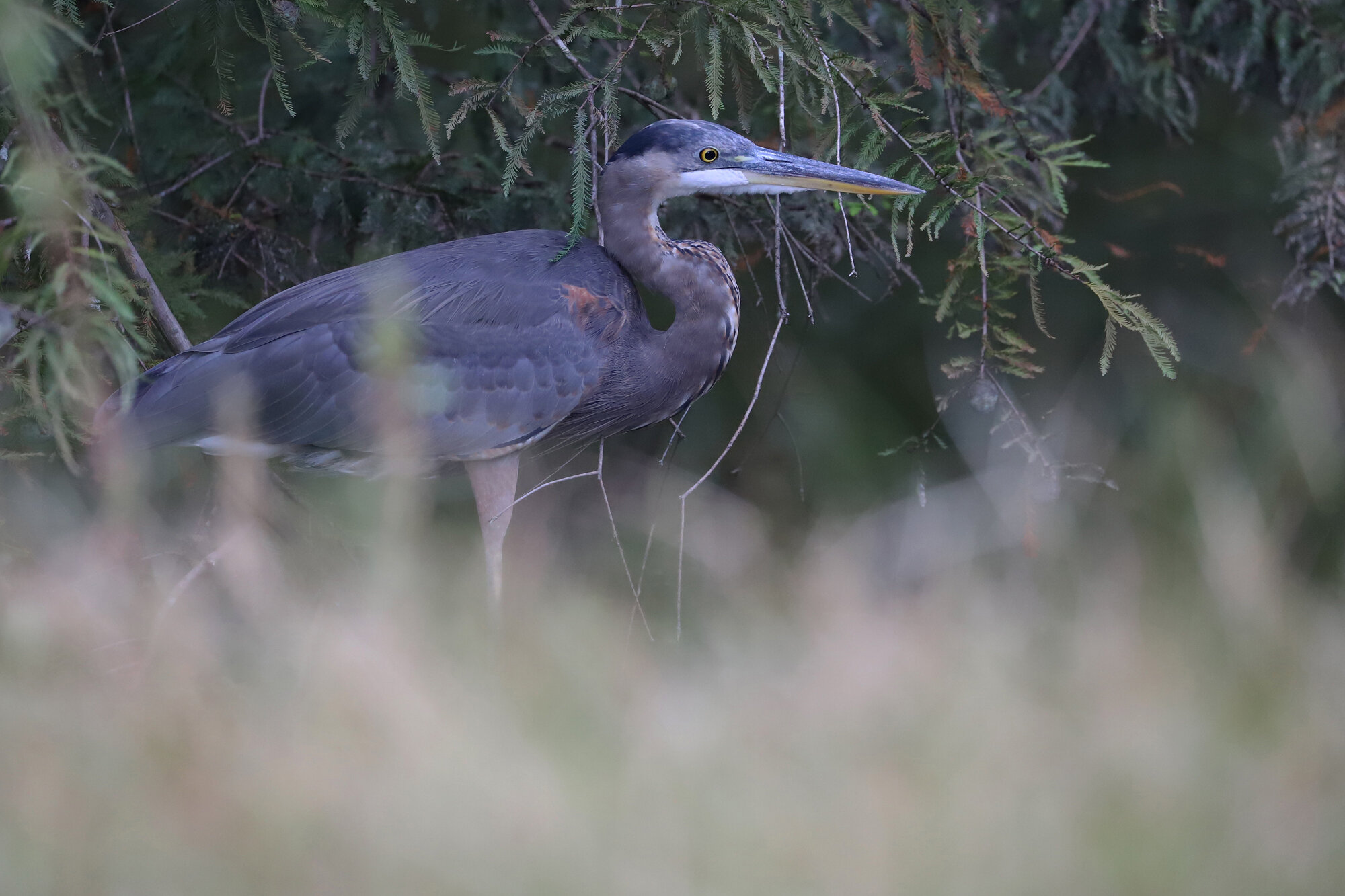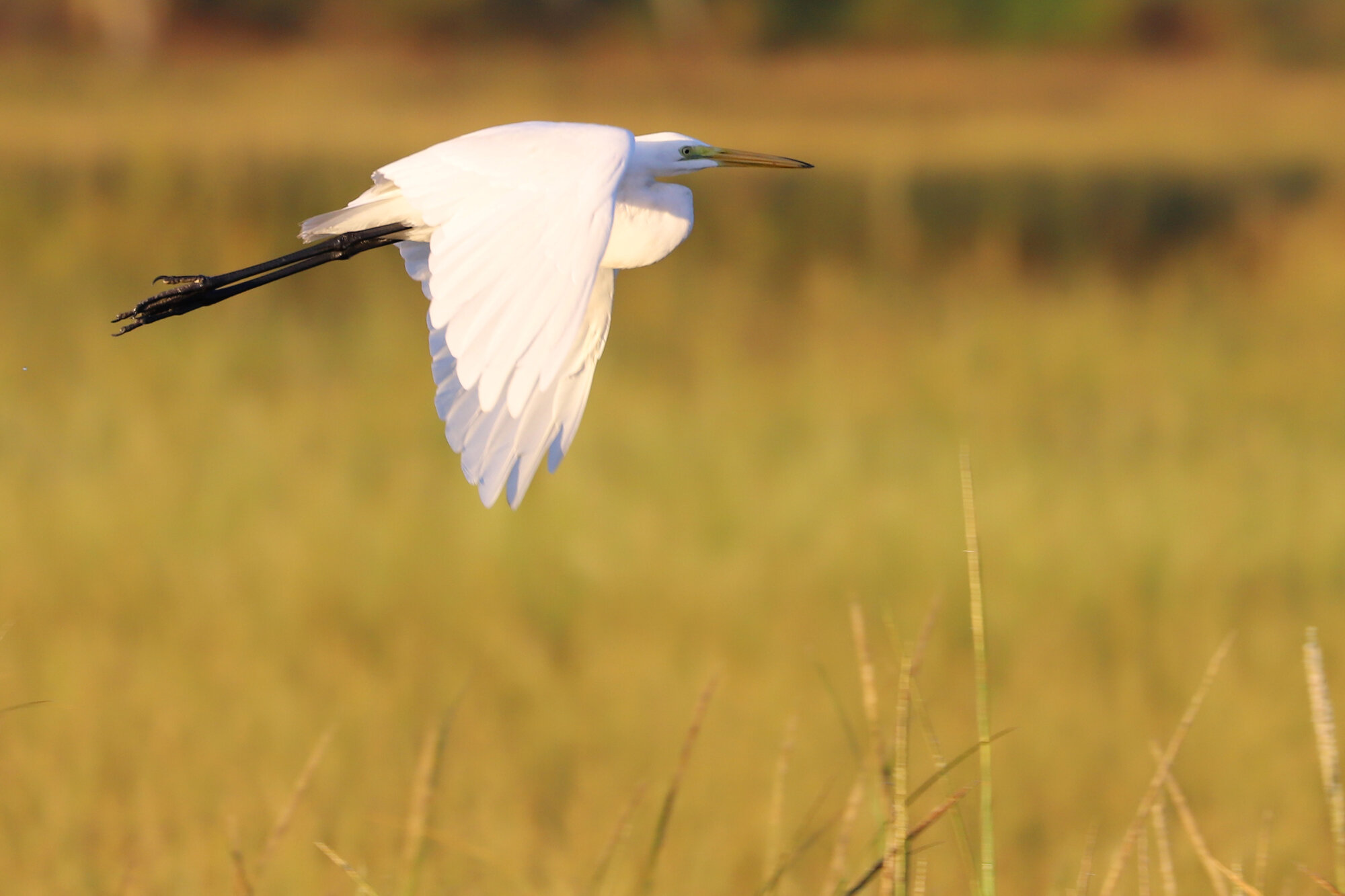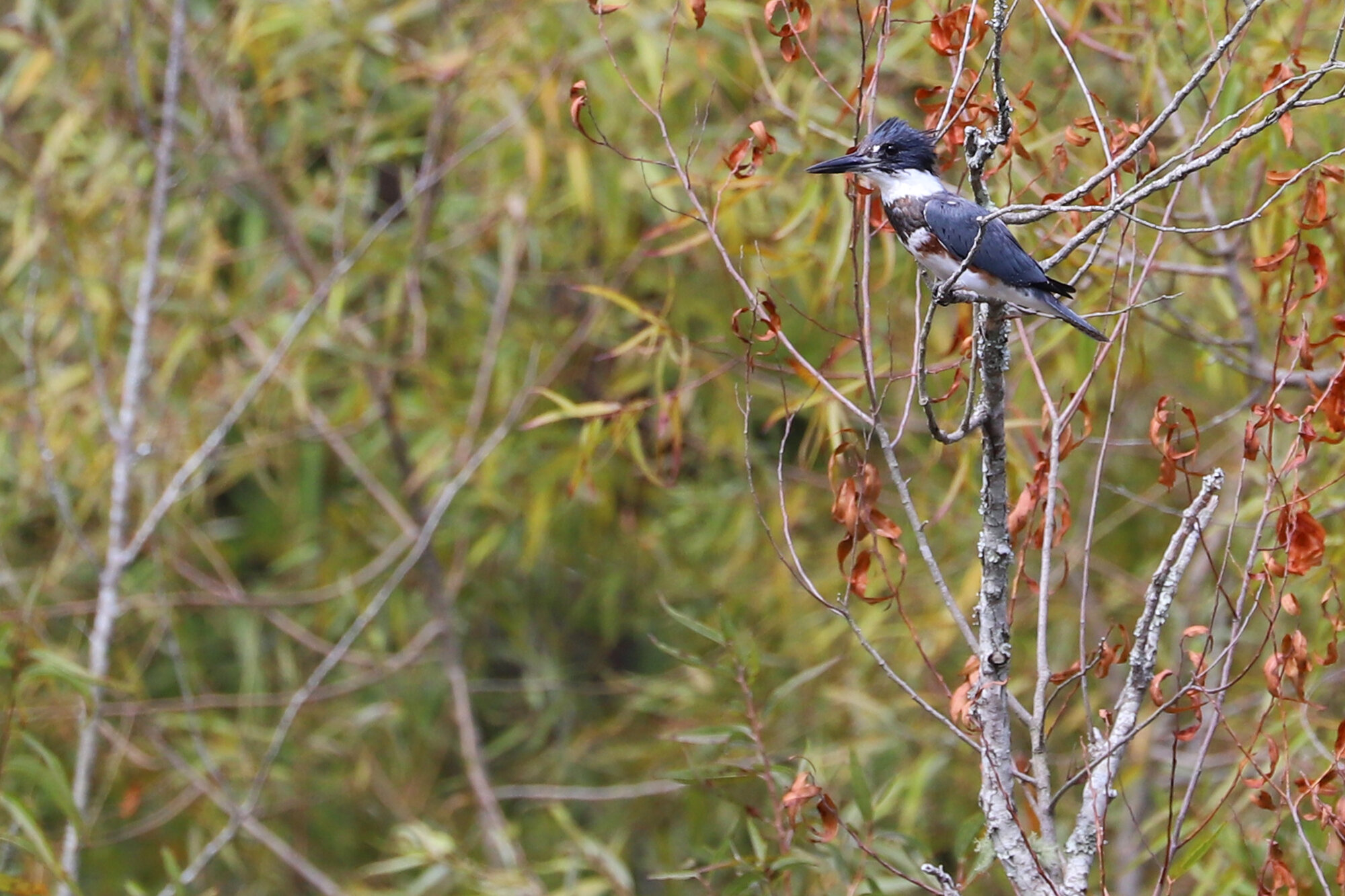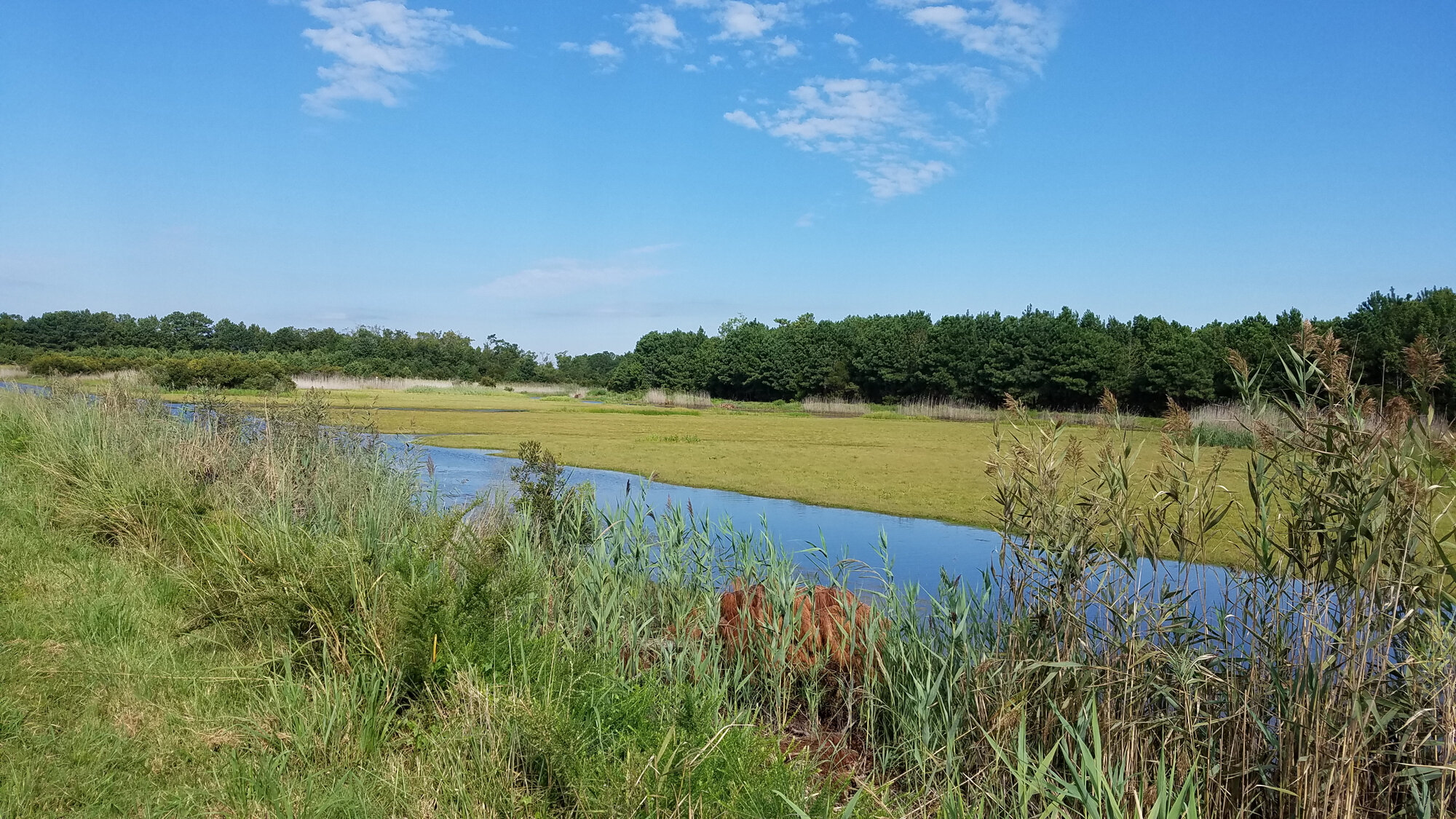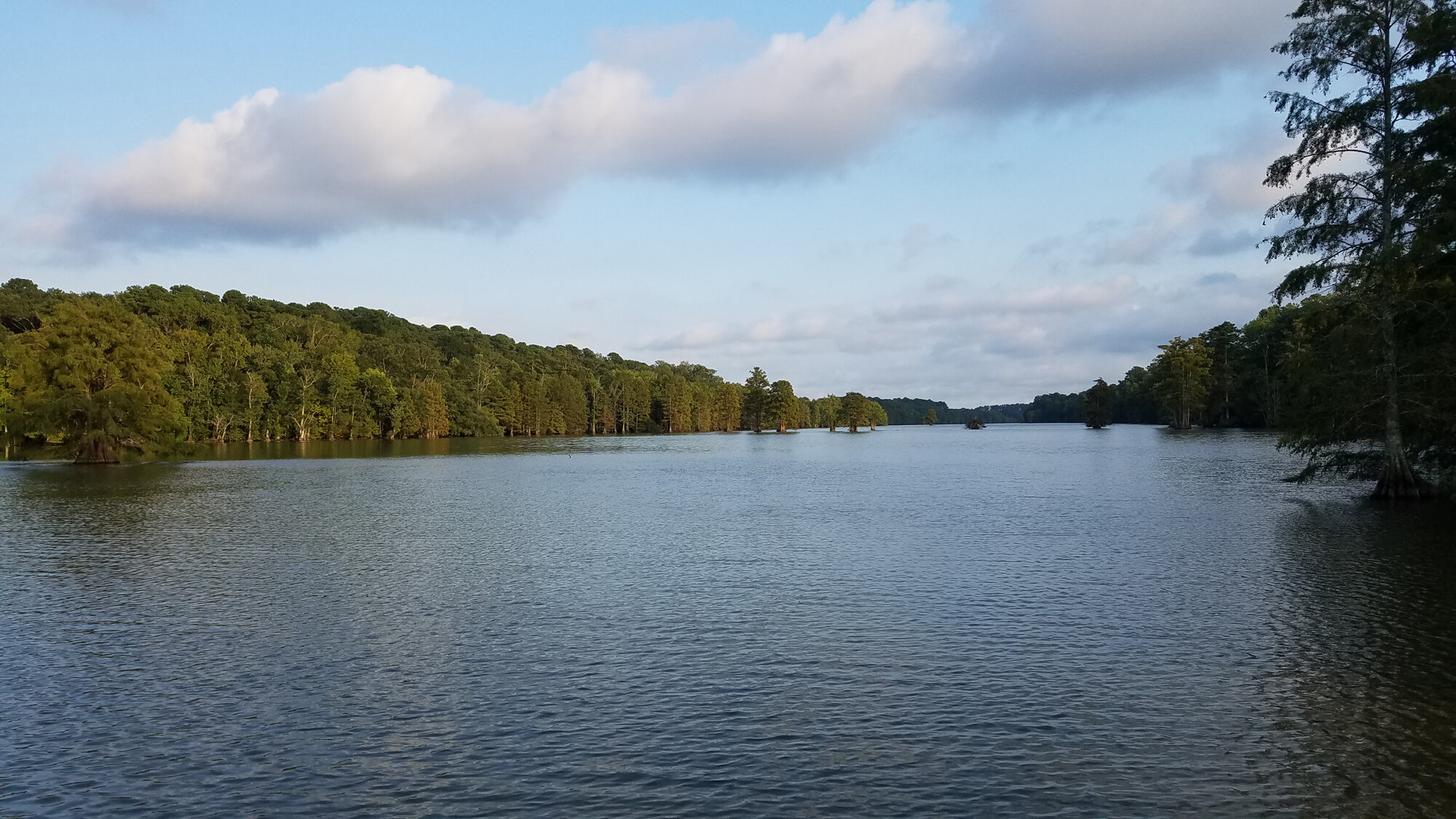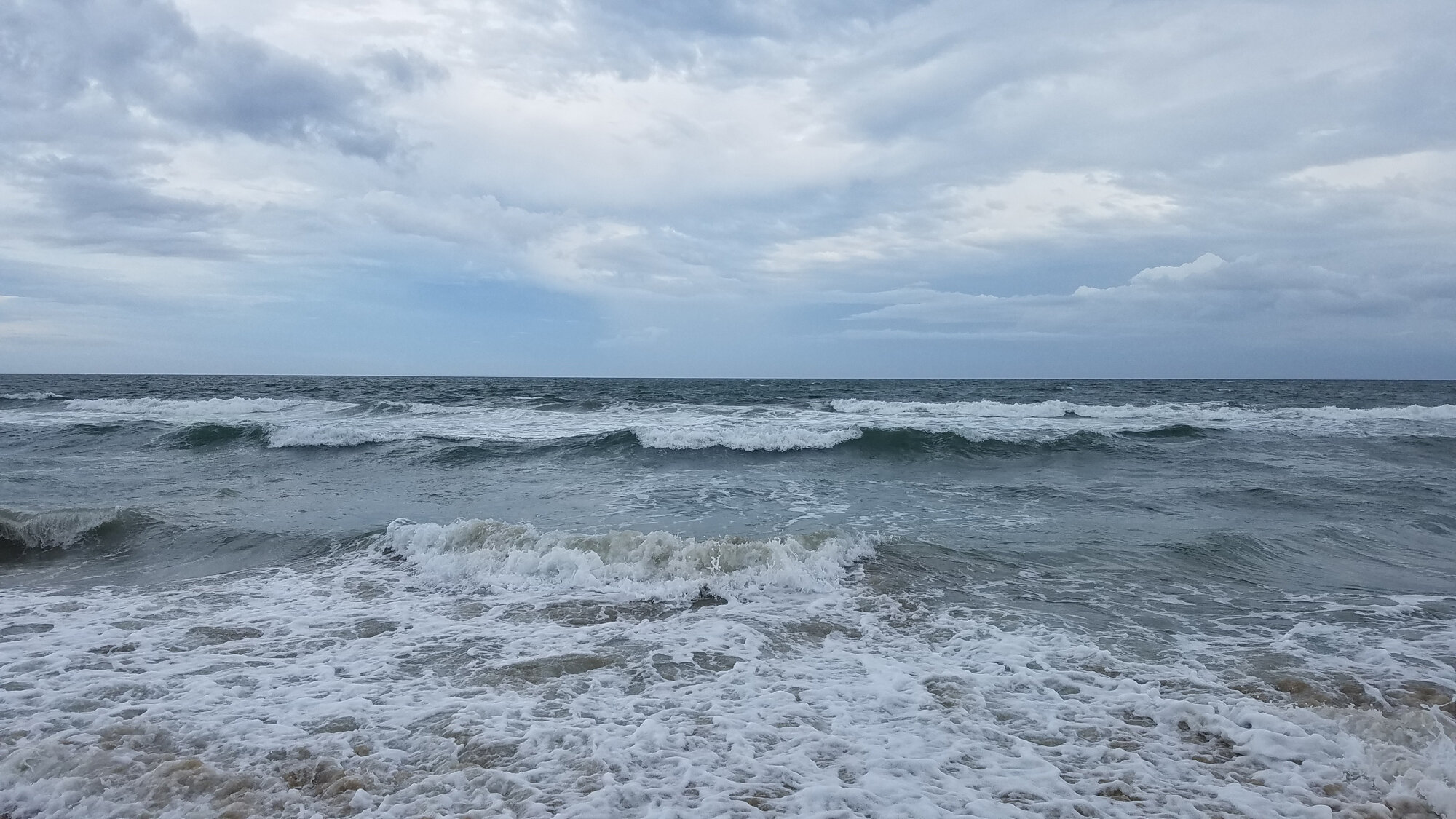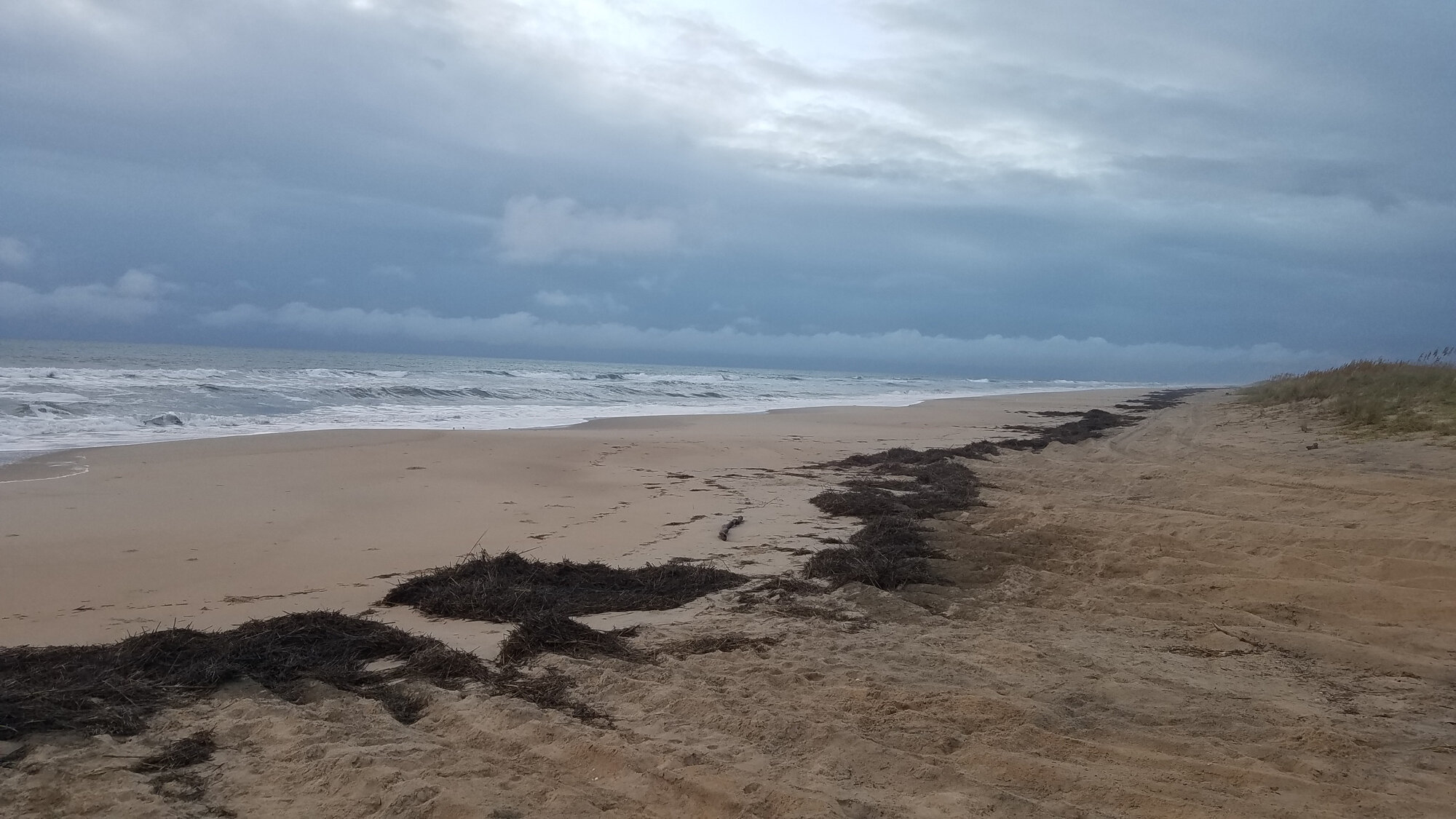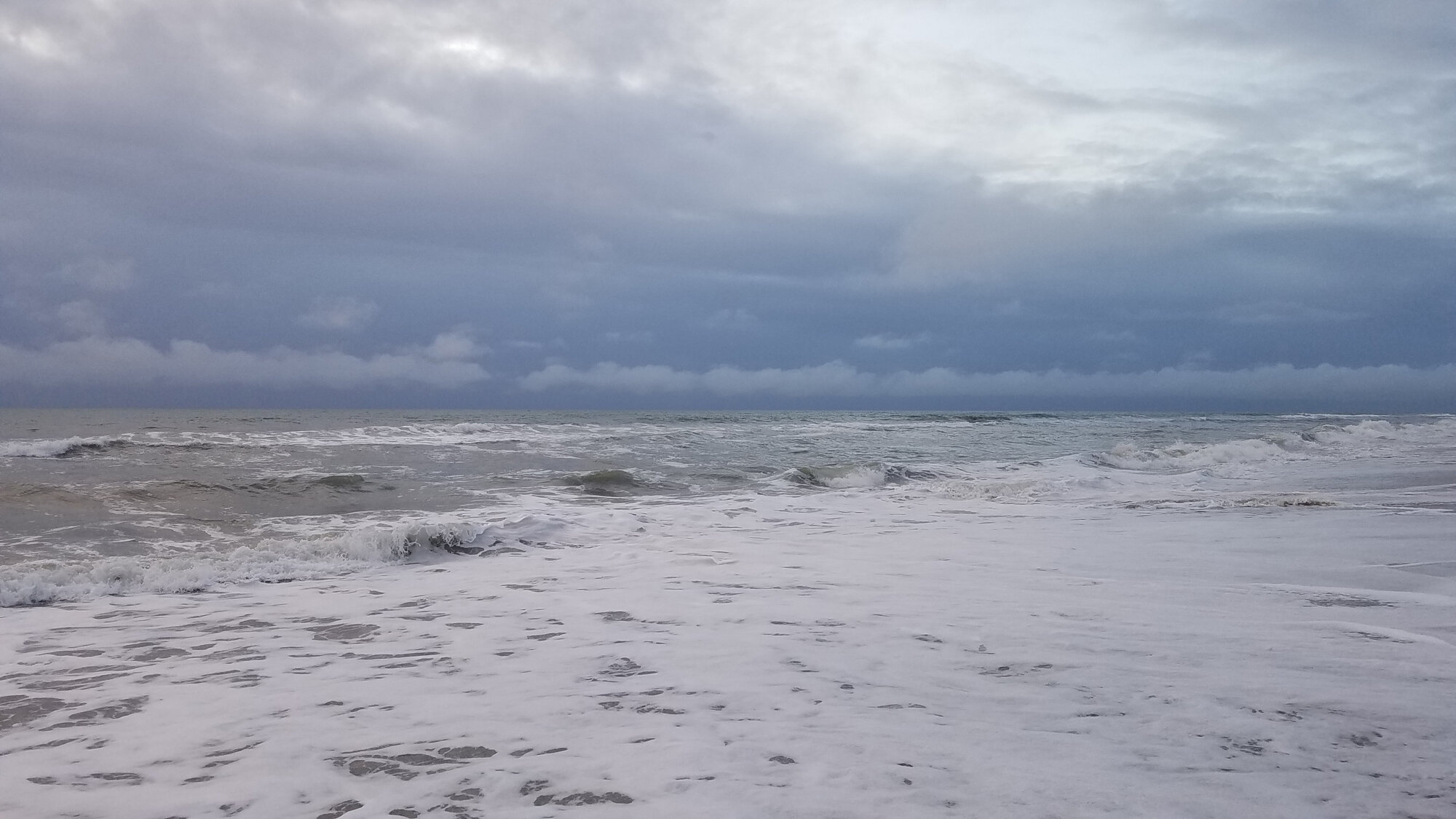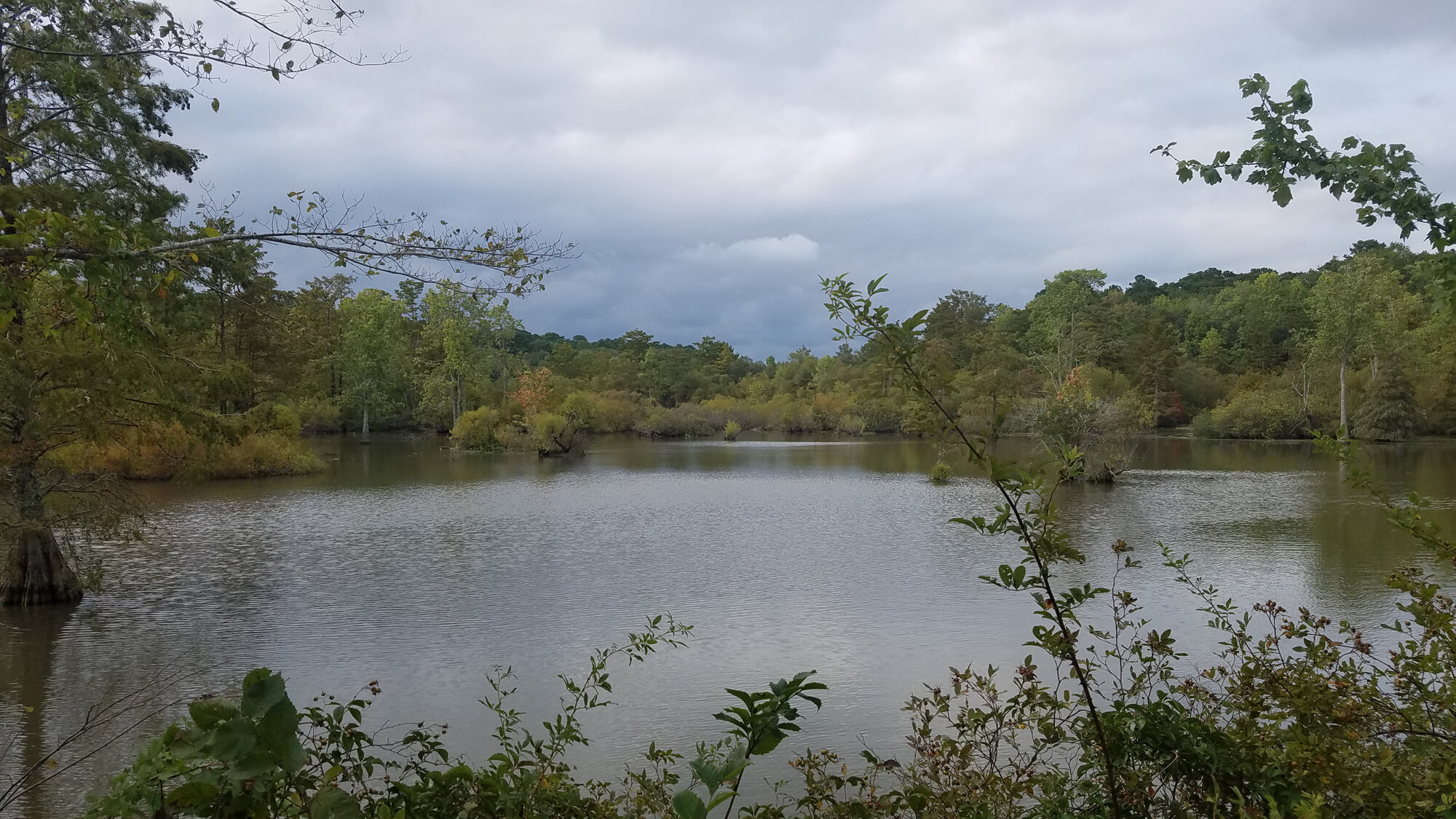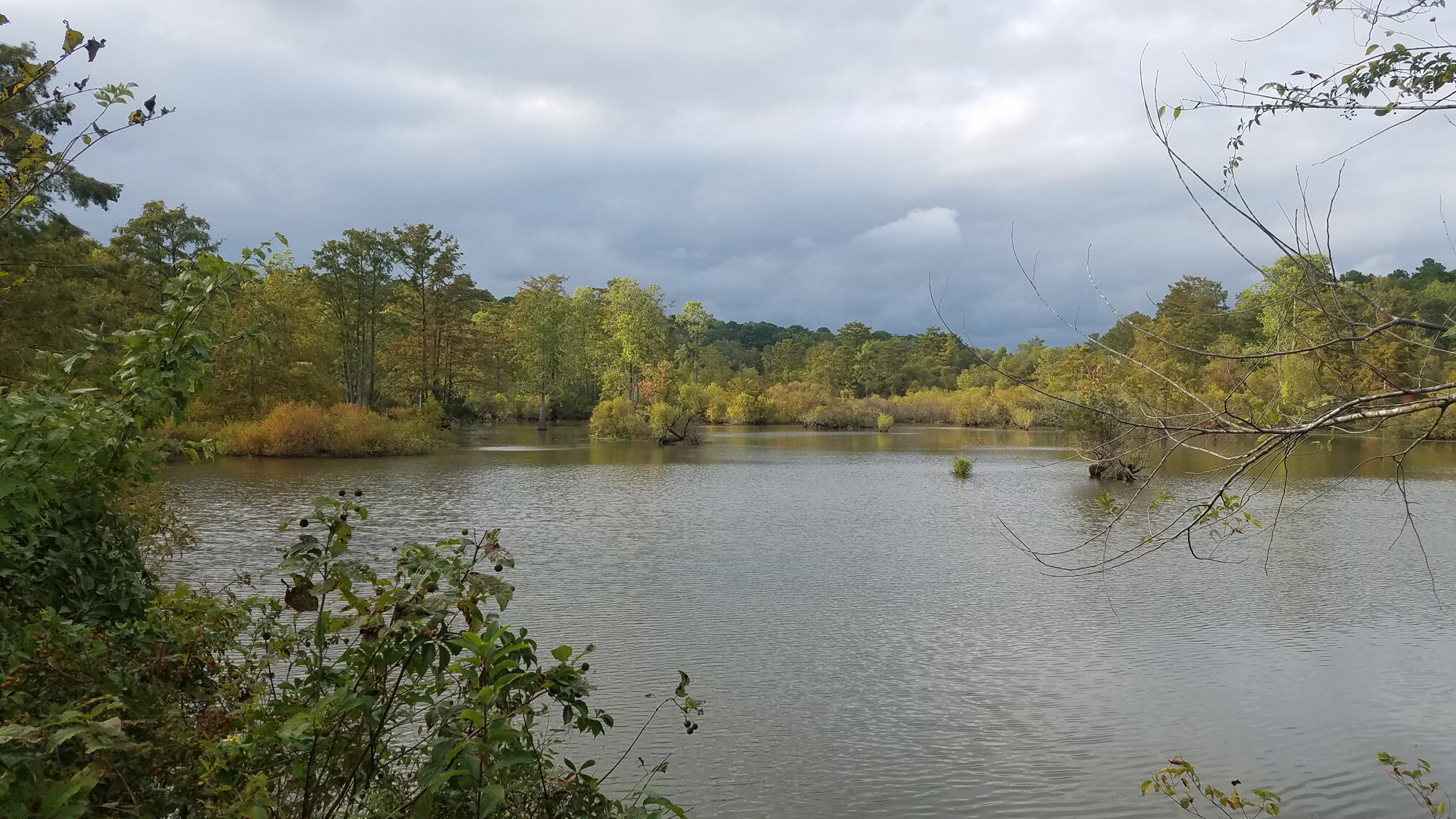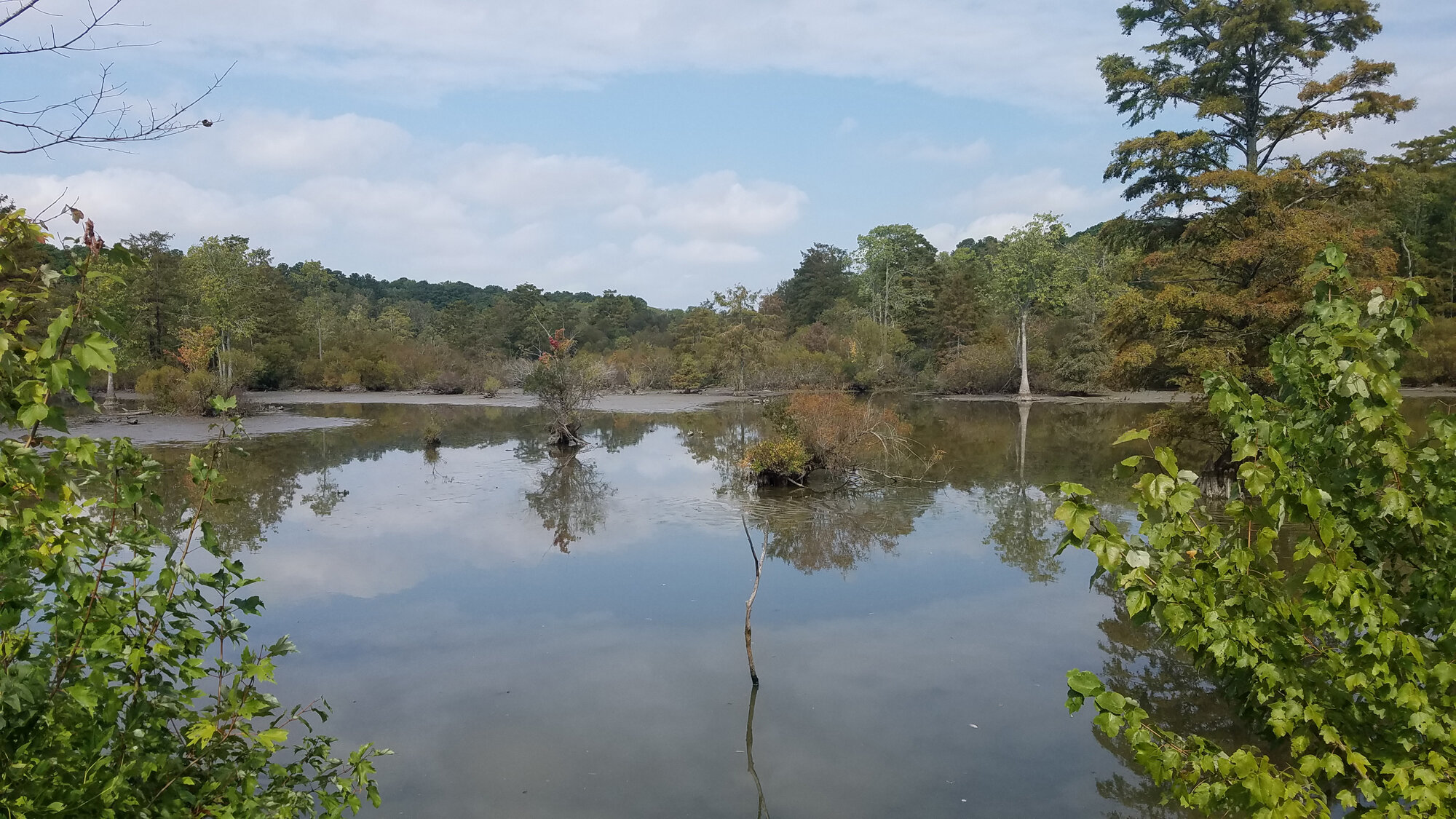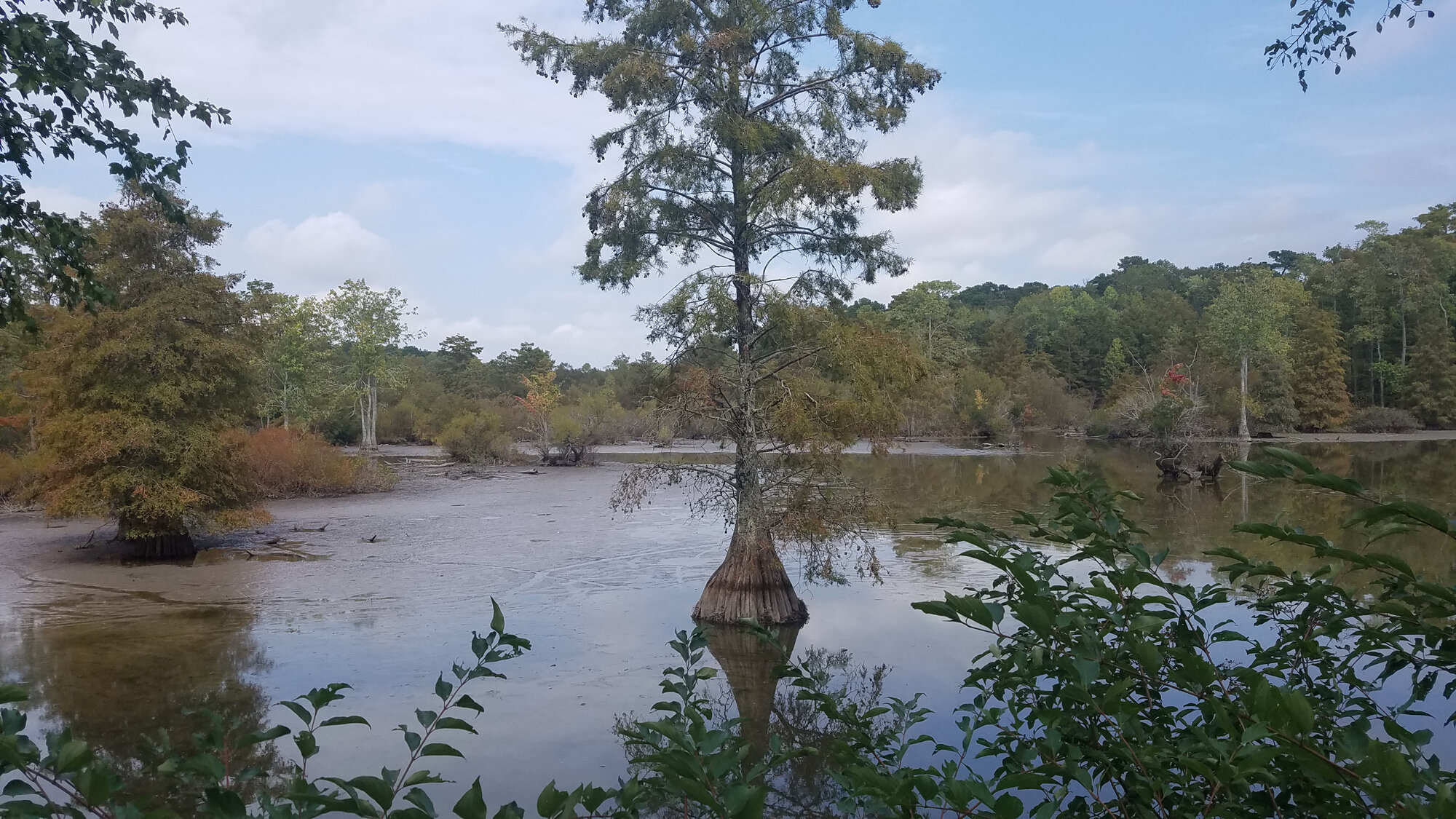September 2019
/The momentum gained at August’s close continued throughout September, providing for one of the most exciting months of birding Virginia Beach in recent memory! The impacts of Hurricane Dorian on 6 Sep, and also of several cold fronts and their corresponding migration movements towards the end of the month bolstered diversity of species across the city. Over the course of its thirty days, a total of 183 species were logged to eBird, which was a significant increase from the 152 species logged during August as well as a hefty boost to the 177 species logged during September last year. With September now completed, Virginia Beach has logged records for 291 species to eBird during 2019 (a massive +12 compared with last year’s 279 species through the same timeframe), and the number of complete checklists submitted now sits at 7,908 (2018 produced 8,489 in total, the most of any year thus far) so we’re still on pace to top the 10,000 mark for the first time!
With the increase in species diversity came a corresponding rise in species highlights this month! Topping the list this month, rarity records occurred for hurricane-displaced species including Sabine’s Gull, Sooty Tern, Red-necked Phalarope, Roseate Tern as well as a pair of unexpected vagrants, namely Gray Kingbird & Western Kingbird. Additionally, we saw records for rare migrant passerines including Mourning Warbler, Least Flycatcher, Canada Warbler, Tennessee Warbler, Philadelphia Vireo, Blackburnian Warbler, Chestnut-sided Warbler, Worm-eating Warbler, Hooded Warbler & Yellow-throated Warbler as well as rare shorebirds like American Golden-Plover, Long-billed Dowitcher, Marbled Godwit and even exciting ‘from-shore’ records for both Pomarine & Parasitic Jaeger! Continuing since the springtime, Anhinga were also viewed through a good chunk of the month. Lastly, September provided the city with first-of-season records for expected fall arrivals which, in order of arrival date, included: Cape May Warbler, Black-throated Green Warbler, Common Nighthawk, American Bittern, Northern Harrier, Magnolia Warbler, Wilson’s Warbler, Merlin, Northern Pintail, Sharp-shinned Hawk, Swainson’s Thrush, Palm Warbler, Blackpoll Warbler, Northern Shoveler, Sora, Nashville Warbler, Veery, Savannah Sparrow, Scarlet Tanager, Rose-breasted Grosbeak, Yellow-rumped Warbler & Black-throated Blue Warbler!
With so many excellent observations this month, the rarities that occurred with Hurricane Dorian are going to be discussed here first just to provide some form of cohesion to this report. A more extensive article about the weather impacts from the storm, and a more in-depth look at the species displacements caused will be published under the Weather section of this website in the near future, but for the purposes of this monthly article, the focus will just be put on the rarest of the sightings. So, starting out, Hurricane Dorian made its passage over Hatteras Island, NC on the morning of 6 Sep, which provided strong onshore, northeasterly, winds across Virginia Beach. In anticipation of the potential for seabirds being blown inland, many birders were out throughout the day searching. Wind conditions were in the 40-50mph range most of the day, but rainfall was only heavy for a couple of hours, making conditions reasonably safe to be outdoors (fortunate for us).
Early on in the day, a single SABINE’S GULL was observed in flight outside of Lynnhaven Inlet (vis. Andrew Baldelli & Rob Bielawski), making for the very first eBird record for this species in Virginia Beach and bringing our city all-time tally up to 378 species! Worth noting, however, one was reported off Little Island Park a few years ago, but the record was not accepted by eBird or by the Virginia Avian Records Committee (VARCOM), though it was likely to have been a correct identification. This species is a rare offshore migrant during fall, with most records in Virginia being associated with tropical cyclones or strong onshore gales. Last year, a single individual was observed in the wake of Hurricane Florence out at Kerr Reservoir in Mecklenburg County from 15-17 Sep 2018 (ph. Jeffrey Blalock). However, the closest previous sighting to us here in Virginia Beach was an immature seen from the Chesapeake Bay Bridge-Tunnel’s fourth Island, North Thimble Island on 2 Sep 2006 (ph. Edward Brinkley) during the passage Tropical Depression Ernesto (previously was Hurricane Ernesto). With records submitted far less than annually in Virginia for this species, it is one of VARCOM’s statewide reviewable species, and a full report of the 2019 observation was submitted accordingly.
In addition to the Sabine’s Gull, it wasn’t long before other displaced rarities started popping up across the northern portion of the city. A juvenile SOOTY TERN was observed cruising around over the Lynnhaven estuary south of the Lesner Bridge in the afternoon (ph. Todd Day & Ian Topolsky). Interestingly, it wasn’t too long afterward that a second Sooty Tern, this one an adult, also joined in and immediately began associating with the juvenile in flight over the “shelted” waterway. Sooty Terns were also logged during the storm at Fort Monroe in Hampton, at King-Lincoln Park in Newport News, near the Granby Street Bridge in Norfolk, and also at Bill Jessee Park in Suffolk. Always one to look for during the fall season when tropical cyclones are in play, this species certainly did not let anyone down. The last records for Sooty Tern prior to Hurricane Dorian were of a single individual at Little Island Park, 14 Sep 2018 (vis. Andrew Baldelli & Tracy Tate) during Hurricane Florence’s landfall over North Carolina and perhaps as many as twenty observed from South Thimble Island (CBBT) during Tropical Storm Hermine on 3 Sep 2016 (first noted & ph. Arun Bose with many additional observers throughout the day).
In the same vein of rareness as the Sooty Terns, a group of 23 RED-NECKED PHALAROPES was observed swirling around over Little Creek Reservoir from Shore Drive (ph. Andrew Baldelli / Rob Bielawski / Karl Suttmann). These birds had clearly been pushed inshore through Little Creek Inlet and found themselves over freshwater, or perhaps even had been pushed straight over land on the 40-50mph sustained winds that persisted most of the morning. In the early afternoon, several flocks at Fort Story JEB accounted for a total of 109 more Red-necked Phalaropes (ph. Andrew Baldelli / Rob Bielawski / Karl Suttmann) with the majority flying wildly out over the massive waves, but with a single group actually observed over the treetops trying desperately to get back out over water. Smaller numbers were also observed later in the afternoon from Lynnhaven Inlet, with counts of 2 (vis. Todd Day & Ian Topolsky) and 6 (vis. Ellison Orcutt) occurring. Prior to Hurricane Dorian, the last Red-necked Phalaropes observed in Virginia Beach were a pair associated with a strong nor’easter at Little Island Park on 9 Nov 2018 (vis. Andrew Baldelli & Tracy Tate) and a group of 5 viewed from South Thimble Island (CBBT) during Tropical Storm Hermine’s passage on 3 Sep 2016 (vis. Edward Brinkley). Surely a species that should be looked for during any extended periods of strong onshore winds, but typically one that truly requires tropical cyclone impacts to really provide the opportunity to view.
A second for Virginia Beach on the year, and a third for the state, a single ROSEATE TERN was observed mixed in with a large storm roost of terns/gulls/shorebirds at the Lynnhaven Boat Ramp during the later afternoon hours (ph. Andrew Rapp). With city facilities all closed for the day, the gravel area and sandy plateau south of the boat ramp provided a perfect spot for these birds to rest their wings a bit and hide from the strong winds (which had swung a bit north/northwesterly by this point). Here the birds were protected from the worst of the storm, as the rain had basically subsided. A number of birders were able to arrive and view the Roseate and all the other terns associating in the same area. In fact, the Lynnhaven Boat Ramp actually produced recorded for 10 species of terns, something that appears to have only occurred once before in Virginia (Kerr Reservoir during Hurricane Fran on 6 Sep 1996, obs. Brian Sullivan). With the last record for Roseate Tern occurring 1 Jun 2019 at Back Bay NWR (ph. Rob Bielawski & Lisa Rose), and with the species being missed altogether in Virginia (not just in Virginia Beach) during 2018, it was exciting to see this one get logged.
Extended southwesterly winds later in the month were likely the cause of another exciting pair of species to arrive in Virginia Beach. Early in the morning hours of 21 Sep, a single GRAY KINGBIRD was observed at Back Bay NWR (ph. Betty Sue Cohen) near the kayak launch just northwest of the visitor contact station. This being only the second eBird record the city, but with a few other records known from The Gold Book, provided quite a bit of excitement across Virginia Beach birders. While searching for the Gray Kingbird the following day, incredibly, an immature WESTERN KINGBIRD ended up being found located in the same area of the park (ph. Andrew Baldelli, ph. Karen & Tom Beatty, vis. Jason Schatti)! Like the Gray Kingbird, the Western ended up only being observed throughout that same day but couldn’t be relocated the following day. To make matters even stranger, on 25 Sep, perhaps a different GRAY KINGBIRD was found at the park (vis. Andrew Baldelli, vis. Karen & Tom Beatty, ph. Reuben Rohn). Now, there’s no way to say for sure whether it was, or wasn’t the same individual observed on 21 Sep that started off this sort of “kingbird madness”, but given the several day lack of records despite exhaustive searches by many birders, it seems plausible at least that this was a separate individual. Either way, this was an incredible set of circumstances, and it’s astonishing to think that over the last couple of years the park has now hosted both of these vagrant species of kingbirds, as well as Ash-throated, Fork-tailed & Scissor-tailed Flycatchers. Back Bay NWR truly is one of a kind.
An extremely rare spring & fall transient along the coast, MOURNING WARBLER was a remarkable surprise during September. A single individual was observed in a dense thicket near the parking area of Beach Garden Park on 24 Sep (vis. David Clark), marking the first time this species has been logged to eBird in the city since 13 Sep 1980 when one was at Back Bay NWR (vis. Edward Brinkley). Thus far, these are the only two accepted records for Virginia Beach in eBird. Breeding at the highest elevations in the state, with most recent records along the West Virginia border in the vicinity of Paddy Knob, all we can hope for here is strong southwest winds in the late spring and strong northwest winds in mid-fall to push a migrant Mourning Warbler towards the coastline. A singing male in Northampton County this spring gives us some hope that it could happen here, we just need a lot of eyes in the field at the right times, and some considerable luck. Several observers did make attempts to re-find this warbler at Beach Garden Park, but unfortunately all were unsuccessful and this one managed to get away from the birding community.
Another second record for the city, a single LEAST FLYCATCHER was observed in a Kings Grant private backyard on 25 Sep (vis. Ron Furnish). With our only other record in Virginia Beach having occurred at Back Bay NWR from 2-16 Sep 2017 (vis. Tommy Maloney, later ph. Rob Bielawski), any record for this rare transient is certainly noteworthy. Like the Mourning Warbler above, this species does breed in the state, but only at high elevation along the Blue Ridge and in the mountains west of the Shenandoah Valley. We’re therefore a bit outside it’s normal range for migrants, especially in the springtime, and really depend on that northwesterly wind in fall to bring them to the coast. It’s no coincidence that this one was seen just one day after the Mourning Warbler.
Not quite as rare as the Mourning Warbler, but in the same vein of transient passerines that haven’t been reported in Virginia Beach annually, a CANADA WARBLER viewed at a Cypress Point private residence also on 24 Sep (vis. Debbie Schroeder) proved to be an exceptional record. With the last accepted eBird record for this species occurring at Back Bay NWR on 21 Sep 2017 (vis. Karen & Tom Beatty), and only single fall and spring records in 2016 & 2015, respectively, Canada Warbler is such a low density migrant along the coast that any record is cause for celebration. A bit more expected at the southern tip of Northampton County in fall, the few seen there don’t seem to make the crossing of the Chesapeake Bay mouth and instead we likely see birds here following very strong northwest winds the move birds from inland Virginia towards the coast while migrating southward overnight. It’s surely no coincidence that this typically high elevation breeder showed up in Virginia Beach on the same day the Mourning Warbler did, as we had the proper wind setup the night before.
With just a few more records than the Canada Warbler above, a TENNESSEE WARBLER this month observed behind the visitor contact station at Back Bay NWR on 22 Sep (vis. Andrew Baldelli, ph. Rob Bielawski, vis. Mike Collins, vis. Lisa Rose) was also exceptional. Over the last five years, we’ve had at least one record in all but one, 2014, for this species, however they seem to alternate between spring and fall with neither season yielding records on an annual basis. Prior to this individual, the last accepted record for Virginia Beach was also at Back Bay NWR, where one was observed from 5-11 May 2018 (ph. June McDaniels). Now, it’s possible that more than one was present during that period, but there’s no way to tell for sure so all that can be said is that the species was logged at this location in that particular date range. The 2018 record was our first photographically documented eBird record for the species, and this 2019 record makes for a welcome second!
Up until 2016, there wasn’t a single record for PHILADELPHIA VIREO in eBird for the city, but, since that time we’ve managed to get a few good records in. All of these but one have fit into the Sep/Oct timeframe, so while one recorded at First Landing SP on 25 Sep (ph. June McDaniels) makes sense, it’s still an extremely rare find. Like the Mourning & Canada Warblers mentioned above, this individual was likely the result of a large-scale movement of passerines overnight on northwest winds that were driven towards the coastline. Amusingly, the only other records for 2019, was also photographed by this observer at the same park, but back in early June. That particular record was almost unheard of for this latitude, but it was very well documented (ph. June McDaniels), which is good because it would have been quite a bold claim otherwise! In fact, this was the first June or July record for Philadelphia Vireo in the state in eBird, and to make matters even wilder, not a single state that borders Virginia has any records during that timeframe either! Since 2016, we’ve been averaging between 1-2 reports for this species each year in the city, so hopefully this trend continues into the future as they’re a gorgeous species to view.
Another low density transient, BLACKBURNIAN WARBLER allowed for a first fall record when an immature individual was observed along the vegetated southern edge of Mt. Trashmore Park on 26 Sep (ph. Lisa Rose). This location proved to be excellent for transient warblers at the tail end of September, with a dozen-plus species being logged here, including a fairly rare Wilson’s Warbler on this same checklist. Blackburnians have been similar in reporting history to Tennessee Warblers, perhaps being reported annually, but not in either spring or fall in a predictable fashion. For example, there wasn’t a single record in the fall of 2018, but there was three records in the fall of 2017. We did have one record this past spring, with a singing male encountered at Pleasure House Point NA from 11-13 May (ph. Rob Bielawski, later much more clearly ph. Steve Myers). Looking at the past five years, the only year without a single record was 2015. At this point, this is yet another species we’re averaging somewhere around 1-2 reports per season, which keeps it as a candidate for “rare” status in eBird, but also means it’s a species that likely is passing by undetected in both spring and fall. Of course, in springtime, they can be singing along their migration, and their vibrant orange, black and white plumage can help make them a bit more easily observed. Fall seems to be the tougher season here, but it’s great to see us get one on the board this time around.
Yet another high elevation breeder in Virginia that tends be quite scarce here during migration, we managed to get our first record for the fall of CHESTNUT-SIDED WARBLER with an immature observed at Back Bay NWR on 23 Sep (vis. Dianne Hinch, ph. Cindy Hamilton). Missed completely in the fall season of 2018, and with only one record in the spring of 2019 (vis. Kathy Spencer), this was a great bird to get back onto our month list. The last fall record we’ve had in the city was back in 2017 when the species was observed at three different locations (Back Bay NWR, West Neck Creek NA, and Lago Mar). Slightly more reliable in spring than fall, records in either season are obviously noteworthy but early May and September have been the best timeframes for finding them.
Seasonally rare in fall in Virginia Beach, we had a miraculous three records for WORM-EATING WARBLER during September, all at different locations including one at a private residence in Bellamy Manor on 7 Sep (ph. Una Davenhill), one at Camp Pendleton SMR (Restricted Access) on 14 Sep (vis. Karen & Tom Beatty) and another at First Landing SP on 25 Sep (ph. June McDaniels). Coming off last fall, where only one was observed, at West Neck Creek NA on 22 Sep (ph. Rob Bielawski), having three records this fall just seems quite wild, but it still fits the mold of averaging about 2 records per season here in Virginia Beach, right along the same lines as Chestnut-sided Warbler above.
Lastly for the warblers, both YELLOW-THROATED WARBLER and HOODED WARBLER have been tough birds to come by in fall, but have produced quite a number of records during the spring season. As a result, they’ve been set to flag as ‘rare’ in eBird during the fall season to ensure their records get proper attention from both observers and reviewers alike. A single Hooded Warbler record, one of a continuing singing male at First Landing SP came in on 14 Sep (aud. June McDaniels). Assuming this is the same individual, it has been present at the western fringe of the Long Creek Trail since late April (ph. June McDaniels), and was heard during both June and July in the same location. Now strangely, in fall 2018 there wasn’t a single migrant record for Yellow-throated Warbler, yet we had potentially two different individuals attempt wintering in the city, one of which likely made it all the way through after being logged from late November through March. This fall, records for this species occurred with one at a private residence in Bellamy Manor on 24 Aug (ph. Una Davenhill), one at Back Bay NWR (the first ever photographed in eBird at the refuge!) from 21-23 Sep (ph. Rob Bielawski & Lisa Rose), one at Lake Lawson & Lake Smith NA on 24 Sep (vis. Gigi DelPizzo), one at a private residence in Lake Smith Terrace on 25 Sep (vis. Tracy Tate), and finally one at a private residence in Oak Springs on 26 Sep (vis. Carolyn Page). If these trends continue, this species is a good candidate to be set as a spring & fall transient in eBird, and will no longer flag in fall.
September tends to be our first month of the fall season that truly features a mix of different groups of birds. While shorebird season began in July and continued through August, it isn’t until September that we start to get the passerine diversity mixed in. Many folks tend to start looking more for warblers during this month, and shorebird observations tend to drop as a result. However, this September proved that shorebirds still need to maintain a good deal of focus from birders in Virginia Beach. Near the end of the month, we had our rarest shorebird find of the season show itself in the form of a single AMERICAN GOLDEN-PLOVER found on the beach at Back Bay NWR on 29 Sep (ph. Jonathan Snyder & Amresh Vaidya). It had been just over a year since the last record for this species in Virginia Beach, when one was observed in the agricultural field at Shipps Cabin Road on 13 Sep 2018 (ph. Rob & Ruth Bielawski) during the passage of Hurricane Florence across North Carolina to our south. Additionally, it had been two years since the last record at Back Bay NWR, the most likely location in the city for this species to show up (with perhaps Princess Anne WMA’s Beasley &/or Whitehurst Tracts a close second).
Another rare shorebird find, we had our first LONG-BILLED DOWITCHER record for the calendar year when a single individual was located during the official impoundment survey at Back Bay NWR on 16 Sep (vis. Andrew Baldelli). Due to difficulty in separating Long & Short-billed Dowitcher in the field without excellent views, this species almost certainly goes unnoticed and is likely to be an annual transient in fall along our patch of coastline. However, records are few and far between in Virginia Beach, with the last record being of a flock of five viewed at Princess Anne WMA’s Whitehurst Tract on 22 Apr 2018 (ph. Rob Bielawski & Lisa Rose). From now through the winter season, this is a species that should be carefully looked for anytime a dowitcher is observed. Typically, the best way to separate the two in the field is by observing the shape of the bird while feeding. Long-billeds tend to be much chunkier, and when feeding will show an arch to the back reaching it’s top most point in the middle. Short-billeds usually show this point over the shoulder, with a slimmer appearance and more linear slope to the back behind the shoulder. Bill length isn’t particularly useful since there is considerable overlap between females & males of the two species; just something to keep in mind!
Last on the list of rare September shorebirds, a MARBLED GODWIT was observed on the beach at Back Bay NWR on 13 Sep (ph. Eric Alton & Tammy Conklin). Depending on how one looks at this, it could possibly be the third record for Virginia Beach this fall, with an individual observed in southbound flight past Rudee Inlet on 24 Aug (vis. Andrew Baldelli) and another logged at Dam Neck NA (Restricted Access) on 30 Aug (ph. Paul Block). Or, this could all be the same individual slowly working its way south along our coastal beaches? Impossible to say for certain, so given that there are records from three locations, it’s safest to assume this is a 3rd individual…but, you never know. Regardless of the count, it’s interesting to note that Aug/Sep have been the most reliable months for Marbled Godwit in Virginia Beach, with the last record outside that window having occurred back in June of 2017. While the species winters prolifically in the Eastern Shore barrier island lagoon system, notably at roosts like Willis Wharf and Oyster, as well as at Pea Island NWR south of us in North Carolina, records after September here are very tough to come by…but should be watched for!
Exciting to see from shore anytime of the year, we had our first POMARINE JAEGER report of the season as well, with an individual flying south along the beach at Sandbridge on 2 Sep (vis. David Clark). Our first such record in Virginia Beach going back to the historic jaeger flight during Nov 2017, this was an exciting addition to our calendar year list and just a great record overall. In addition to the Pomarine, there was also a record for PARASITIC JAEGER during September, with at least two observed from Little Island Park on 8 Sep (vis. Andrew Baldelli, ph. Tommy Maloney). This species had a few records during the height of winter in Jan/Feb, and on 20 Apr, a new state spring high count was achieved when 12 passed by Little Island Park (ph. Andrew Baldelli & Rob Bielawski) on the backside of a strong coastal low pressure system. It’s possible that this is a good sign for the coming Oct/Nov migration season of these species. Both breed in the arctic tundra and make their way to the coast, with many passing overland. Seawatching over the next couple of months could provide some great observations of these birds, especially in November as Laughing Gulls are bailing out southbound for the winter and provide the jaegers with a perfect target to harass.
Just like in August, we had one continuing rarity this month, that being the Anhingas at Stumpy Lake NA! First observed at this location way back on 21 Apr (2, ph. Stephen Keith), their occurrence alone has boosted the number of eBirders visiting Virginia Beach (and Stumpy Lake specifically) throughout the past several months. For the first time during the 2nd Virginia Breeding Bird Atlas (running 2016-2020), this species was confirmed as a breeder at Stumpy Lake! It truly has been an incredible year for the species being observed locally, with a minimum count of 27 individuals having been so far observed across five different locations in the city (though none away from Stumpy Lake during August). With almost 200 eBird reports now submitted for the species this year, the number of photographs that have been provided as documentation is also staggering. For anyone interested in browsing the 200+ photographs so far input, these can all be viewed by clicking Here! With the last sighting of these highly sought-after birds occurring 19 Sep (ph. Jonathan Snyder), it seems that they have finally moved south for the coming winter season. They will certainly be missed, but it will be exciting to see if they grace us with their presence once again next spring!
September typically showcases the arrival of most of our transient passerines, while it’s usually October before most of the wintering species begin to arrive. This month, regarding expected/annually occurring fall migrants, records occurred for the following first-of-season arrivals:
Cape May Warbler – First Observed: 1, Dam Neck NA (Restricted Access), 1 Sep (vis. Karen & Tom Beatty); First Photographed: 1, Back Bay NWR, 22 Sep (ph. Rob Bielawski).
Black-throated Green Warbler – First Observed: 1, First Landing SP, 1 Sep (obs. Chris Monahan); First Photographed: 1, Back Bay NWR, 21 Sep (ph. Betty Sue Cohen).
Common Nighthawk – First Observed: 1, NAS Oceana (Restricted Access), 4 Sep (vis. Karl Suttmann).
American Bittern – First Observed & Photographed: 1, Pleasure House Point NA, 7 Sep (ph. Rob Bielawski).
Northern Harrier – First Observed: 1, Lake Smith Terrace (Private Residence), 11 Sep (vis. Tracy Tate); First Photographed: 1, Back Bay NWR, 22 Sep (ph. Rob Bielawski).
Magnolia Warbler – First Observed: 1, Back Bay NWR, 13 Sep (obs. Richard Chirumbole); First Photographed: 2, Mt. Trashmore Park, 26 Sep (ph. Lisa Rose).
Wilson’s Warbler – First Observed & Photographed: 1, Kings Grant (Private Residence), 13 Sep (ph. Ron Furnish).
Merlin – First Observed: 1, Lake Smith Terrace (Private Residence), 15 Sep (vis. Tracy Tate); First Photographed: 1, Red Wing Park, 26 Sep (ph. Jacynthe Fortin).
Northern Pintail – First Observed: 1, Back Bay NWR, 16 Sep (vis. Andrew Baldelli).
Sharp-shinned Hawk – First Observed: 1, Lake Smith Terrace (Private Residence), 18 Sep (vis. Tracy Tate); First Photographed: 1, Back Bay NWR, 22 Sep (ph. Rob Bielawski).
Swainson’s Thrush – First Observed: 1, Chesapeake Beach (Private Residence), 18 Sep (vis. Kathy Spencer); First Photographed: 1, Mt. Trashmore Park, 26 Sep (ph. Lisa Rose).
Palm Warbler – First Observed: 1, First Landing SP, 21 Sep (vis. Cindy Hamilton); First Photographed: 1, Back Bay NWR, 25 Sep (ph. Karen & Tom Beatty, ph. Reuben Rohn).
Blackpoll Warbler – First Observed & Photographed: 1, Back Bay NWR, 21 Sep (ph. Rob Bielawski & Lisa Rose).
Northern Shoveler – First Observed & Photographed: 1, Back Bay NWR, 22 Sep (ph. Rob Bielawski).
Sora – First Observed: 1, Back Bay NWR, 22 Sep (obs. Jason Schatti).
Nashville Warbler – First Observed: 1, Back Bay NWR, 22 Sep (vis. Mike Collins / Tommy Maloney / Jason Schatti); First Photographed: 1, Back Bay NWR, 22 Sep (ph. Rob Bielawski).
Veery – First Observed & Photographed: 1, Kings Grant (Private Residence), 24 Sep (ph. Marie & Ron Furnish).
Savannah Sparrow – First Observed & Photographed: 1, Back Bay NWR, 25 Sep (ph. Karen & Tom Beatty, vis. Cindy Hamilton).
Scarlet Tanager – First Observed: 2, Back Bay NWR, 25 Sep (vis. Andrew Baldelli / Karen & Tom Beatty); First Photographed: 1, Witt Park, 25 Sep (ph. Rob Bielawski).
Rose-breasted Grosbeak – First Observed: 1, Oak Springs (Private Residence), 25 Sep (vis. Carolyn Page).
Yellow-rumped Warbler – First Observed: 1, Back Bay NWR, 25 Sep (vis. Karen & Tom Beatty, vis. Evan Standifer); First Photographed: 1, Back Bay NWR, 26 Sep (ph. Cindy Hamilton).
Black-throated Blue Warbler – First Observed: 1, Back Bay NWR, 25 Sep (vis. Andrew Baldelli / Karen & Tom Beatty) and 2, First Landing SP, 25 Sep (vis. June McDaniels); First Photographed: 1, Back Bay NWR, 25 Sep (ph. Reuben Rohn).
Aside from the wide variety of species that were observed this month and logged to eBird, sometimes it is just as interesting to look at which species expected to be present, managed to get missed altogether. Somehow, Virginia Beach eBirders managed to miss Wild Turkey for the month, with the last record occurring 31 Aug! Least Bittern was also missed, with the last record on 29 Aug, though this one is a bit more understandable since they’re typically done vocalizing by summer’s end, and being a cryptic species that hides in dense vegetation it would be easy to miss one if any were still lingering in the city. Another head scratcher, Eastern Meadowlark hasn’t been observed in the city since 14 Aug, and missing that for the month is incredibly surprising since they’re typically a reliable species along the roads in southern Virginia Beach. Perhaps no one was out looking, or listening for them in September? All the other species logged in August, but not in September, were species that one wouldn’t expect to find, so no harm there. It is a little surprising that we had an August record for Northern Gannet but none showed up in September. The same can be said for Black Scoter, though the August records were associated with a strong low pressure system, but we didn’t see any scoters inshore during Hurricane Dorian either so it just feels likely that none were around to be observed.
So, in terms of a comparison between what was logged in Sep 2019 vs. Sep 2018, there’s quite a few differences. The following species were recorded last Sep, but were not found this Sep: Gadwall, American Wigeon, Surf Scoter, Black Scoter, Wild Turkey, Dunlin, Baird’s Sandpiper, White-rumped Sandpiper, Red Phalarope, Common Loon, Red-breasted Nuthatch, Purple Finch, Clay-colored Sparrow, Lark Sparrow, Nelson’s Sparrow, Saltmarsh Sparrow, Eastern Meadowlark, Orchard Oriole, Orange-crowned Warbler & Dickcissel.
Vice versa, we found the following species this Sep, but didn’t observe them last Sep: Northern Shoveler, Sora, Stilt Sandpiper, Long-billed Dowitcher, Wilson’s Snipe, Red-necked Phalarope, Pomarine Jaeger, Parasitic Jaeger, Sabine’s Gull, Gull-billed Tern, Roseate Tern, Anhinga, Sharp-shinned Hawk, Great Horned Owl, Least Flycatcher, Western Kingbird, Gray Kingbird, Philadelphia Vireo, Veery, Tennessee Warbler, Mourning Warbler, Blackburnian Warbler, Chestnut-sided Warbler, Yellow-throated Warbler, Canada Warbler & Wilson’s Warbler.
Looking at these differences, it’s quite obvious that: 1). The displacements caused by Hurricane Dorian caused a spike of rarities this year. 2). We had much better success with warblers in 2019, whether it was due to better migration conditions which brought us more diversity of species, or due to better coverage is unable to be quantified. 3). Sparrows and waterfowl were found in better diversity last year, and perhaps the record-breaking heat we experienced this Sep was partially to blame for that. Whatever the cause might be for the above, it was certainly fascinating to take an in-depth look at, and we’ll see what changes next Sep!
As always, a wide array of media (photos/audio/video) were submitted during the month in Virginia Beach, and eBird makes it incredibly easy to organize and browse all of these. For those hoping to view every photo/audio/video submitted for Virginia Beach during this period, please see the complete listing for the month of September located on eBird’s Media explorer by clicking here! Please remember, anyone with an eBird user account has the ability to rate these photographs/audio/video on a scale of 1-5 stars (based on these guidelines). Making use of the average rating for each media item is how eBird populates anything media-driven on the website, particularly the Illustrated Checklists. So, if you're one of the many folks who enjoy looking at photographs or watching/listening to video/audio recordings of birds, please take some time to rate their quality, it helps to make eBird more useful with each passing day!
OCTOBER LOOKAHEAD: Since this monthly report was issued a bit late, the lookahead is a little more constricted. Early October is prime-time for passerine migration, and any mornings following north or northwest winds could provide large bursts of songbirds. They tend to be most easily viewed in the first three to four hours of daylight, though feeding flocks can be encountered throughout the day for those who put in the hours. These birds are looking for dense vegetation in fall, and coastal scrub is the ideal spot to find them, meaning places like Back Bay NWR, Little Island Park, the military bases on the coast, and dense tangles anywhere else could hold them. Sparrows tend to take over by mid-October, and waterfowl will be getting into the swings of things by then as well. All parks are worth checking in October, though as mentioned, those with a variety of habitats and those with dense vegetation are going to be the places most likely to produce the best diversity of species.
At the close of September, we have not yet logged first arrivals for the following species with expected arrival dates (listed in parentheses after each species name) prior to October:
White-rumped Sandpiper (5 Aug) – View Current Fall Migration Records Map.
Gadwall (30 Aug) – View Current Fall Migration Records Map.
Dunlin (5 Sep) - View Current Fall Migration Records Map.
Red-breasted Nuthatch (5 Sep, during irruption years, which this doesn’t appear to be) – View Current Fall Migration Records Map.
American Wigeon (10 Sep) - View Current Fall Migration Records Map.
Gray-cheeked Thrush (15 Sep) - View Current Fall Migration Records Map.
Blue-headed Vireo (25 Sep) - View Current Fall Migration Records Map.
Brown Creeper (25 Sep) - View Current Fall Migration Records Map.
Ruby-crowned Kinglet (25 Sep) - View Current Fall Migration Records Map.
Orange-crowned Warbler (25 Sep) - View Current Fall Migration Records Map.
Ruddy Duck (30 Sep) - View Current Fall Migration Records Map.
Common Loon (30 Sep) - View Current Fall Migration Records Map.
Yellow-bellied Sapsucker (30 Sep) - View Current Fall Migration Records Map.
Winter Wren (30 Sep) - View Current Fall Migration Records Map.
Dark-eyed Junco (30 Sep) - View Current Fall Migration Records Map.
Additionally, the following species all have expected fall arrival dates during the month of October and should be looked for throughout the month.
Brant (5 Oct) - View Current Fall Migration Records Map.
Black Scoter (5 Oct) - View Current Fall Migration Records Map.
American Coot (5 Oct) - View Current Fall Migration Records Map.
Northern Gannet (5 Oct) - View Current Fall Migration Records Map.
Purple Sandpiper (5 Oct) - View Current Fall Migration Records Map.
Golden-crowned Kinglet (5 Oct) - View Current Fall Migration Records Map.
White-throated Sparrow (5 Oct) - View Current Fall Migration Records Map.
Surf Scoter (10 Oct) - View Current Fall Migration Records Map.
American Woodcock (10 Oct) - View Current Fall Migration Records Map.
Bonaparte’s Gull (10 Oct) - View Current Fall Migration Records Map.
Hermit Thrush (10 Oct) - View Current Fall Migration Records Map.
American Pipit (10 Oct) - View Current Fall Migration Records Map.
Nelson’s Sparrow (10 Oct) - View Current Fall Migration Records Map.
Swamp Sparrow (10 Oct) - View Current Fall Migration Records Map.
Redhead (15 Oct) - View Current Fall Migration Records Map.
Ring-necked Duck (15 Oct) - View Current Fall Migration Records Map.
Greater Scaup (15 Oct) - View Current Fall Migration Records Map.
Lesser Scaup (15 Oct) - View Current Fall Migration Records Map.
White-winged Scoter (15 Oct) - View Current Fall Migration Records Map.
Pine Siskin (15 Oct) - View Current Fall Migration Records Map.
Tundra Swan (25 Oct) - View Current Fall Migration Records Map.
Hooded Merganser (25 Oct) - View Current Fall Migration Records Map.
Red-breasted Merganser (25 Oct) - View Current Fall Migration Records Map.
Horned Lark (25 Oct) - View Current Fall Migration Records Map.
Fox Sparrow (25 Oct) - View Current Fall Migration Records Map.
Snow Goose (30 Oct) - View Current Fall Migration Records Map.
Common Eider (30 Oct) - View Current Fall Migration Records Map.
Long-tailed Duck (30 Oct) - View Current Fall Migration Records Map.
Bufflehead (30 Oct) - View Current Fall Migration Records Map.
Red-throated Loon (30 Oct) - View Current Fall Migration Records Map.
Hopefully over the course of the next 31 days, each of these species, and perhaps some unexpected species, can be found in the city. For those who may want their observations to be included in this journal please remember to submit your records to www.eBird.org, where they can be reviewed for accuracy by local experts and easily found by those of us interested in such things. Thank you to those who made it through the entirety of this September entry, and be sure to check back next month to see what Virginia Beach birders will have found in October!
Next Entry | Entry Index | Previous Entry
For further information regarding this monthly, online publication, please visit the Journal Overview Page which provides an in-depth explanation of the current format, layout and composition of the journal. As always, thank you for reading, and please leave me a comment below (you may use your Facebook, Gmail or other accounts to easily do so), or just click the Heart icon to the lower right of this post to let me know you stopped in!
